- About Charleston
- Travel Guide
- Where to Stay
- Restaurants
- Things to Do
- Privacy Policy

Charleston Plantations
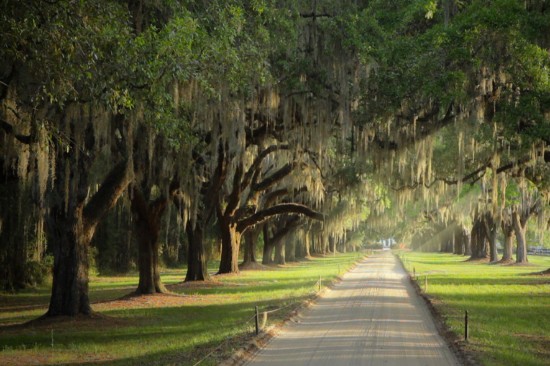
Which Charleston Plantation is the best? With numerous plantations in the area, our guide will help you choose which Charleston Plantation you should visit.
Charleston Plantations were an important aspect of the southern economy, especially before the Civil War. Most of these plantations used slave labor to grow cotton, indigo, rice, and tobacco. Many of these grand estates collapsed after the abolition of slavery, but some of these century-old properties still exist today and are excellent places to learn about the past.
Which Charleston Plantation is the Best?
- Most well-known plantation - Boone Hall
- Best and oldest landscaped gardens - Middleton Place
- Best wildlife - Magnolia Plantation
- Best preserved plantation house - Drayton Hall
- Best place for a picnic - Hampton Plantation
- Most unusual plantation - Charleston Tea Plantation
- Quick and free - Charles Pinckney National Historic Site
- Best of the best - McLeod Plantation Historic Site
- Best Place to enjoy nature - Cypress Gardens
Boone Hall Plantation 1235 Long Point Rd Mount Pleasant SC 29464
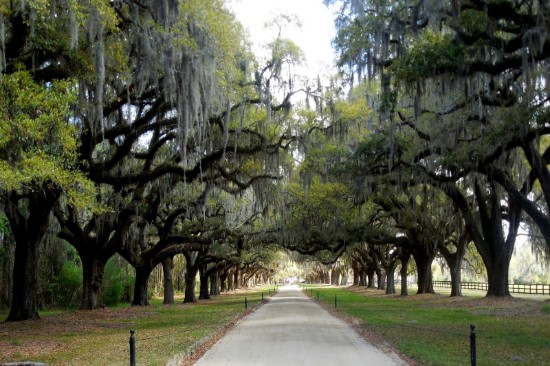
Boone Hall Plantation, established in 1681, is one of America’s oldest working farms. One of the most unique features of the plantation is eight original slave cabins on the property. The cabins have artifacts and audio exhibits showing what life was like for the slaves on the plantation.

Middleton Place 4300 Ashley River Rd Charleston SC 29414
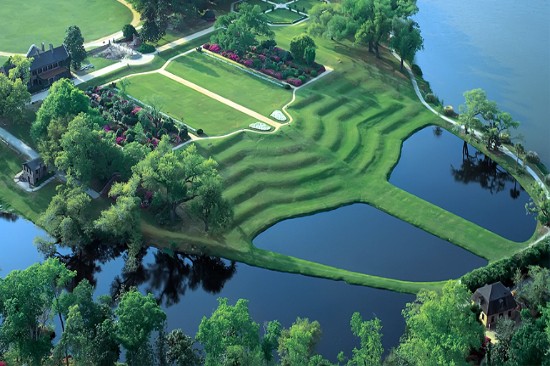
Middleton Place, an 18th century rice plantation, is located on 110 acres along the Ashley River. The plantation was once the home of Arthur Middleton, one of the signers of the Declaration of Independence. The plantation is also home to America’s oldest landscaped gardens.

Magnolia Plantation 3550 Ashley River Rd Charleston SC 29414
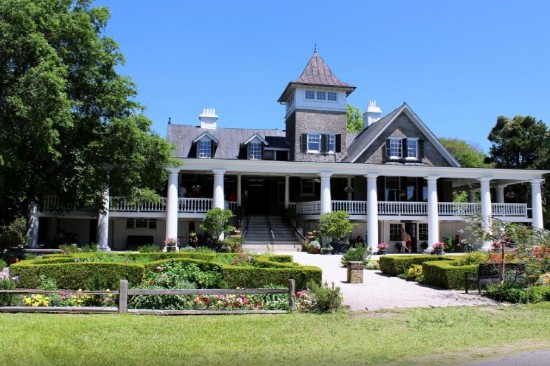
Magnolia Plantation and Gardens was founded in 1676 by the Drayton family. Attractions include a nature train tour, petting zoo, wildlife observation tower, nature trails, 18th-century herb garden, Biblical garden, horticultural maze, an African-American history tour, and a nature boat tour.

Drayton Hall 3380 Ashley River Rd Charleston SC 29414
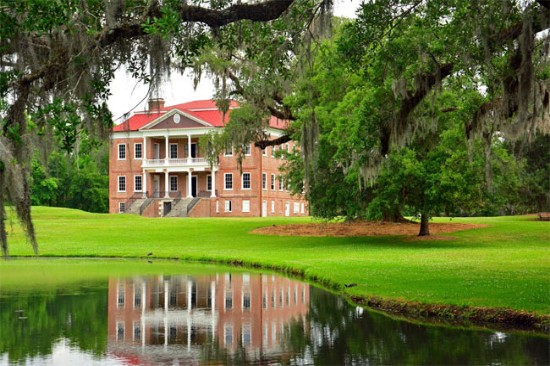
Drayton Hall, founded in 1738, is the oldest unrestored plantation house in America still open to the public. Instead of restoring the house to a specific time period, the owner chose to preserve the site. The main house remains unaltered, allowing visitors to focus on the beauty of the architecture.

Charleston Tea Plantation 6617 Maybank Hwy Wadmalaw Island SC 29487
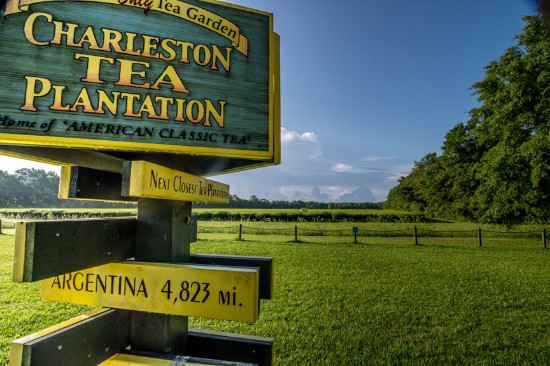
Take a free tour of this beautiful 127-acre tea plantation, the only one of its kind in the U.S. Stroll around the grounds that are home to over 300 varieties of tea plants, take a complimentary factory tour, browse through the gift shop, or enjoy lunch in the picnic area.

McLeod Plantation 325 Country Club Dr Charleston SC 29412
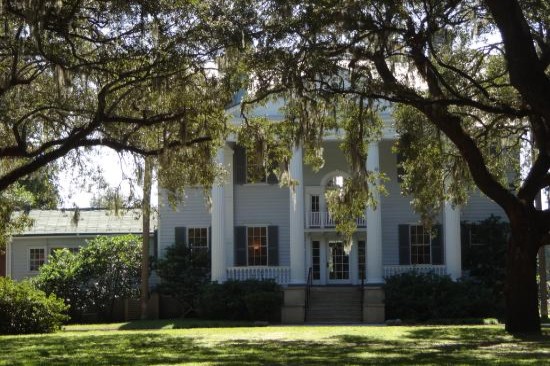
McLeod Plantation, a 37-acre Gullah/Geechee heritage site, is a living tribute to the men and women whose stories are essential to understanding Charleston’s complex past. The grounds include the 600 year old McLeod Oak, the McLeod family home, and the former slave cabins.

Hampton Plantation 1950 Rutledge Rd McClellanville SC 29458
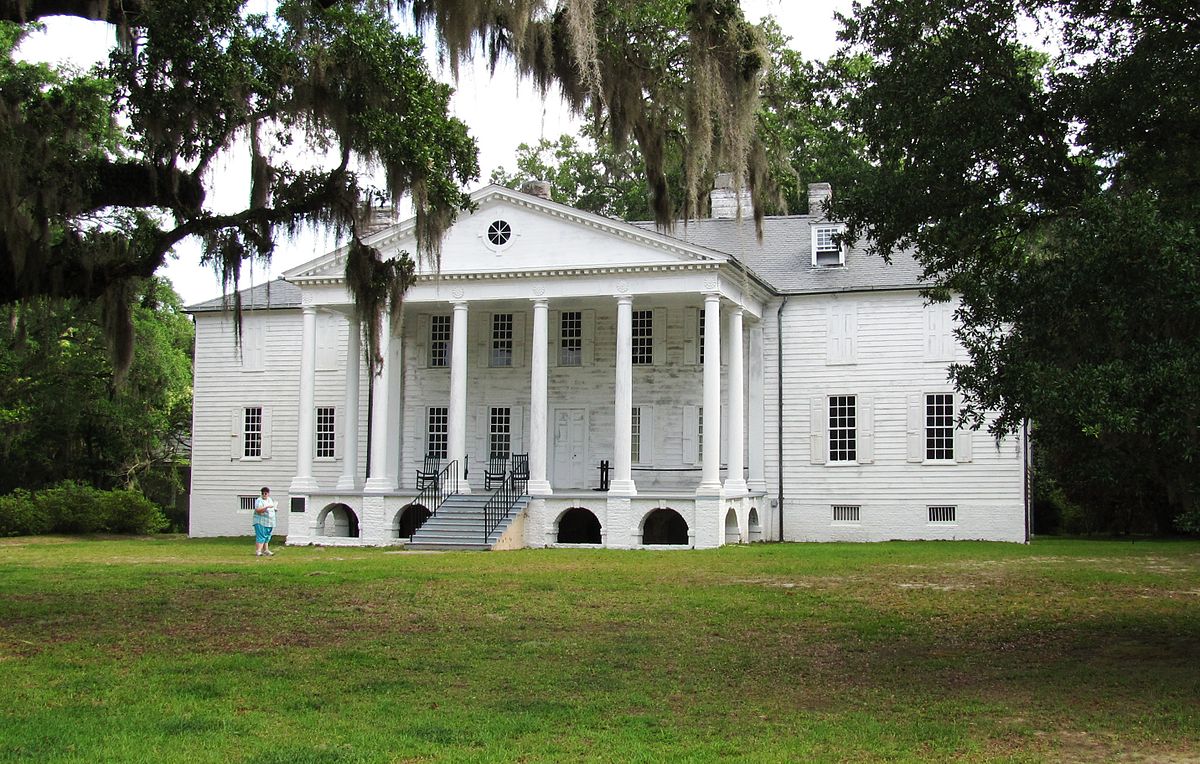
Hampton Plantation State Historic Site is a 300-acre colonial-era rice plantation established in 1735. Tour the Georgian style mansion and well kept grounds to learn about the owners and slaves once living on the plantation.

Charles Pinckney National Historic Site 1254 long Point Rd Mount Pleasant SC 29464
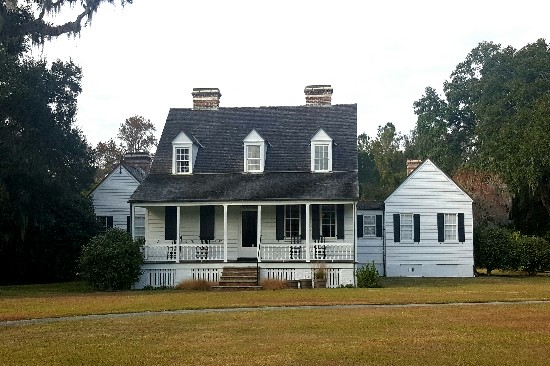
Charles Pinckney National Historic Site is the remains of the plantation, which once belonged to Charles Pinckney, the author and signer of the U.S. Constitution. Visitors can view exhibits, watch a short film, and walk along the half-mile trail that runs through the farm.

Cypress Gardens 3030 Cypress Gardens Rd Moncks Corner SC 29461
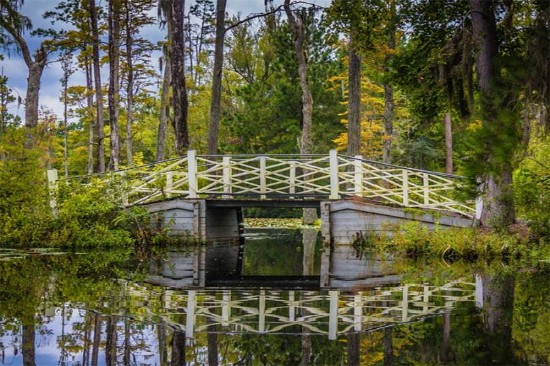
Cypress Gardens were once part of the Dean Hall Rice Plantation established in 1750. Located in the center of the gardens is the 80-acre Blackwater bald cypress swamp. Visitors can enjoy walking trails, boat rides, and nature exhibits.

More things to do in Charleston
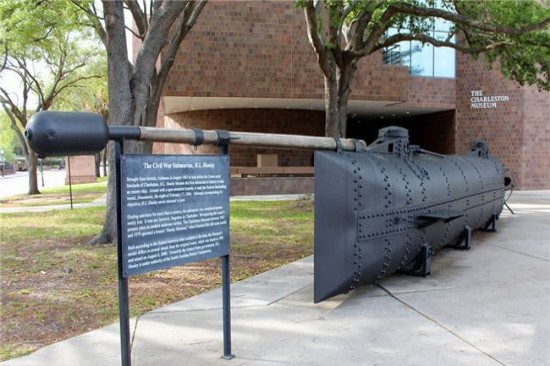
Attractions
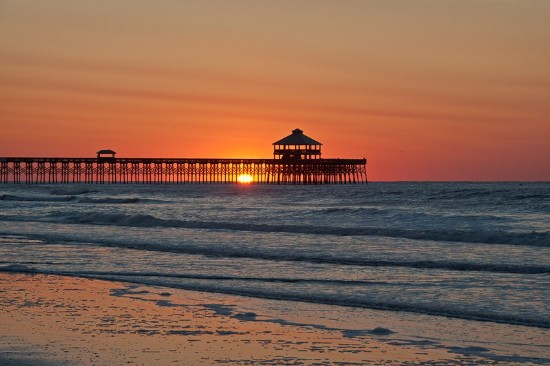
Things to do
- Things to do in Charleston SC
- Charleston Plantations
Enjoy this page? Please pay it forward. Here's how... Would you prefer to share this page with others by linking to it?Click on the HTML link code below.Copy and paste it, adding a note of your own, into your blog, a Web page, forums, a blog comment, your Facebook account, or anywhere that someone would find this page valuable. var l = window.location.href, d = document; document.write('<form action="#"><div style="text-align:center"><textarea cols="50" rows="2" onclick="this.select();"><a href="'+l+'">'+d.title+'</a></textarea></div></form>');
Back to the Top
Copyright © 2009-2024 visit-historic-charleston.com
Trending Pages
- Things to do in Charleston in April
- Things to do in Charleston in May
- Things to do in Charleston in June
- Charleston Jazz Festival
- High Water Festival
- Charleston Cocktail Week
- Mount Pleasant Blessing of the Fleet and Seafood Festival
- Charleston Events & Festivals
- Charleston Maps
- Charleston Campgrounds
- Where to Stay in Charleston

Recent Articles
Things to do in Charleston SC Final Spring Citadel Parade
May 02, 24 05:00 AM
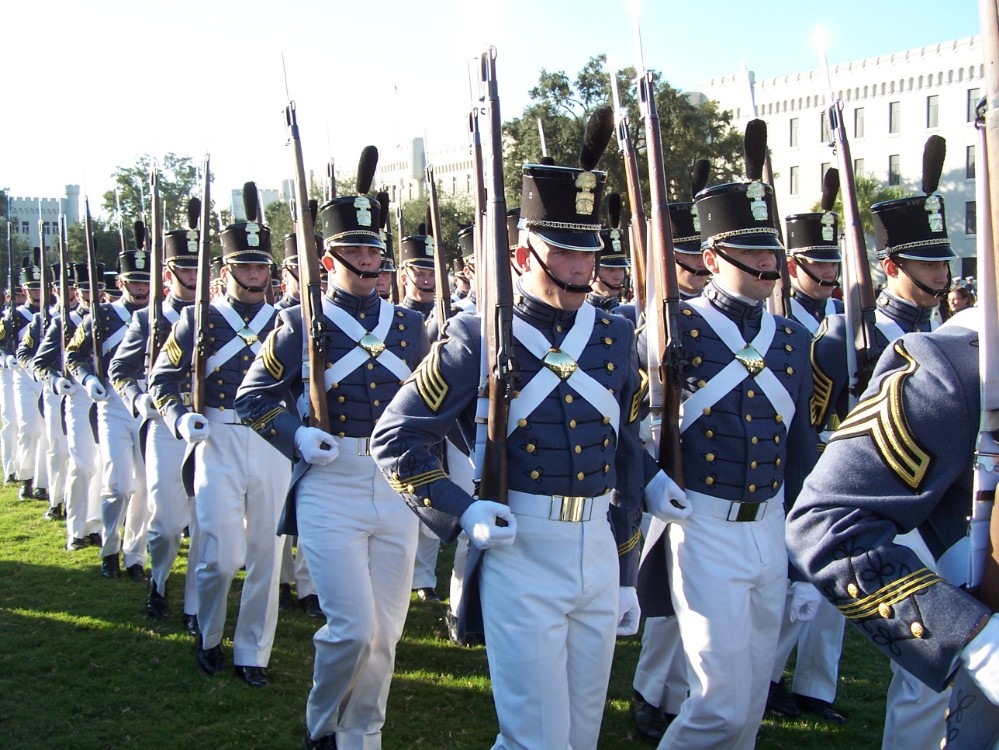
What: Citadel Parade When: Fri. May 3, 2024 Where: The Citadel Time: 3:45 pm How Much: Free The tradition of parading troops can be traced back to the time of Alexander the Great. Drill procedures and mov…
The Traveling Drifter
7 Best Plantations in Charleston to Visit in 2024

When I think of the South, plantations always come to my mind. Rows of trees with Spanish Moss hanging from them. Open fields with no one around for miles. Horses and crops as far as the eye can see. Closing your eyes and remembering the past that was here. It all takes you back in time. The best plantations in Charleston have a strong history in the low country.
Of course, that history does come with a dark past. There is no way to separate plantations and slavery. Charleston plantations have attacked it head-on. They all take a strong step in the education about the history of slavery and plantations. Never forget the ones who actually used their hands to make the plantations work and grow.
I personally love walking around these plantations and getting lost in history. No trip is complete to Charleston without visiting one or more plantations.
Short on time? Get tickets for the best Plantation tours here:
Most Complete Plantation : Boone Hall Platation
Best Garden Plantation : Magnolia Gardens
Best Plantations in Charleston
Plantations in Charleston and the Low Country have always been intertwined with history and getting lost in the imagination. The great thing about Charleston is that there are 7 plantations that you can visit and enjoy. These plantations are some of the most amazing places you will see and enjoy during your stay.
1. McLeod Plantation

Location : 325 Country Club Dr. Charleston, SC 29412
Hours of operation : Tuesday – Sunday 9 am to 4 pm
Admission :
- $20 – ages 13 and up
- $15 – ages 60+
- $6 – ages 3 – 12
- Free – under 2
Rideshare recommendation : Yes
McLeod Plantation is an important Gullah/Geechee heritage site and is part of the Gullah/Geechee Heritage Corridor in South Carolina. Located on James Island, McLeod Plantation is a former slave plantation. It sits on Wappoo Creek which flows into the Ashley River.
The early days of the plantation until The Revolutionary War was standard. It was a working plantation. When Charleston fell to the British in 1780, the plantation was used as the headquarters for General Sir Henry Clinton. After the war, the plantation went back into the hands of the owners.
In 1851, William W. McLeod purchased the plantation and grounds. The current house that stands on the ground was built by McLeod in 1858. By 1860, the plantation held 74 slaves and 23 slave cabins.
From 1861 to 1865, the house and grounds were held by the Confederates. The house was used as a hospital, headquarters, and commissary. After Charleston was lost to the Union, it was occupied by the 54 New York and 55 Massachusetts (an all-African American Regiment). After the Civil War, it was held by the Freedmen’s Bureau.
In 1878 the plantation goes back into McLeod’s ownership. It would remain this way until 1990 when it was left to the Historic Charleston Foundation. In 2011, it was sold to Charleston County Park and Recreation Commission. The house and grounds were restored and opened to the public in 2015.
2. Magnolia Gardens

Location : 3550 Ashley River Rd. Charleston, SC 29414
Hours of operation : Open every day 9 am – 5 pm
- Adults – $29
- Kids (6 – 12) – $15
- Kids 5 and under – Free
- All ages except kids under 5 – $10 each for Historic House, Nature Tram, Nature Boat, and Audubon Swamp
Arriving from Barbados to Charles Towne, Thomas Drayton, and his wife, Ann established Magnolia Plantation in 1676. Thomas and Ann were the first owners of the plantation. This would lead to 15 generations and 300 years later to still having the plantation in the family.
Magnolia Plantation was originally a rice plantation. It used African American slaves to work the rice fields. These African American slaves helped start and spread the Gullah culture in The Low Country.
In the 1840s, Reverend John Grimke-Drayton inherited the plantation and transformed it into the gardens that it is famous for today. He wanted to create romantic gardens for his wife, Julia. It’s said that John was the first to introduce Azaleas to America.
The plantation house burned down during The Civil War. The gardens opened to the public in 1870. They included many parts to see such as Barbados Tropical Garden, Camellia Collection, Cypress Lake, Flowerdale, The Long Bridge, Swamp Garden, and many more!
The slave cabins that are on the grounds are used in The Slavery to Freedom tour. They have been restored and preserved. Each cabin represents a different time period in history from slavery to freedom.
Magnolia Plantation is famously used as the background to many weddings today. It is the most visited plantation in Charleston.
- Click Here For The Best Way To Tour This Plantation
3. Charleston Tea Plantation

Location : 6617 Maybank Hwy. Wadmalaw Island, SC 29487
Hours of operation: Monday – Saturday – 10 am – 4 pm and Sunday 12 pm – 4 pm
Admission : Free
Rideshare recommendation : No
Charleston Tea Plantation now known as Charleston Tea Garden is located about 20 minutes south of Charleston. This is not a standard historical plantation, but a newer one. No slaves ever worked at this plantation.
The Tea bushes were first brought to the United States in the late 1700s from China. It took many attempts for the tea to take hold in South Carolina. Roughly around 150 years.
It wasn’t until 1888 when Dr. Charles Shepard founded the Pinehurst Tea Plantation in Summerville, South Carolina that the reality of growing and producing tea in America came true. After his death in 1915, the plantation closed and his tea plants grew wild for 45 years.
A 127-acre potato farm was purchased on Wadmalaw Island in 1963. The tea plants were transferred to this new location for growing and research for the next 24 years. In 1987, William Barclay Hall purchased the land. He decided to change the ground from research to a commercial operation for the tea.
It was at this point, The Charleston Tea Plantation was founded. During this time, his original “American Classic” tea became the first true tea to be grown in The United States.
In 2003, there was a partnership between William Barclay Hall and The Bigelow Family. The Bigelow Family purchased the garden and brought years of experience to the plantation. In 2020, The Charleston Tea Plantation changed its name to The Charleston Tea Garden.
Enjoy wandering around the grounds, taking in the sights of the garden, photos of all you want, and learning all about tea. This is a perfect, relaxing afternoon that is a must-see.
4. Drayton Hall

Location : 3380 Ashley River Rd. Charleston, SC 29414
Hours of operation : Every day except for Tuesday from 9 am – 3:30 pm
- Adults: $24
- Youth (ages 7 – 15): $10
- Children under 7: Free
Drayton Hall is a bit unique. Unlike many others on this list, it is mainly about the house. The grounds are beautiful, but the centerpiece of Drayton Hall is Drayton Hall itself.
Drayton Hall was built between the years 1747 and 1752. It was built for John Drayton Sr by his grandson, John Drayton. Knowing that his grandfather would not inherit his birthplace, Magnolia Plantation and Gardens, he built this hall on this property. Magnolia Plantation is next door to Drayton Hall.
The seven-bay, double-pile plantation house sits on 630 acres. The plantation was used to produce indigo and rice. It is believed that the grounds consistently housed 78 slaves in 13 cabins during the era of slavery.
The house has endured plenty through time. The laundry room was destroyed in 1886 during the famous earthquake. In 1893, the kitchen was destroyed by a hurricane. Though, it was preserved and prospered through seven generations of Draytons. Today, The National Trust for Historic Preservation owns the property and The Drayton Hall Preservations Trust manages it.
5. Middleton Place
Location : 4300 Ashley River Rd. Charleston, SC 29414
Hours of operation : Open every day – 9 am – 5 pm
- Adult (14 and up) – $26
- Child (ages 6 – 13) – $10
- Children under 5 – Free
John Williams, a South Carolina planter, established Middleton Place in the 1730s. Williams selected the site where the house would sit along the Ashley River. When he died, the grounds were put in a dowry for his daughter, Mary Williams. Mary Williams married Henry Middleton in 1741.
The original house was completed around 1741 and was three stories tall. In the same year, work started on the gardens. Middleton employed an English gardener and with their combined effort, made the famous waterfall lawn look. They made it work to the Ashley River and created a stream, so they could flood the rice fields.
Mary Middleton passed away in 1761 and Henry gave Middleton Place to his son, Arthur. Arthur Middleton, in 1776, was one of the signers of the Declaration Of Independence. During the Siege of Charleston, Arthur was imprisoned until 1781. British troops ransacked the property and did distinctive damage to many items in the house. The surrendering terms of the British in the southern colonies were signed at Middleton Place in 1783.
In 1786, Arthur’s son, Henry Middleton was visited by his friend, André Michaux from France. He brought with him the first Camellias to be grown in an American garden. Henry went all out to bring in imported flowers from all over the world. When Henry passed away in 1846, Middleton Place was passed on to his son, Williams Middleton.
Williams Middleton signed the South Carolina Ordinance of Secession in 1860. This was the document that separated South Carolina from the union as the first state to secede. Middleton Place was captured by Union Troops towards the end of the war in February 1865. They set fire to the house and other parts of the buildings.
Then years after, generations kept working on restoring the house and grounds. By the 1930s, the house was restored to its 18th-century appearance.
So much history in one spot. Walk the grounds and feel all that has happened here. This is why you need to visit one of the best plantations in Charleston SC.
6. Cypress Gardens

Location : 3030 Cypress Gardens Rd. Moncks Corner, SC 29461
- Adult – $10
- 65+, 911, and Military – $6.50
- Children (ages 6 – 17) – $5
- Children (5 and under) – Free
The earliest known existence of Cypress Garden was in 1700. Alexander Nesbitt was given 3,100 acres of land while still living in England. He arrived in 1725 and began to build the house and named the plantation Dean Hall. Alexander married a lady named, Mary Rutherford, and they had 3 children.
In 1753, Alexander died leaving Mary at Deal Hall. The property was supposed to go to their oldest son, but he died as well. The property was divided up between the two remaining sons.
During the Revolutionary War, in 1782, the property was confiscated because of their allegiance to Britain. In 1783, Dean Hall was removed from the confiscated list. Alexander’s great-grandson, John Nesbitt, sold the plantation to William Carson in 1821.
In 1827, a new house was built at Dean Hall. William also improved the rice fields. After William and his wife passed, the plantation was passed on to their son, James Carson. James Carson sold the plantation to Benjamin Kittredge in 1909. He modernized the house and created Cypress Gardens.
In the early 1990s, Cypress Gardens was given to Berkley County. The county still runs and maintains it today.
More than likely, you have seen this plantation before in many movies. Cold Mountain, North and South, The Notebook, The Patriot, and many more were shot at this plantation.
7. Boone Hall Plantation

Location : 1235 Long Point Rd. Mount Pleasant, SC 29464
Hours of operation : Monday – Saturday – 9 am – 5 pm and Sunday 12 pm – 5 pm
- Adults – $26
- Seniors, Military, and AAA – $23
- Children (ages 6 – 12) – $12
- Children 5 and under – Free
Arriving in 1672, Major John Boone was one of the first settlers in the Colony of South Carolina. He received the Boone Hall Plantation as a wedding gift in 1681 from his father-in-law. John Boone and his wife are ancestors of future Founding Fathers, Edward Rutledge, and John Rutledge.
The son of Major John Boone planted the iconic oak trees in 1742 in an evenly spaced layout. This created the famous look for the southern plantation. Boone Hall Plantation is one of America’s oldest plantations that is actually still in operation producing agriculture!
Sitting on an area of 738 acres, Boone Hall Plantation grounds have seasonal crop fields, as well as creeks, ponds, and wetlands to see. Among the beautiful nature here, make sure to check out the ground’s featured exhibits.
First, make sure you take a tour of the house, where the guide will explain the full architecture and history of the house. Secondly, head outside and experience Gullah culture by watching presentations about this amazing culture. The Gullah are African Americans that are descendants of slaves of The Low Country, with their unique language, stories, and culture.
Finally, the history of the daily life of slaves that worked the land of the plantation including 9 slave houses. There are many more activities to see including plenty more tours on the grounds which makes this a gem for one of the best plantations in Charleston SC.
What movies and TV shows were shot at plantations in Charleston?
More than likely you have seen a Charleston plantation before. There has been plenty of movies and TV shows that have been shot on the best plantations in Charleston. Many of the plantations have been used for multiple locations in the same movies and tv shows.
Some of the more popular movies and tv shows are North Vs South, The Notebook, Dear John, The Patriot, and Army Wives.
Get your Charleston Tour Pass today to save money on visiting plantations
For visiting the best plantation in Charleston, I recommend purchasing a Charleston Tour Pass. With this pass, you will be able to visit some plantations and other amazing locations in Charleston while saving a lot of money. Keep in mind that the tour of most plantations will last about 2 hours.
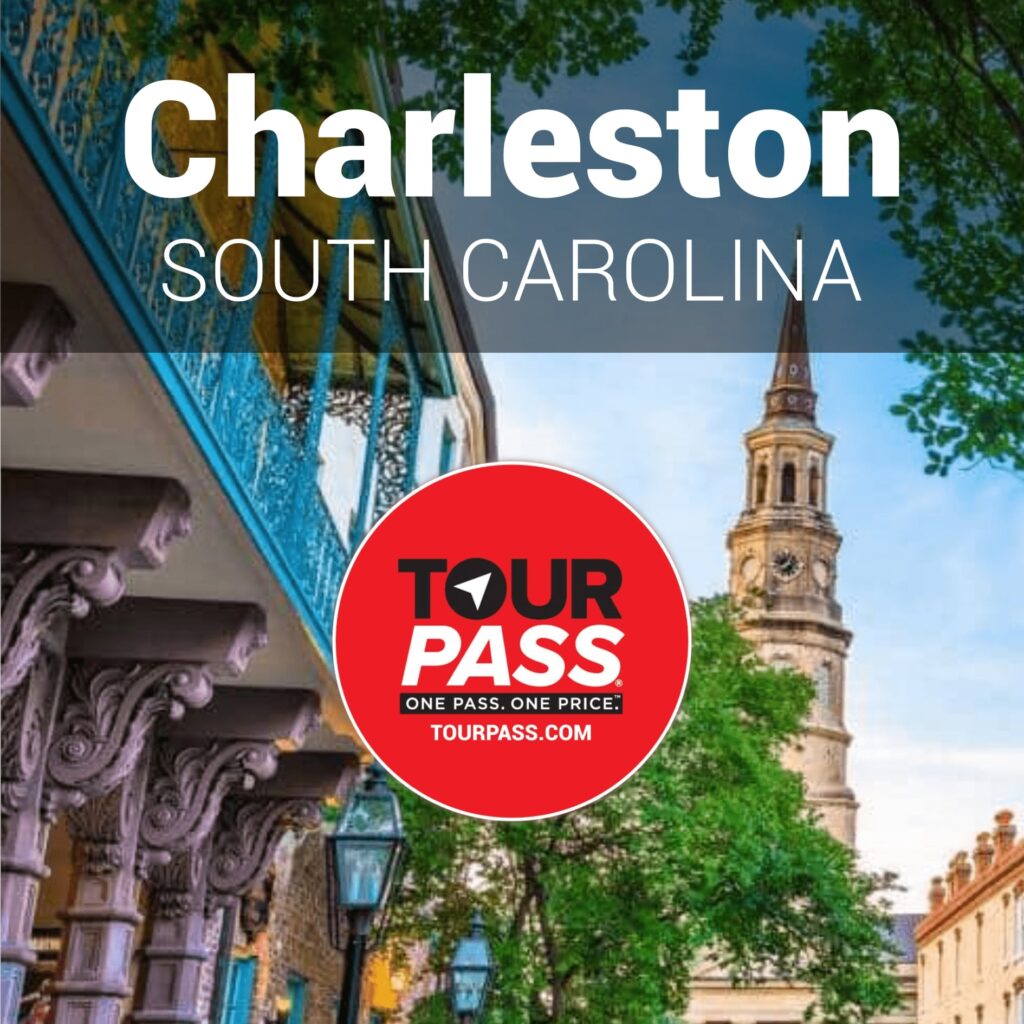
Get your Charleston Tour Pass now and save money on plantations and other amazing locations in Charleston
Have Your Bags Picked Up While You Explore With Charleston Bag Valet
Don’t want to haul your luggage all around Charleston while waiting for your flight to leave or for your hotel to be ready? Good News! Charleston Bag Valet will help you out with that. As they say, you explore, they store.
Charleston Bag Valet will pick up your bags curbside anywhere in Charleston and secure each item with a customizable tamper-proof lock. They will store your bags in an insured and secured climate-controlled environment while you explore. When you are ready, they will deliver your bags to you where you want them and when you want them. You can even have them delivered to the airport for your ease.

Get Your Charleston Bag Valet Here And Enjoy Your Time Without Your Bags
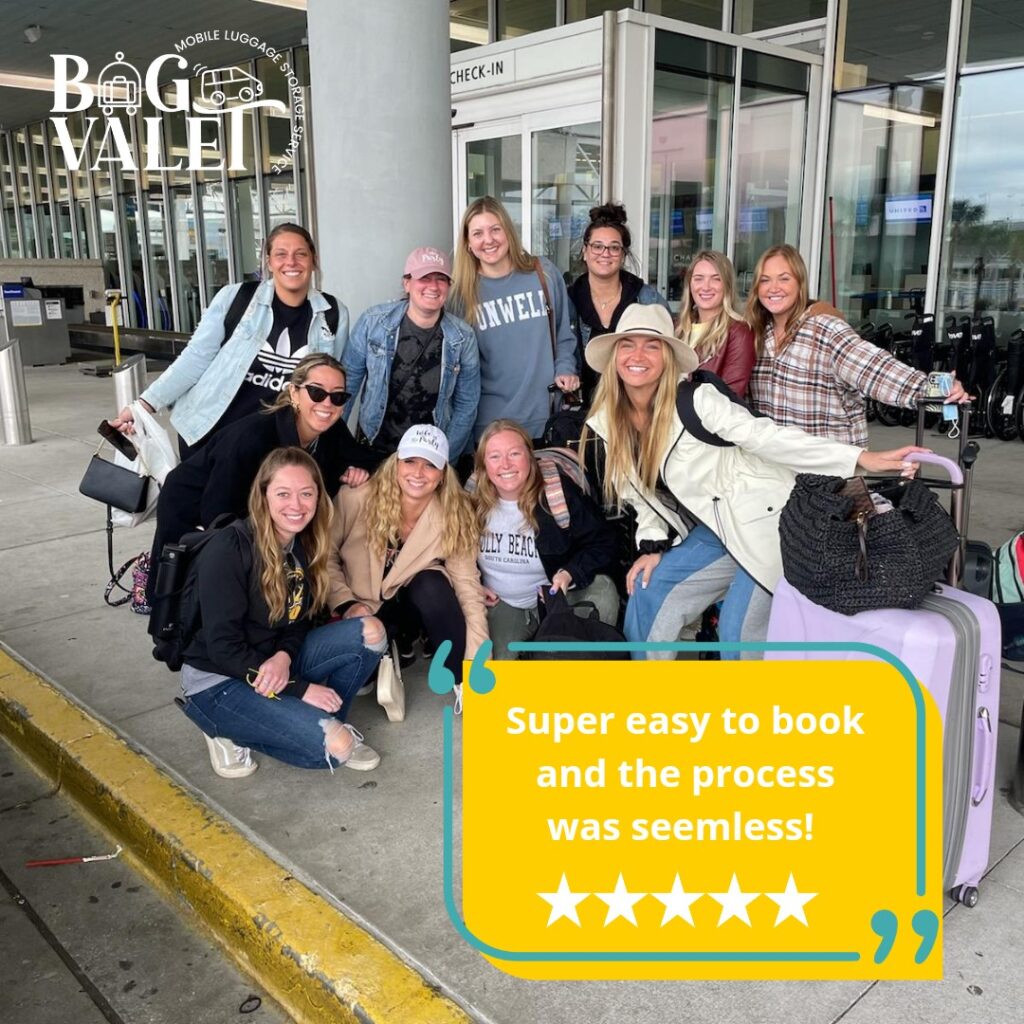
Can you stay at any of the best plantations in Charleston?
There is one plantation that you can stay at, The Inn at Middleton Place . They created a plantation experience by staying at their location. You will be staying on the plantation grounds with everything walkable to each other.
They have amazing amenities at this Inn. You will receive complimentary admission while staying, a daily buffet breakfast, an evening cap, and much more. Stay here to get a truly different Charleston experience.
Where to stay in Charleston?
There are many places to stay in Charleston, being this is one of the most popular destinations, and hotels are all over the place. I have a couple of hotels that that will put you in the downtown area, but keep you in the center of all the best plantations in Charleston.
- Harbourview Inn
Harbourview Inn is located in the heart of historic downtown Charleston. You are in walking distance of just about everything. This hotel is across the street for Joe Riley Waterfront Park which is a great park on the water.
- Click here to check for the lowest prices at Harbourview Inn
- The Mills House Wyndham Grand Hotel
The Mills House is in a historic building also in the heart of historic downtown Charleston on Meeting Street. You will be within walking distance of many amazing restaurants on Queen Street. You will be located around several historic landmarks that are not to be missed.
- Click here to check for the lowest prices at The Mills House Wyndham Grand Hotel
Which Plantations are near downtown Charleston?
There are no plantations located in downtown Charleston. All the plantations are on the outskirts of the downtown area. The closest one is McLeod Plantation followed by Boone Hall Plantation in Mt. Pleasant.
The next three, which are on Ashley River Rd, are Drayton Hall, Magnolia Gardens, and Middleton Place would be the next closest.
Followed by the 2 that are farthest away, Cypress Gardens and Charleston Tea Plantation.
How to get to the best plantations in Charleston?
Since we stated above that there are no plantations located in downtown Charleston, there are none that are within walking distance.
The best way that you should get to the plantations would be by renting a car. This will save you money in the end since the plantations are outside of downtown Charleston.
The second best way, use rideshares to get to and from the plantations. Because the plantations are a little bit distance from downtown, the price will vary and can become pricey. But it is nice because you don’t have to deal with parking.
Conclusion: Best Plantations in Charleston
As you see, you can easily spend an entire vacation just visiting the best historic plantations in Charleston. Seeing and visiting plantations have a unique experience and separates the South from the rest of the country. Walking the grounds and learning the history, the good and bad is an eye-opening life event.
Charleston did a really great job at tackling their history and making it a learning lesson and educating everyone that visits. The owners of the plantations have done an amazing job with their preservation of the grounds and bringing the history and stories alive for everyone to enjoy.
Check out my other posts about Charleston here. 11 Best Historic Sites in Charleston South Carolina , What 13 things should I not miss in Charleston SC , and 10 Best Places Off The Beaten Path In Charleston SC 2022 .
- Find a great flight at a great price through Booking.com They have many options for Flights, Cars, Hotels, and more! Make sure to book your trip today!
- Head over to Amazon.com to get your needed travel items. Pick up the travel backpack that I use for my travels or my post about what to bring for a day hike . Take a look at the items to bring along in a 2-3 day backpacking trip with my post What To Pack In Your Hiking Backpack . Use this or pick up more items that you will need.
- By purchasing from the provided links, a small commission is earned to help keep the website running. I thank you for your support and for following the website.
Shaun Hammond is the owner and author of The Traveling Drifter, a travel blog that has a focus on Charleston, South Carolina, Cruising, and Hiking/Backpacking. Shaun is a has lived in Charleston since 2007 and is an expert about the city. He has spent much of his time exploring and discovering Charleston to help travelers and locals get the most out of their Charleston experience.

Top 5 Plantation Tours In Charleston SC: Old South Charm
If you’re looking for the best Plantation Tours in Charleston SC, you’re in luck. I ‘ve visited Charleston SC many times and have toured every plantation in the Charleston area (and beyond).
Although there is plenty to do in Charleston itself, you should put a few of the surrounding plantation tours on your must-visit list. These plantations all offer something different, from immersive historical narratives to breathtaking garden landscapes.
Whether you’re a history buff, architecture enthusiast, or garden lover, this guide aims to steer you toward the most rewarding plantation experiences Charleston has to offer.
Past Lane Travels contains affiliate links and is a member of the Amazon LLC Associates Program. If you make a purchase using one of these links, we may receive compensation at no extra cost to you. Read our disclaimer for more information.
My Top Picks: Plantation Tours In Charleston SC
#1 TOP PICK

⭐️⭐️⭐️⭐️⭐️ BOONE HALL ✔️ Beautiful Grounds ✔️ Preserved Slave Quarters 🚫 No Antebellum House

MIDDLETON PLACE ✔️ Astounding Gardens ✔️ Home Of A Founder ✔️ Can Spend All Day

MAGNOLIA PLANTATION ✔️ One Of The Oldest ✔️ Garden & Swamp Tour ✔️ Incredible History/Wildlife
Charleston isn’t the only place with plantation tours. For a unique tour full of natural beauty, check out the Bulow Plantation Ruins in Florida . This prosperous sugar plantation was burned by the Seminoles in the 1830s.
My Top 5 Charleston Plantation Tours and Gardens
These are my favorite Plantation Tours in Charleston SC, but not in any particular order. They are all worth seeing!
1. Middleton Place
4300 Ashley River Road, Charleston, SC

Middleton Place Plantation is a historic plantation and garden located just outside Charleston, along the scenic Ashley River.
The primary attraction at Middleton Place is its meticulously landscaped gardens, which are considered some of the oldest — and most beautiful — in America. The gardens feature a wide flowering trees and plants, including camellias, azaleas, magnolias, and an impressive collection of antique roses.
Related Post: Enjoy “old house” tours? Check out the Vanderbilt Mansion in Hyde Park NY, a glamorous mansion from the Gilded Age.
Visitors can explore acres of picturesque ponds and camellia alleys while taking in the breathtaking views of the Ashley River.
In addition to the gardens, this Charleston Plantation tour also features guided tours of the historic house, which was once the home of Henry Middleton, a signer of the United States Declaration of Independence, and his descendants.

The house tour provides a glimpse into the lives of the Middleton family and their significant contributions to American history. Visitors can explore the period furnished rooms and learn about the plantation’s role in the history of South Carolina.
What I Like : You can definitely spend a few hours at Middleton Place walking the beautiful landscaped gardens. There is also a petting zoo, restaurant, and period craftsmen throughout the grounds.
Plan ahead and leave enough time, because this is one of the most expansive Charleston plantation tours.
Book a Middleton Place Tour
2. Boone Hall Plantation
1235 Long Point Road, Mount Pleasant, SC

Boone Hall Plantation was the first Plantation tour in Charleston SC that I took, so it stands out to me as one of my favorites.
Located in Mount Pleasant, South Carolina, it is a historic gem that features a long oak-lined driveway that is breathtaking when the azaleas are in bloom.
With a history spanning more than three centuries, this plantation has witnessed dramatic changes, from its establishment in 1681 to its role in the antebellum era as a working plantation.
The mansion itself is not as spectacular as others on this list, but the grounds are impressive. Not built until 1936, the Boone Hall mansion serves as the backdrop for guided tours.
It’s the beautiful avenues of oak trees, draped with Spanish moss, that makes this one of my top plantation tours in Charleston SC.
Boone Hall Plantation also offers a variety of tours to cater to different interests. The “Black History in America” tour delves into the experiences of enslaved Africans and their descendants, shedding light on their resilience and contributions to American culture.
They also have a “Gullah Culture” tour that explores the unique Gullah Geechee heritage, a rich blend of African and Southern traditions that has shaped the Lowcountry for centuries.
Additionally, you can explore the meticulously landscaped gardens and original slave cabins.
What I Like : Boone Hall has some of the only original slave quarters still standing, which provides a better understanding of Plantation life. The grounds are also beautiful, especially in the spring.
Book A Boone Hall Plantation Tour
3. Drayton Hall
3380 Ashley River Road, Charleston, S.C.

Drayton Hall’s history dates back to 1738, when it was established by John Drayton. The plantation played a pivotal role in the development of South Carolina’s rice culture.
My favorite thing about Drayton Hall, is that , unlike many other historic sites, this Charleston plantation has been preserved without undergoing significant architectural alterations or reconstructions.
Guided tours take visitors through the stunning Georgian-Palladian mansion, showcasing its remarkable architecture and details that offer a glimpse into the lives of the Drayton family.

Beyond the Drayton Hall mansion, visitors can explore the beautiful gardens and grounds, which offer serene views of the Ashley River and provide insight into the horticultural practices of the era.
Drayton Hall is notable for being the oldest unrestored plantation in the United States that is open to the public. It is a National Historic Landmark that stands as a testament to the enduring legacy of Southern plantation culture.

What I Like: There are some memorable stories surrounding Drayton Hall during the Civil War that I ended up using in my novel Shades of Gray . This makes my list of favorite plantation tours in Charleston SC because of its history and back story.
Book A Tour at Drayton Hall
4. Magnolia Plantation and Gardens
3550 Ashley River Road, Charleston, SC

I’m not sure I can describe Magnolia Plantation and Gardens . Founded in the late 17th century, it is one of the oldest and most renowned plantations in the American South.
Initially established by Thomas and Ann Drayton in 1676, it has been home to generations of the Drayton family and has played a significant role in the development of rice cultivation.
Treat yourself to a chauffeur, plus admission to Middleton Place and Magnolia Plantation, AND box lunch.
What sets Magnolia Plantation apart is its breathtaking gardens, which are among the oldest public gardens in America.
I was lucky enough to finally visit when everything was in bloom in March and it is stunning! The gardens are a blend of formal and informal designs, featuring a wide variety of plant species, including azaleas, camellias, magnolias, and countless other colorful flowers and trees.
Guided tours and educational programs provide insights into the plantation’s history. Visitors can explore why Magnolia has earned the title of “One of America’s Most Beautiful Gardens.
For an unforgettable plantation visit, check out the Kingsley Plantation in Jacksonville, Fla , where an African queen became a plantation owner.
What I Like : I never realized how lovely a swamp could be until I visited Magnolia Plantation. This tour of the grounds includes arched bridges in a wonderland of flowering plants. The beauty is breathtaking, and it’s why Magnolia Gardens is on my list of best plantation tours in Charleston SC.
Book a Tour at Magnolia Plantation and Gardens
Don’t want to drive? You can book a tour to Magnolia Plantation with transportation from Charleston.
5. McLeod Plantation Historic Site
325 Country Club Drive, Charleston, SC

This 37-acre plantation on James Island dates back to 1851. It’s now a Gullah/Geechee heritage site that offers an honest look at what life was like for the enslaved and emancipated African Americans who worked there.
Besides the Georgian-style plantation home, the site also includes slave quarters, a cotton gin house, and a Gullah cemetery.
It’s a great opportunity to tour a mansion house and visit the slaves quarters as well. Every tour guide emphasizes a different aspect of life on the plantation.

What I like : All of the plantations explain the contrast between slave owners and slaves, but McLeod Plantation really dives into the complex relationships between the two groups.
I also loved the ancient live oaks at McLeod, especially those near the slave quarters. It’s amazing to think about what those trees witnessed.
Book a tour at McLeod Plantation
Other Charleston Plantation Tours and Activities
Charleston tea garden.
This offers a fun and educational experience like no other. Witness the process of growing and making tea while enjoying a free factory tour, exploring a unique gift shop, taking in scenic views, and sipping all the tea you desire!
Charles Pinckney National Historic Site
Explore the preserved estate, once owned by a Founding Father and now under the care of the National Park Service. You can wander the grounds, visit the historic cottage, explore exhibits, watch a film, shop at the museum store, and attend various programs—all for free!
Charleston Horticultural Society
They offer a variety of programs, including signature lecture series, seasonal workshops, and exclusive garden tours, all aimed at celebrating the heritage of horticulture in the South Carolina Lowcountry.
Cypress Gardens
Visitors can enjoy wandering along miles of garden trails, paddling through cypress swamps, relaxing in a greenhouse adorned with butterflies and flowers, and discovering exhibits featuring native and exotic reptiles alongside a freshwater aquarium.
Other Charleston Tour Packages
Charleston architecture and history tour.
There’s probably no other city as beautiful and historic as Charleston, in the U.S. Experience the best of Charleston on a history and architecture walking tour.
Old South Carriage Historic Horse and Carriage Tour
You can’t really see Charleston correctly without going on a historic carriage tour.
Experience more than 300 years of history on this guided carriage tour of Charleston. See the many mansions, churches, and gardens as your horse-drawn carriage tour covers more than 2.5 miles and 30 blocks of historic Charleston.
Other Tours In Charleston SC
Charleston city sightseeing bus tour, uss yorktown ghost tour.
Experience a special behind-the-scenes tour of the aircraft carrier Yorktown, granting exclusive access to parts of the ship typically off-limits to the public. The price of this tour includes admission.
Charleston Ghost and Dungeon Walking Tour
Explore the darker side of Charleston and experience some of the city’s most eerie sites with a 90-Minute Ghost & Dungeon Nighttime Walking Tour with Entry to Provost Dungeon! Wind through the Historic District’s dark corridors and graveyards, and hear spooky tales of ghosts, voodoo, local superstition and famous haunted spaces from your local guide.
Plus, many more highly-rated walking tours !
Two other plantations that I love in South Carolina are Hopsewee , also home to a Declaration of Indpendence signer, and Hampton Plantation , where George Washington visited.
I also recommend Oak Alley and Nottoway in Louisiana.
You’ll Love Plantation Tours in Charleston SC
As you can see, all of the plantation tours in Charleston SC have their own particular historical significance and charm.
Charleston’s plantations stand as living testaments to the city’s storied past, offering visitors a chance to connect with history, nature, and culture all in one place.
Whether you’re drawn to the stunning landscaped gardens, the centuries-old architecture, or the stories of those who once lived on these grounds, Charleston’s plantations provide a window into the past.
If you like plantation tours, there are some great ones in Louisiana, including Laura Plantation and the Houmas House . One of my favorites though is Nottoway , also called the White Castle.
Where To Stay In Charleston
Want to find a hotel close to one of the plantation tours in Charleston SC?
Author and Travel Blogger
Jessica James is an award-winning historical fiction author and life-long Gettysburg resident who loves sharing her passions for history and travel. She enjoys exploring the back roads of the USA and uncovering stories about unique destinations, cultures and almost-forgotten history.
Leave a Reply Cancel reply
Your email address will not be published. Required fields are marked *
Save my name, email, and website in this browser for the next time I comment.
Top 5 Must-See Plantations in Charleston, SC (From a Local!)
- Post author: Rachel Means
- Post last modified: 2023-10-25
Charleston, South Carolina radiates Southern charm out of every cobblestone street, brightly painted row home, and Spanish moss-covered live oak.
Visiting one of the many must-see plantations in Charleston is surely at the top of your list of things to do when you get here.
But how do you choose which to visit? There are 5 historic plantations in the Charleston area, and each one shows off its unique story in its own special way.
So today, we’ve done all the research for you so you can choose the best option for your visit!
I live here and have visited all the Charleston plantations in every season. I know which is best for flower seekers, history lovers, and everyone in between.
Let’s dig in to the top 5 must-see plantations in Charleston so you can choose the right one for you!
This post may contain affiliate links. As an Amazon Associate and associate of other programs, I earn from qualifying purchases. This means if you click a link and make a purchase, I may earn a small commission at no extra cost to you.
Table of Contents
Choosing the Best Plantation to Visit for Your Charleston Vacation
How did I decide which were the best plantations in the Charleston area? Price and unique features are the most important factors, in my opinion.
But I’m an avid planner who thoroughly researches destinations before I go anywhere, so we’ll look at all of the following:
- Cost: entrance fees and additional tour fees
- Distance from downtown Charleston
- Unique features
- Dining options
- Shopping options
All you have to do is read the description of each and pick your favorite that works with your budget, timeframe, and hotel location!
Quick Picks
- Most Well-Rounded: Middleton Place or Boone Hall
- Best for Flowers: Middleton Place or Magnolia
- Best for History/Info: McLeod, Boone Hall, or Middleton Place
- Preserved As-Is: Drayton Hall
- Best with Kids: Boone Hall or Magnolia
- Has a Petting Zoo: Magnolia
- Has a Farm Patch/Corn Maze: Boone Hall
- Closest to Downtown: McLeod or Boone Hall
Must-See Plantations in Charleston: Ranked
I love visiting all of the Charleston plantations and have been to each multiple times over the years. But, not everyone has time to see all five in one trip.
If you have to choose just one, go with either Middleton Place on the Ashley River or Boone Hall in Mount Pleasant.
Both represent what these plantations would have looked like in their respective time periods and have a good mix of beautiful nature, historic buildings, and exhibits addressing slavery.
Magnolia, just down the road from Middleton Place, also has a good mix with a lot to see, but it charges individually per activity so you pay more to see it all.
Here’s my personal rankings of the 5 must-see plantations in Charleston.
- Middleton Place
- Drayton Hall
Remember, I recommend them all if you have the time .
Let’s look at each plantation in turn and discuss the pros and cons so you can decide for yourself which one you’d rather visit.
The Top 5 Must-See Plantations in Charleston, SC
These five plantations are all within easy driving distance of downtown Charleston. There are no plantations downtown.
I recommend you have a rental car to get around, or you choose a tour that visits the must-see plantation of your choice.
Rideshares are easy to find to take you to any of the plantations, but they can be much harder to get to take you back , depending on time of day and which plantation you visit.
The map below will also help you easily find which plantation is closest to your hotel.
Click the star to the right of the map title, and it will save this map to your Google Drive! To see the map legend, click the sliding bar icon to the left of the map title.
1. Middleton Place National Historic Landmark
Beautiful formal gardens are the focus of this Ashley River plantation, bursting with color almost all year round. Azaleas take over in early spring, and camelias steal the show in winter.
A wing of the main house remains, as well as a working stableyard and Eliza’s House , a former slave cabin with a story.
Middleton Place ranks #1 out of all the must-see plantations in Charleston, in my opinion, because it checks all the boxes: history, beauty, amenities, price.
You can spend as little as a few hours here and still get in a couple of tours that cover both the history and the beautiful landscape, all included with your admission.
If you want to spend the whole day here, there’s a very good restaurant serving both lunch and dinner and plenty of gorgeous gardens to wander around and photograph.
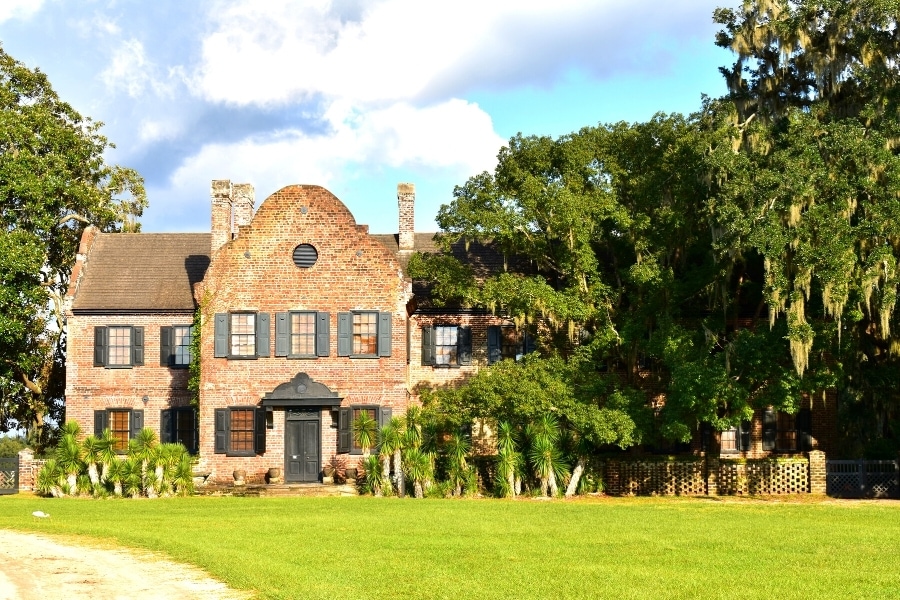
General Admission & Cost
Middleton Place includes a lot in their general admission, which is another reason it’s one of my favorite plantations to visit in Charleston.
Check their website for the most current prices and to order tickets ahead .
Good to Know : You get a small discount if you order ahead online rather than at the gate.
Adults (age 14+) are around $30 per person, kids under 6 are free, and kids 6-13 are about $10. Students 14+ with valid student ID can get half price admission.
General admission includes the following:
- Self-guided tour of the Gardens and Grounds, including the Stableyard
- Guided Garden Walking Tours , discussing the history of the gardens and the flowers and plants you’ll see across the property
- Beyond the Fields: Enslavement at Middleton Place Tour , not a walking tour and very informative
- Meet the Historic Livestock Breeds Tour , discussing the history of the original livestock breeds and why they were brought to the plantation
Additional Tours & Cost
Some extra experiences are available for an additional fee, ranging from affordable to include a house tour to luxury for a VIP experience.
- Self-guided tours of the Middleton Place House Museum are available for an additional $15 per person when purchased ahead online.
- Edmondston-Alston House Combo tickets for $49 per adult. The two homes were owned by the same family and are now managed by the same Trust.
- Drayton Hall Combo tickets for $50 per adult. Right down the road from each other, it’s easy to see both in one day.
- Middleton Place VIP Tour Experiences are available for $300 for 2 guests. This premium experience includes a private 45 minute carriage ride around the property, general admission and House Museum entrance, a $50 credit for lunch at the Middleton Place Restaurant, and an itinerary planned by a personal host. Call ahead for this one!
Distance from Downtown
30 minute drive from Charleston, closest to West Ashley hotels.
Good to Know : The Inn at Middleton Place is an on-site hotel that includes admission to Middleton Place for every day of your stay.
Unique Features
- America’s Oldest Landscaped Gardens , gorgeous formal gardens along the banks of the Ashely River
- Eliza’s House , an original structure with award-winning historical exhibits about slavery on the Middleton Plantation
- The Middleton Oak , an enormous 500+ year old oak tree on the property
- Butterfly Lakes , installed in the terraced gardens by the river
Dining Options
The Middleton Place Restaurant is a more upscale restaurant experience than you’ll find at any of the other Charleston area plantations.
Serving lunch and dinner menus using seasonal, locally-sourced ingredients, this usually means your choice between shrimp, catfish, pulled pork, and fried chicken. Vegetarian options available.
The Garden Market also has cheap eats and ice cream.
If you want to go old school romantic, order a personalized picnic basket 24 hours ahead of your visit. Middleton Place chefs will create a custom Lowcountry picnic basket for you and your sweetie to enjoy wherever you like on the property, utensils and picnic blanket included!
Both of these options are open to the public and accessible without purchasing admission to the estate.
The Museum Shop is Middleton Place’s gift shop, located by the parking lot. Get all your souvenirs here!
The Garden Market and Nursery sells home and garden items, many made on-site, or perhaps you’d rather take home your own camellia plant for your garden!
2. Boone Hall Plantation & Gardens
A very popular Charleston tourist attraction, arguably the most visited plantation, you’re sure to have seen Boone Hall at the top of many a Charleston sightseeing list .
Some come here just for its famous Avenue of Oaks , and I can attest that it’s a beautiful sight.
You drive down the middle of the dirt driveway, lined and shaded by dozens of enormous live oaks with Spanish moss waving in the breeze. It’s worth seeing for yourself.
Festivals throughout the year means there’s no bad time to visit, whether you’re interested in oysters, strawberries, pumpkins, or Christmas trees!
Don’t miss a Gullah Culture presentation from descendants of the enslaved people that lived here. This isn’t just a tour by a guide; these are living descendants!
The only reason I ranked this one second is because the main house has been modernized and is preserved as the last residents left it, circa somewhere in the mid-1900s.
The historical exhibits here are better and more thorough than the ones at Middleton Place, but the gardens and flowers are much better at Middleton.
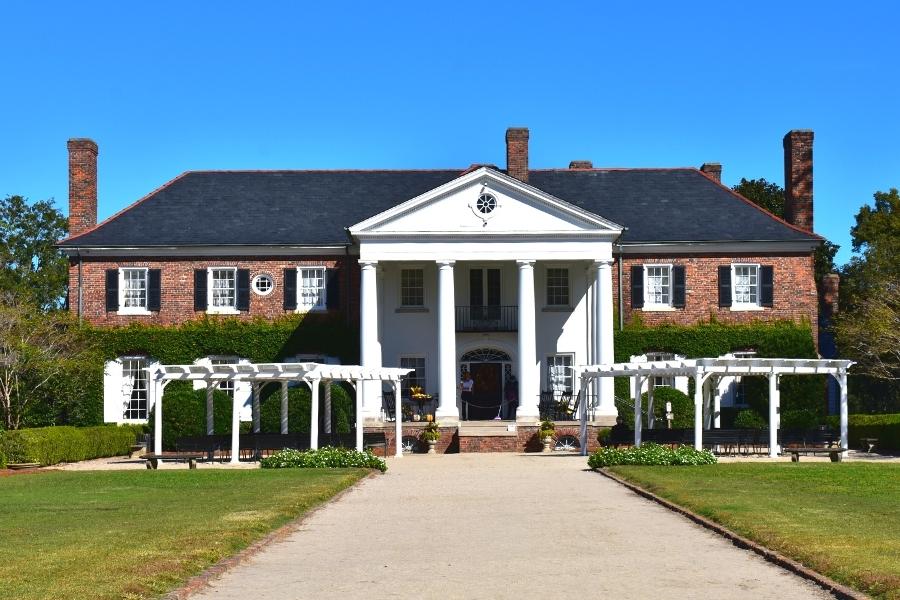
All tours and activities are included in general admission for Boone Hall Plantation, which is a very nice perk. One-and-done pricing is my favorite kind of ticket.
Check the Boone Hall website for their latest schedule of events and prices .
Adults (13-64) are $28 per person, kids under 6 are free, and kids 6-12 are $12. Seniors (65+), military, and AAA all receive a small discount.
- Guided tour of the first floor of the House
- Self-guided exploration of the formal gardens, grounds, and stable yard
- Gullah Culture presentations , presented by actual descendants who still live in the area!
- Plantation Tractor Tours , 30-45min ride around the entire property, great for getting off your feet
- Self-guided tour of the Black History in America exhibit , award-winning exhibit through the original slave cabins
- Self-guided visit of the Butterfly Pavilion
If you are interested in other Charleston attractions, Boone Hall offers combo tickets with the following, generally $60 per adult and around $35 for kids.
- Fort Sumter National Monument
- Charleston Harbor Boat Tours
- Spiritline Cruises Boat Tours
Festivals also usually have their own separate fee.
For example, purchasing admission to Boone Hall plantation does not give you admission to the Boone Hall pumpkin patch, and vice versa.
The following are the annual festivals held at Boone Hall. Check the Boone Hall website for annual updates on hours and prices.
- Lowcountry Oyster Festival
- Lowcountry Strawberry Festival
- Stars and Guitars
- Boone Hall Pumpkin Patch
- Boone Hall Fright Nights
- Christmas at Boone Hall Plantation
- Uncorked – The Ultimate Christmas Holiday event
- Wine Under the Oaks
25 minute drive from Charleston, closest to Mount Pleasant hotels
- Gullah Culture presentations by actual Gullah descendants are unique to Boone Hall.
- Outstanding Avenue of Oaks
- Still a working farm
The Butterfly Café and gift shop sells snacks and drinks, but no other food on-site. Feel free to bring your own food and use the picnic tables though!
Your ticket also allows you to leave the property for lunch and return same day to finish your visit. Nearby Mount Pleasant has many fast food chains and plenty of nicer sit-down restaurants.
A small gift shop offers a variety of items to commemorate your visit.
Don’t Forget Your FREE Must-See Charleston Plantations Cheat Sheet Guide!
3. drayton hall plantation.
This former plantation is full of surprises, despite seeming to have the least amount to see. They focus on historic preservation , not restoration.
Drayton Hall is the only Ashley River plantation house that was not burned to the ground when the Union Army arrived during the Civil War, possibly because the home was being used as a hospital.
After the war, the land owners left for Texas but many of the former slaves stayed on the property , eventually becoming workers for the phosphorous mining company that was established here.
I’ve been here several times just to take photos in different lighting and to find new details inside the house. I hear new stories from the staff every time!
The complex, rich history and the incredible left-in-place architectural details of the house are why I ranked this third, but it is lacking in other amenities.
Pair a visit here with another plantation like Middleton Place (just down the road) or Boone Hall (on the other side of town), and you’ve got a good overview of Charleston’s best plantations.
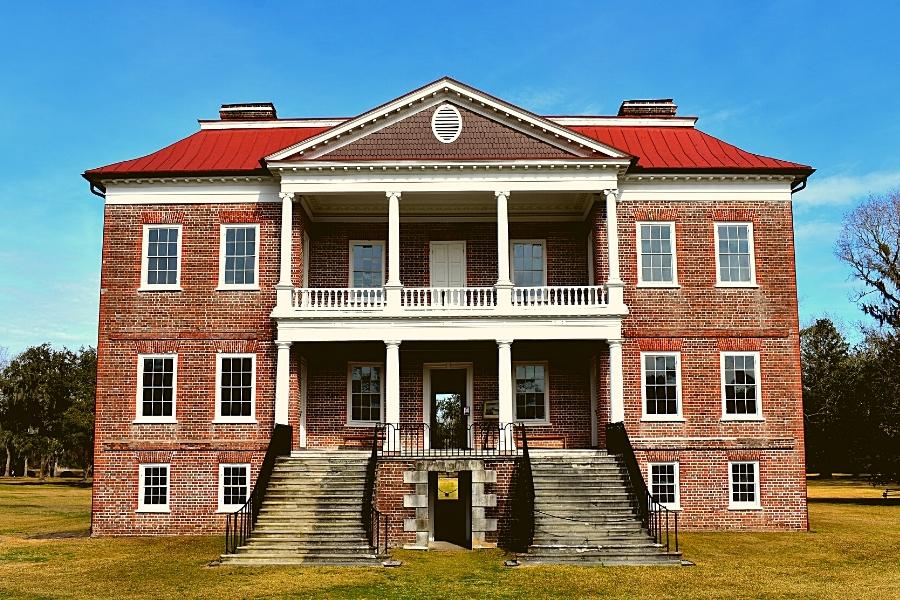
Drayton Hall is the only plantation that takes your ticket before you park. You can buy tickets at the gate (no cash), but I always find it easier to buy them online ahead.
Check their website for current rates . Last I checked in late 2023 it was $29 per adult (16+), $15 per kid (7-15), and ages 6 and under free.
Good to Know : Bring earbuds and a fully charged cell phone for the grounds audio tour.
- Self-guided tour of historical artifacts on display in the visitor center gallery
- Guided House Tour , preserved as-is with no reconstruction or renovation
- Self-guided audio tour of the Grounds
- Self-guided tour of the Caretaker’s House , a fascinating history of the former slaves that stayed on property after the war to “watch over the house.”
- A Sacred Place: African American Cemetery , left in its natural state (not manicured) per the wishes of the last resident caretaker
Pro Tip : They offer a Grounds & Galleries only Admission, but I don’t recommend it. If you’re driving out here, you should absolutely see the House, too, if you’re able to navigate stairs.
Everything is included with your All-Inclusive House Tour ticket.
As I mentioned above, I don’t recommend the Grounds & Galleries Only ticket option unless you’re unable to navigate stairs.
If you want to see both Drayton Hall and Middleton Place, they have a combo ticket.
You don’t have to see both in one day, either. Once you’ve activated the ticket at the first location, you have 2 more days to see the other location.
25 minute drive from Charleston, closest to West Ashley hotels
Drayton Hall is unique in that the Trust has not restored anything to a specific time period.
The buildings and grounds are all stabilized and safe, but preserved in the state they were in when the Trust acquired the property.
So, you can still see where the Drayton family members marked the heights of their growing children on the doorframe. Unique details like this are hidden all over the property.
No dining on-site. The gift shop sells several food products but nothing substantial enough for a meal.
A gift shop is located in the visitor center by the parking lot, but you can also shop online if you see something you like but can’t fit it in your luggage for the trip home!
4. McLeod Plantation Historic Site
McLeod Plantation focuses on the lives of the enslaved men, women, and children that lived here, both before and after emancipation. It’s one of the best places in Charleston to learn this history, and really deserves more attention than it gets.
This historic site is maintained by the Charleston County Parks Department and is a member of the International Sites of Conscience. The tour guides don’t pull any punches here. Apologists won’t find any sympathy.
So don’t try and suggest that the slaves “behaved and stayed out of overwhelming love for their owners.” (Yes, I heard that from a visitor on a tour once and was blown away by the amount of denial that is propping up that statement.)
The main house is preserved and you’re allowed to walk through it, but the main focus of this site is the enslaved people and how they lived in the years right after the Civil War.
This plantation’s main crop was sea island cotton, rather than the rice plantations along the Ashley River. There’s a smaller oak alleé here, leading up to Wappoo Creek from the house.
McLeod is also smaller than the other plantations, making this a good option for a half-day activity if you’re short on time but still want to see a plantation.
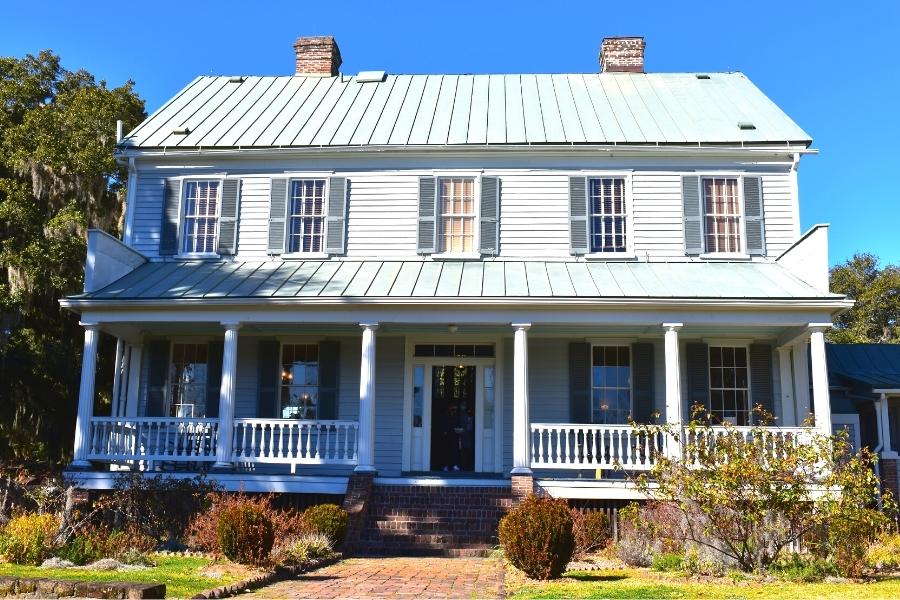
$20 per adult (13+), $15 per senior (60+), $6 for kids 3-12, and kids 2 and under are free.
A Charleston County Parks Gold Pass includes free entry for up to 4 guests per visit.
A guided interpretive tour is included in admission and offered 6 times a day on the half hour, first come, first served. Tours last about 45 minutes.
The first floor of the main house and the remainder of the grounds are open for self-guided exploration before or after your guided tour time.
The historic site also has an app for iPhone users that prefer a little more information on their self-guided tours. If you don’t have an Apple device, you can rent an iPad with the app from the ticket office.
No additional tours or costs.
10 minute drive from Charleston, close to both downtown and the West Ashley hotels
- The McLeod Oak , sometimes called the Witness Oak, is estimated to be 500-600 years old!
- Sea island cotton plantation, rather than rice like most of the other Charleston plantations
- Wappoo Creek views
No dining on site.
Small gift shop at the visitor center.
5. Magnolia Plantation & Gardens
Not your typical plantation house, but plenty of areas to explore around the property to keep you busy on a day out.
Magnolia Plantation boasts romantic-style gardens , rather than the formal gardens found at Middleton Place. They’re more rambling and less straight lines, but still tons of azaleas here.
Magnolia not only has a guided house tour, acres of beautiful gardens, and those gorgeous Ashley River views, but it also has a petting zoo ( with peacocks! ), a conservatory for exotic plants blooming all year round, and the Audubon Swamp Garden , which is much prettier than it sounds.
The biggest drawback to Magnolia is that it charges for everything separately.
They have some cool, unique things that I don’t begrudge them charging for, and individual pricing is nice for those that don’t want to see it all.
But if you do want to do it all, you’re paying nearly double compared to the rest of Charleston’s plantations but not seeing twice as many things.
They are working on their pricing structure, though. I’ve noticed their ticketing options changing over the past year or so.
Admission is good for 7 days, but for most visitors, I wouldn’t recommend spending more than a day at one site.
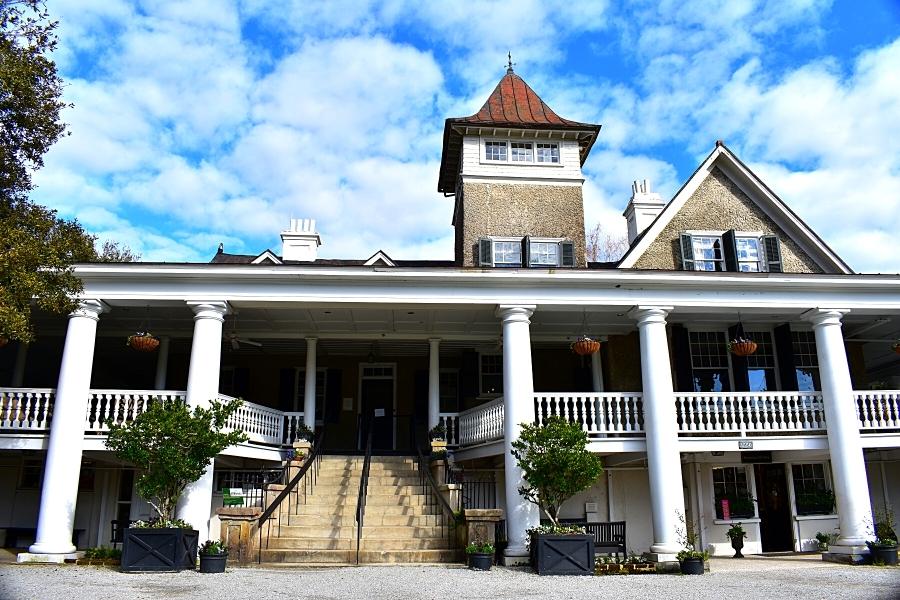
This is one instance where we actually recommend you buy tickets on-site rather than online .
There are so many different options and add-ons that a rep at the ticket desk is your best bet for figuring out what you have time for and actually want to see. You’re also unable to buy same-day tickets online.
Base rates start at $29 per adult (ages 13+), $15 per kids (age 6-12), and free for 5 and under. Small discounts are available for seniors and military.
Admission is good for a return visit within 7 days! Handy if you miss a tour because you got lost in the gardens…
Garden (general) admission includes the following:
- Self-guided tour of the Gardens , including the Maze and the Children’s Garden
- Self-guided tour of the Conservatory
- Guided From Slavery to Freedom tour , tours through 5 preserved and restored former slave cabins
- The Petting Zoo & Nature Center
- Gilliard Garden Center
Additional fees vary for the tours listed below. Some are available in combo packages, which you can preview in their ticketing options on their website , but we’d still recommend buying your tickets on-site.
- Guided tours of the House
- Guided Nature Tram rides through the gardens, great for getting off your feet for a bit!
- Guided Nature Boat tours on the Ashley River (closed in winter)
- Self-guided Audubon Swamp Garden tour
- Seasonal Bird Walks
- Seasonal Guided Garden Tours
Note on guided tour timing: All guided tours use the same time slots and there are only 6 tour times throughout the day. If you’re planning to do all 4 guided additional tours, bring a watch and be on time!
- Peacocks roam the grounds freely! You’ll usually find a few hanging out in the Zoo as well.
- An Observation Tower on the far north end of the gardens has spectacular views of the Ashley River.
- The Audubon Swamp Garden is actually very beautiful. Don’t skip it! You’re almost guaranteed to see an alligator, and you’ll better appreciate how much work went into making the ground usable in this area.
The Peacock Café is centrally located and serves quick eats for breakfast and lunch. Snacks and drinks are available in between meals.
Nearby giant live oaks tower over and shade several tables, or bring a picnic blanket and go snack on the lawn in front of the house.
A gift shop is located in the bottom floor of the main house and is surprisingly large!
The Gilliard Garden Center is open to the public and does not require general admission to the plantation. Here you can purchase your own little piece of the Magnolia gardens to take home and grow.
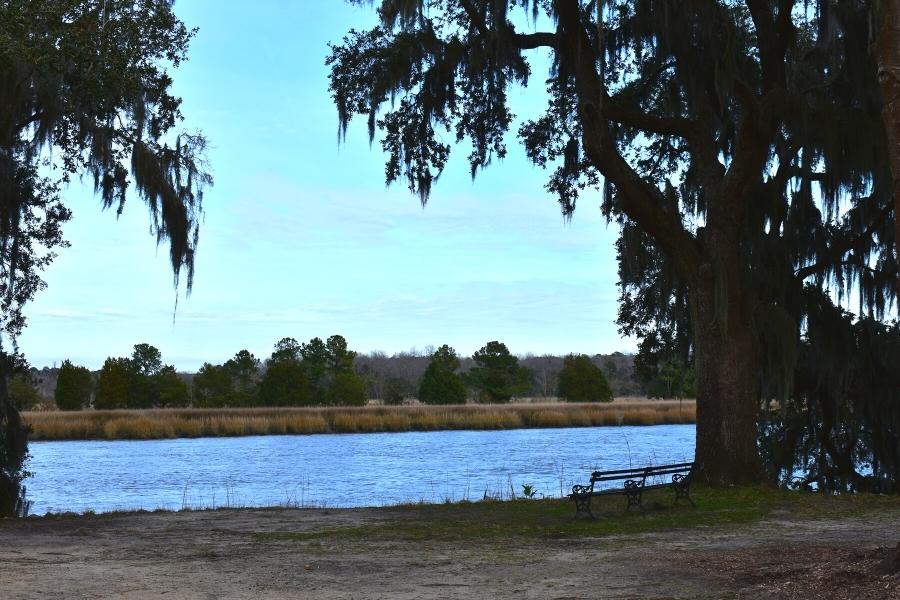
Charleston Plantations FAQs
How did the plantations get here.
Charleston is one of the United States’ oldest colonial-era cities , dating back to the 1600’s. The English lords that set up the South Carolina colony employed similar systems from their Caribbean colonies that made them very wealthy men.
They wanted to replicate sugar cane plantations, but were surprised when the crop didn’t fare well in the South Carolina climate.
It wasn’t long before they discovered that rice flourished in the ever-saturated ground of the Charleston low country, and rice plantations popped up along all the major waterways of the area.
Charleston grew into the South’s first great port city , and slavery became the backbone of the southern agricultural economy for the next 200 years.
Finally, in 1865 after 4 years of brother fighting brother, the American Civil War was won by the Union and slavery was abolished forever.
As for Charleston’s plantation homes, the majority were looted or burned during the war, by both sides.
Should I Visit a Plantation?
You should absolutely visit a plantation. A lot of people struggle with this question, but these spaces have complex pasts and a lot to teach us.
History is often not pretty, and the unpleasant parts are the ones from which we can learn the most. It’s only by educating ourselves and teaching new generations these hard-learned lessons that we can move forward.
The plantations that remain today give a peek into what life was like in South Carolina during colonial, early republic, and antebellum times.
These are not monuments to the South’s glory days; these are history museums striving to teach a bit of history to visitors while sharing some beautiful trees and gardens in the process.
Each Charleston plantation has its own stories to share, and all of them remember and respect the enslaved people that lived here. The McLeod Plantation focuses entirely on the lives and legacy of the Black families once enslaved on the property.
If historical plantations aren’t your speed, check out the Charleston Tea Garden instead! This “plantation” wasn’t established until the 1960’s and has no ties to slavery. They changed their name from plantation to garden to stop confusing visitors.
Which Charleston Plantation Will You Visit?
I hope this guide was helpful for choosing which must-see plantation to visit in Charleston!
Even in post form this can be a bit much, so I’ve created a free printable checklist with all the stats for each of the top 5 plantations listed above!
Use it to circle what you like the most and plan to visit the plantation with the most circles!
Remember, you can always go to more than one plantation while you’re in Charleston. 😉
Looking for other things to do in Charleston?
More Charleston area Travel Resources
- Top 5 Best Plantations to Visit near Charleston
- 65+ Bucket List Things to Do in Charleston, SC
- 15 Unique Things to do in Mount Pleasant, a Charleston suburb
- Where to Stay in Charleston {Best Areas for Every Budget}
- 21 Romantic Things to Do in Charleston for Couples
- The 9 Best Beaches in Charleston, SC
- When’s the Best Time to Visit Charleston? {Seasonal Guide}
- 25 Indoor Activities in Charleston {Beat the Rain or Heat!}
- Visit Charles Town Landing State Historic Site {The Original Colony Site!}
- 23 Instagrammable Photo Spots in Charleston
- Visiting the Charleston Tea Garden
Happy travels!

About the Author : Rachel Means
With six-figure student loan debt and only 10 PTO days per year, Rachel started traveling the world. A decade later, she’s paid off her loans, changed careers, and been to 36 US states and 14 countries. She’s an expert at planning and budgeting for travel and loves to help others do it, too! Read her full story here.
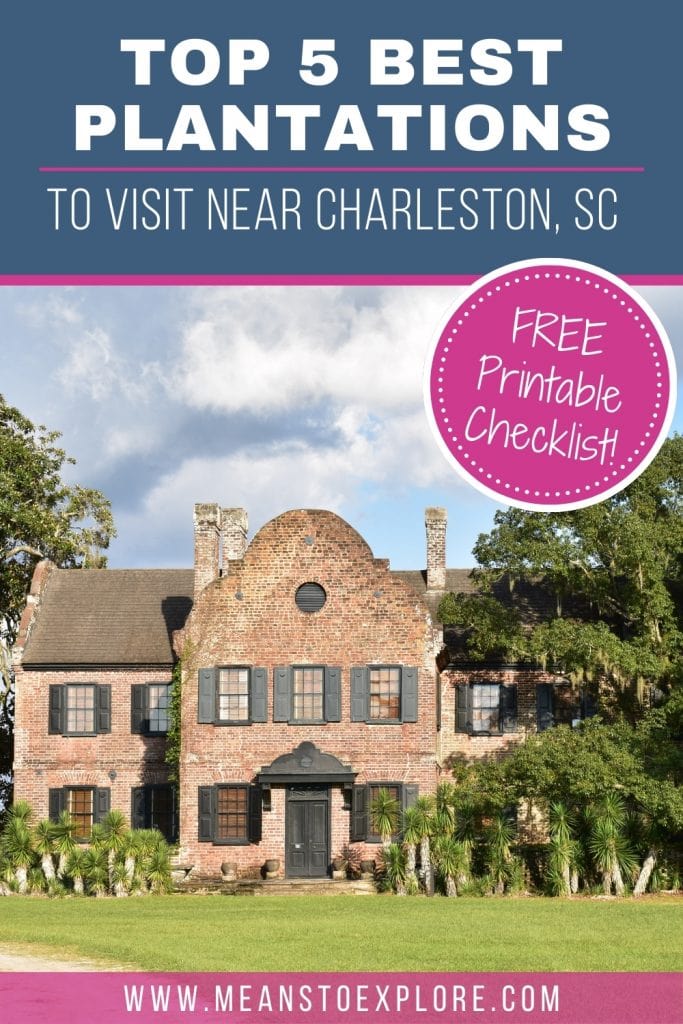
You Might Also Like
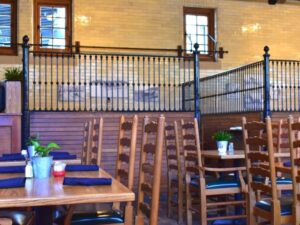
Dining at Biltmore: The Best Biltmore Restaurants for Every Budget

10 Important Oahu Travel Tips: Rock Your First Visit to Hawaii!

15 Best Things to Do in Harpers Ferry, WV
This post has 6 comments.
Can you include a map representing each in relation to Ctown please?
Great idea! I’ve added the map at the beginning of the list, just after the neighborhoods discussion. Enjoy!
Which plantation is more kid friendly? my son does not like to walk a lot
Magnolia Plantation is probably most kid-friendly. There is a petting zoo near the entrance and a trolley that runs through the gardens so the little one can rest while you still get to see the beautiful flowers! Note that the trolley is considered an additional tour and requires an additional fee.
Which plantation is closest to North Myrtle Beach?
These are all in the Charleston area, but Boone Hall would be closest to Myrtle Beach. Sounds like I need to write a post for best plantations near Myrtle Beach! Thanks for reaching out!
Comments are closed.

Savvy Travel Advice
Charleston Plantations Guide: 6 Plantations near Charleston South Carolina
Last updated: June 27, 2021 - Written by Jessica Norah 14 Comments
Charleston’s plantations are a window into the area’s past. Here you will find tales of wealth and prosperity, of love and war, and of suffering and survival.
Before the Civil War, there were hundreds of plantations located outside Charleston, growing indigo, cotton, rice, and other cash crops. Charleston became wealthy from these plantations, but these riches were of course made on the backs of the slaves who were forced to work the fields.
Many of the plantations near Charleston were either destroyed during the Civil War or ceased operations soon after as many become unprofitable without the use of slave labor. Today, several plantations and plantations homes, ranging from farmhouses to mansions, have been restored and preserved as museums and tourist attractions.
Each of the Charleston plantations offer different experiences. Whether you’re looking for an escape from city life, a walk in a beautiful garden, a glimpse of history, to learn about slavery and Gullah culture, or to see a working plantation in action, you can find it at one of these estates.
We have visited five of the plantations around Charleston, and in this article we will give you all the details you need to plan your own visit to these plantations. If you are trying to choose which of the Charleston plantation tours to take, we’ll give you the information you need to pick the best one for you.
Here is our comprehensive guide to the Charleston plantations, complete an FAQ section, a short guide to each of the 6 plantations, and our own personal impressions and tips for visiting each of these South Carolina plantations!
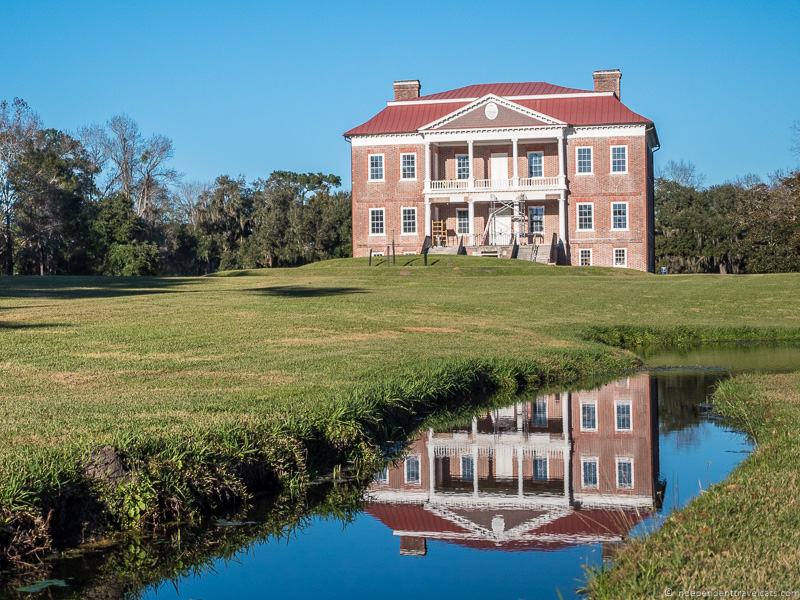
Table of Contents:
Visiting the Charleston Plantations in South Carolina
Before we get into the details of each plantation, we want to give you some background on South Carolina’s plantations, and what you need to know before visiting them.
A brief history of plantations in Charleston South Carolina
In the 1670’s, English planters began to migrate from Barbados to the area now known as Charleston, South Carolina. They founded the city, then called Charles Town, and set up large plantations around the outskirts.
In the antebellum period, it is estimated that there were over 2,000 plantations in South Carolina, most within the Lowcountry area . Over 300 of these plantations were in Charleston County. Many of the plantations near Charleston were set up either along the banks of the Ashley River or on the sea islands, such as Wadmalaw Island, Edisto Island, and Johns Island.
Early plantations mainly grew indigo and rice which grew well in the coastal marshy conditions. The area became particularly known for its rice, and the use of tidal irrigation changed the landscapes of this area and make this a much more profitable endeavor. South Carolina was the leading rice producer in the country for about 200 years.
In the 1800’s cotton also became a popular crop in South Carolina after the introduction of the modern cotton gin made it easier and more profitable to cultivate. Sea Island cotton grown in the Charleston area became one of the most expensive and sought after cottons in the world in the 19th and early 20th centuries.
These plantations were hugely successful and profitable, mainly because they were run using the cheap labor of African slaves. Enslaved blacks were forced to work in the plantation houses, fields, and even in the slave auctions in which they were sold.
By the early 19th century, Charleston had become the national slave trade capital and by the start of the Civil War, about 10% of all slaves in the United States lived in South Carolina. In fact, about 57% of South Carolina’s population were enslaved blacks by 1860 according to Census data !
Charleston became one of the wealthiest and most powerful cities in the United States, largely due to vast incomes made through the plantation system and slavery. But the plantation system would come to a quick halt at the beginning of the American Civil War , a war fought between the North (the Union) and the South (the Confederacy).
The South lost the war, of course, and slavery was abolished by the Thirteenth Amendment in 1865. Most of the plantations in the Charleston area were looted and damaged by Union forces under the leadership of General William Tecumseh Sherman and many, like Magnolia Plantation and Middleton Place, were burned to the ground. Large sections of the city of Charleston also lay in ruins after the war.
Those plantations that survived were devastated by the loss of slave labor, coupled with the fact that about one-fourth of the military-age white male population had died during the war. With no one to run or work the plantations, many of them fell into disrepair or were sold off piecemeal. Some of the antebellum plantation homes that did survive, or had been rebuilt after the War, were damaged or destroyed by the Great Earthquake in 1886.
A small percentage of the plantations continued on, many relying on tenant farming and the use of cheap labor from former slaves. Many former slaves returned to work at plantations as freedman, working as tenant farmers and sharecroppers, after finding it very difficult to find work elsewhere in the now impoverished Lowcountry.
A number of Lowcountry plantations continued to grow the prized Sea Island cotton; however, a boll weevil infestation in the 1920s virtually wiped out cotton crops throughout the southern United States. This caused many surviving working plantations to cease farming efforts and many fell into disrepair.
In the 20th century a handful of plantations were bought and restored, either to be opened as public historical sites or for private use. Some were opened as historical museums, hunting resorts, or hotels while others are rented out for events and weddings.
Currently about a half a dozen plantations near Charleston are open to visitors.
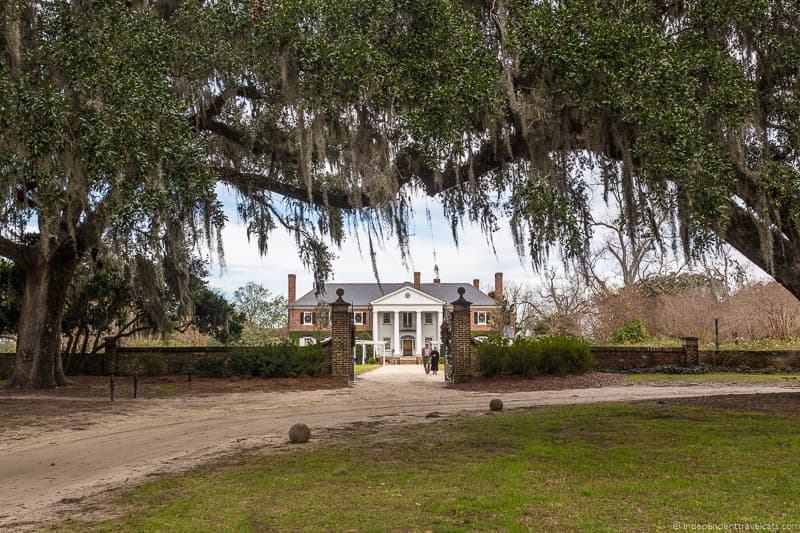
Best time of year to visit Charleston plantations?
Charleston is a year-round tourist destination, but it’s wise to avoid the area from June to August, when stifling hot temperatures and heavy humidity can make it unpleasant to be outside for too long.
Charleston’s best weather, and therefore peak tourism season is from September to November. This is a beautiful time of year to visit the plantations, but expect more crowds and higher prices on accommodation.
Spring is also a nice time of year when many of the plantation gardens will be in full bloom, but again, there will be some crowds. Winters in Charleston are mild, so also not a bad option, but check to make sure everything you plan to visit remains open as some plantation attractions are seasonal.
We visited in late January so the temperature was cool and crowds were low, but it was not the best time for the gardens.
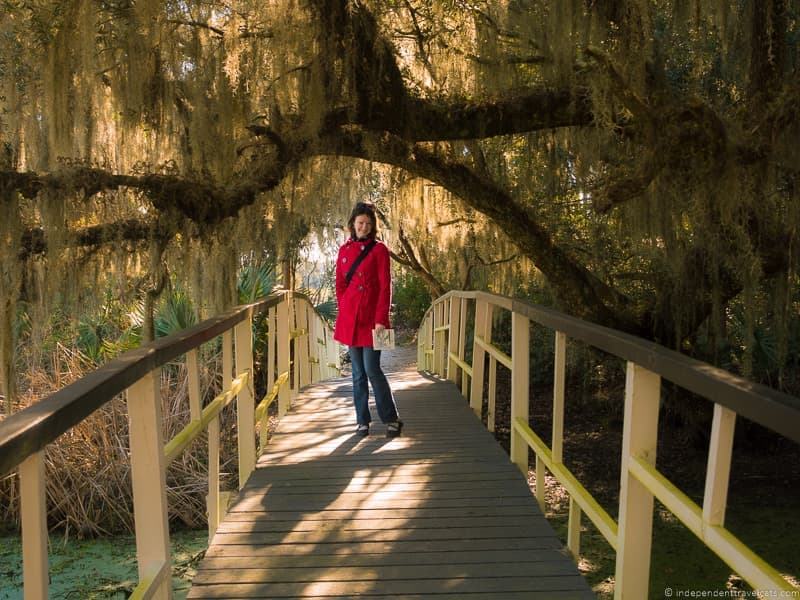
Cost of Charleston plantation tours?
Prices to visit a Charleston plantation vary greatly, and admission tickets range from about $15 per person to over $30 per person.
Be sure to check what is included with the basic admission fees, some plantations include everything for one price, and for others you have to pay extra for things like house tours and different attractions. Costs for some plantations with all the add-on tours and attractions can be over $50 per person.
All of the plantations offer discounts for younger children, and some also offer discounts for AAA membership, senior citizens, or local residents.
Charleston City Passes that include plantations?
There are two main discount passes in Charleston, and both can save you money if you plan to visit a number of Charleston’s popular attractions.
The Tour Pass in Charleston includes entry into over 30 Charleston attractions, including entry into Boone Hall (featured tour), Drayton Hall, and McLeod Plantation. If you plan to visit several attractions in Charleston and plan to spend more than 1 day in the city, this pass will likely save you some money. We recommend that any first-time visitor check this one out.
There is also the Heritage Pass which covers a total of 10 historical homes, plantations, and museums. However, it is not a great value for those primarily interested in visiting plantations as although it includes two Charleston plantations (Drayton Hall and Middleton Place), it only grants free entry to the grounds and gardens and does not include a house tour at either.
How to get to the Charleston plantations?
Getting to any of the plantations will require some form of transport, as none are located within the city of Charleston.
The simplest option is to bring or rent a car. This way you can visit as many plantations as you like, for as long as you like. There are many rental agencies at the airport and in downtown Charleston, such as Enterprise .
All of the plantations around Charleston offer free parking to visitors.
By Public Transportation
Public transit is not a convenient option for most of the Charleston plantations as there are limited bus services outside the city.
However, you can get to McLeod Plantation Historical Site very easily from Charleston by bus. Currently, it takes about 16 minutes to reach the plantation site from the Charleston Museum if you take Bus 31.
It is also possible to reach Boone Hall Plantation by taking public buses; however, it takes a long time and requires a 25 minute walk from the final bus stop. Not recommended.
By Taxi or Uber
If you do not wish to rent a car, taxis are an option, and there are several companies in the area such as Green Taxi . Note that it can be difficult hailing one from off the street, so it’s a good idea to keep a taxi company’s number on hand.
Ride share services, such as Uber, are also an option; however, be sure that you will be able to get a return ride. Some people who have used ride share services have become stranded at plantations because there were no ride options back into Charleston.
If you are going far from the city center, pricing might become prohibitively expensive. So you may want to also consider booking a day tour that includes transport and admission prices which often costs less than going by taxi.
By Day Tour
Another option is to book a day tour that visits one or more plantations, you can see a list of local tours here on Viator and here on GetYourGuide . Most tour prices include your transport, a guide, and entry into the visited plantations. Some also include lunch or a winery visit, such as this one
For a full list of plantation day tours from Charleston, see our Charleston Plantation Tours section below.
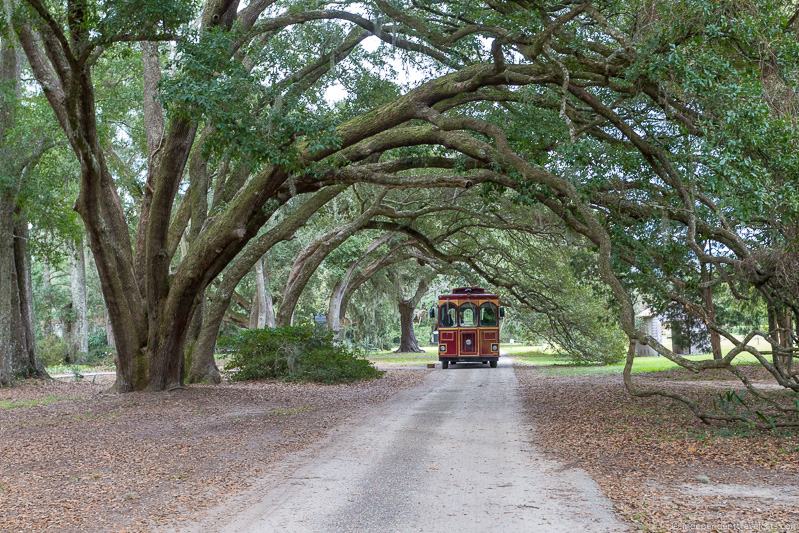
Which plantations are closest to downtown Charleston?
None of the plantations are located in downtown Charleston, as plantations by definition require a lot of space. However all of the plantations covered in this article are within a 45 minute drive of the city.
McLeod Plantation Historic Site is the closest plantation and can be reached by a 10 minute drive or 20 minute bus ride from downtown Charleston. Drayton Hall, Boone Hall, Middleton Place, and Magnolia are all about a 30 minute drive away. Charleston Tea Garden is about a 40 minute drive away.
If you prefer to stay in downtown Charleston, we recommend visiting one or two of Charleston’s historic homes instead. These houses were built and lived in by the rich merchants, politicians, and plantation-owning families of antebellum Charleston. Similar to the rural plantations, most of these city mansions were run with the use of enslaved labor. They vary in architectural styles.
A few of the houses we can recommend considering are the Edmonston-Alston House , the Calhoun Mansion , the Aiken-Rhett house , and the Nathanial Russel House .
Charleston plantation tours?
If you don’t want to rent a car in Charleston, we recommend taking a day tour to visit the area plantations. There are several day tours that offer round-trip transport from downtown Charleston.
Here are some options:
- This well-rated half day tour from Charleston visits Magnolia Plantation and includes round-trip transportation as well as guided tours of the house, gardens, and grounds.
- This half day tour includes a visit to Magnolia Plantation as well as a guided tour of Charleston
- This half day small tour from Charleston includes a visit and trolley tour at Charleston Tea Garden, plus a visit to Angel Oak Park, a winery, and a distillery on Wadmalaw Island.
- This 4.5 hour tour visits Boone Hall and includes a guided tour and all plantation entrance fees.
- This tour includes a visit to Boone Hall as well as a city tour of Charleston
- This half day tour includes transport by luxury motorcoach, admission and tour of Middleton Place, and a 3-course Lowcounty lunch at the Middleton Place Restaurant.
Just be sure to book your day tour in advance as some require you to book at least 24 hours or more before you tour date.
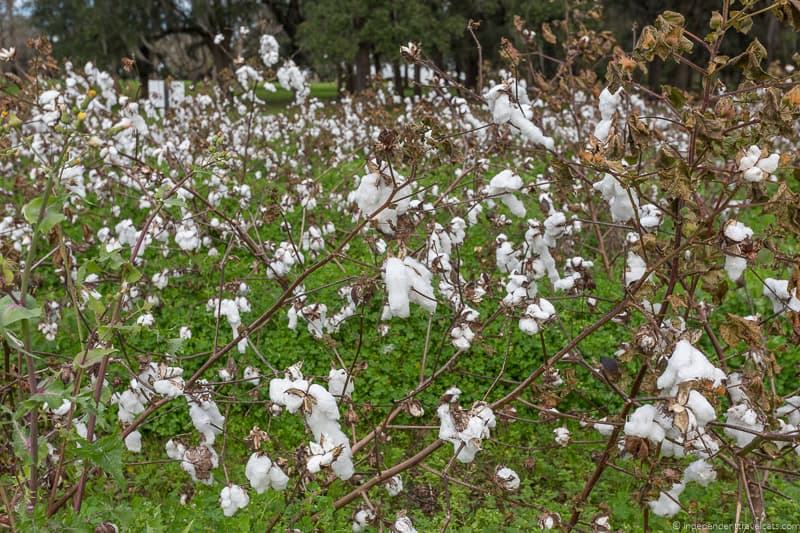
How do I book a plantation tour or ticket?
Most plantations don’t take timed reservations in advance, but most do allow you to book your admission tickets in advance online.
You can sometimes get a small discount by pre-purchasing tickets, but note that most of these tickets are non-refundable. So I’d only purchase online if you are certain you want to visit. All plantations allow you to purchase admission and tour tickets in person on arrival.
If you are traveling in a larger group, we do recommend that you call ahead and see if you need to make reservations.
If you do not have a reserved tour time, I would advise showing up 30 minutes or so before the tour time you want to better ensure you get your desired time as tour times do sometimes sell out.
How many plantations can I visit on a day trip from Charleston?
If you have your own car, you could theoretically visit multiple plantations in a full day. However, given that most people spend 3 to 4 hours at a plantation, it is probably better to visit only one or two in a single day.
To allow visitors enough time to explore, most day tours from Charleston only visit one plantation.
If you want to visit more plantations in one day, we recommend looking at the plantations situated along the Ashley River as these are the most geographically close together. We recommend choosing 2 or 3 of the following: McLeod Plantation Historic Site, Magnolia Plantation, Drayton Hall, and Middleton Place.
Being respectful and aware during plantation visits?
It is good to keep in mind that these places are historical sites that help illustrate two very different sides of the same history, one of the wealthy plantation owners and one of the enslaved workers of these plantations.
While plantation tours can be entertaining and enjoyable, do remember that for some visitors the experience is more serious and can be emotional. These plantations were run using generations of enslaved people and visiting can be upsetting or cathartic for their descendants and other visitors. So please try to be cognizant and respectful of other people’s thoughts and feeling while visiting these sites.
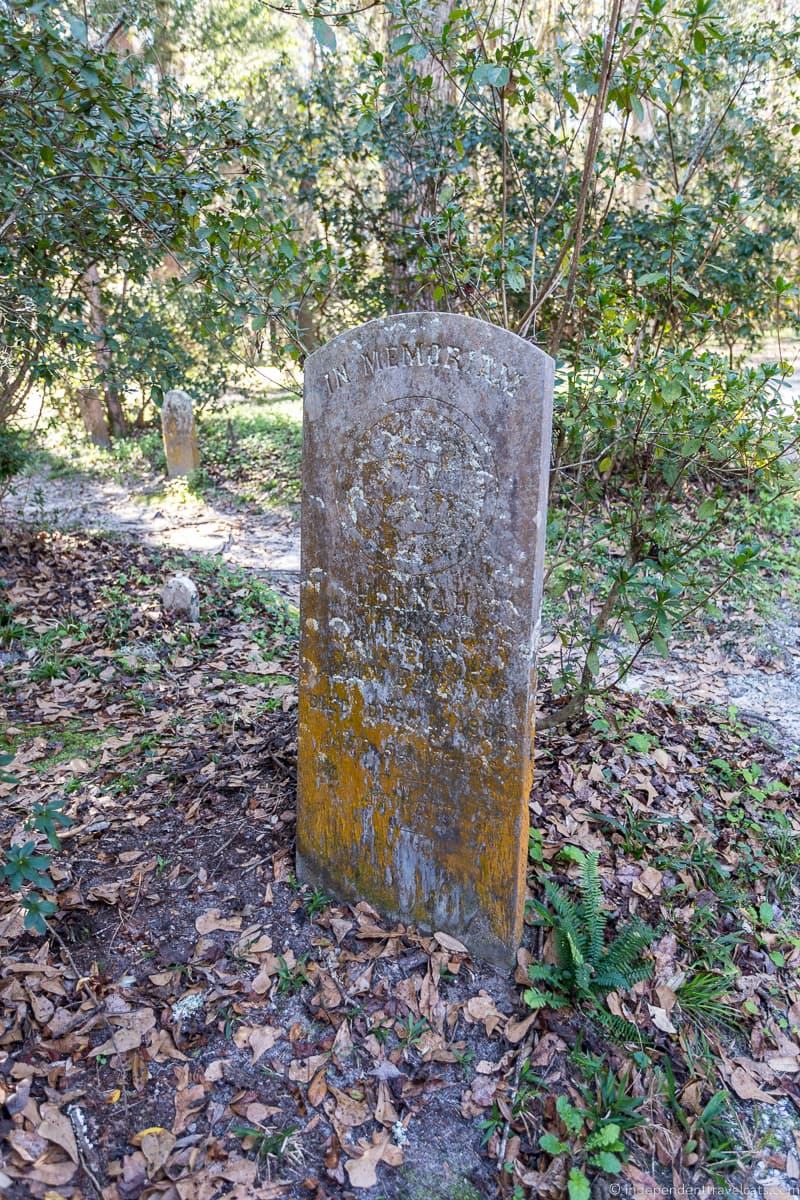
Best plantations for wheelchair users and those with reduced mobility?
While all of the plantations offer wheelchair accessible toilets and the modern buildings (visitor centers, cafes, shop) are accessible, the real challenge is accessing the interiors of the historical buildings. Most of the Charleston plantation homes and other historical buildings are not wheelchair accessible.
The only plantation house that is currently open to wheelchair users is McLeod Plantation Historic Site. They can also sometimes do tours in a golf cart for those who are not able to walk the grounds for the tour, but they recommend contacting them in advance to be sure a staff member can accommodate.
The factory tour and gift shop at Charleston Tea Garden are wheelchair accessible. Those who cannot climb the 4 steps into the trolley to do the trolley tour can call ahead to see if a tour can be arranged in one’s own vehicle.
The main house at Drayton Hall is not currently wheelchair accessible, but all the other buildings are all wheelchair accessible including their museum, gallery, and slavery tour. There is also a video here and you can also about available supplemental materials for those who cannot do the house tour so you can see photos/videos of the interior.
If you have specific needs or questions about accessibility at a plantation, I’d call in advance of your visit to avoid disappointment and to make any special arrangements as needed.
Tour guides in most cases can not provide special assistance to guests (in terms of carrying walkers or wheelchairs, assisting people up stairs) during tours or walks, and it is strongly recommended that guests who need assistance visit with a companion.
For each Charleston plantation in this guide, we have an Accessibility section which provides information on wheelchair accessibility, stairs, and services for those with mobility difficulties. This information was provided to us by staff at these plantations and we do our best to keep it updated.
If you have visited any of these plantations as someone with reduced mobility (or with someone with accessibility issues), we’d love to hear about your experiences in the Comments section at the end of this article. Your info can help future travelers!
How to decide which plantations in Charleston to visit?
It can be difficult to choose which plantation you want to visit in Charleston. Most people only have time for one or two, and admission prices can be prohibitive to visit more than one, especially for large families.
All of the plantations are worth visiting but they each offer different attractions and each has a different focus. Which plantation you choose depends a lot on what you are looking for in a plantation experience.
Best Gardens
The Charleston plantations with the best gardens would be Magnolia Plantation and Middleton Place.
Magnolia Plantation is known for its well-preserved Romantic Style garden, which is designed to be an oasis away from the city. The gardens here are more wild and natural. It has stunning bridge-covered ponds and beautiful flowers. These were our favorite gardens of the Charleston plantations.
The Middleton Place Gardens also has award-winning elaborate and beautiful gardens. These classical gardens were inspired by the gardens of England and France in the 18th century. They are widely believed to be the oldest existing landscaped gardens in the United States.
Both plantations have lovely gardens, and if trying to decide between them, it depends on whether you prefer more wild gardens (Magnolia) or more tended and landscaped ones (Middleton Place).
If your main reason for visiting the plantations are the gardens, I’d try to come in Spring or when the flowers of most interest to you are in bloom.
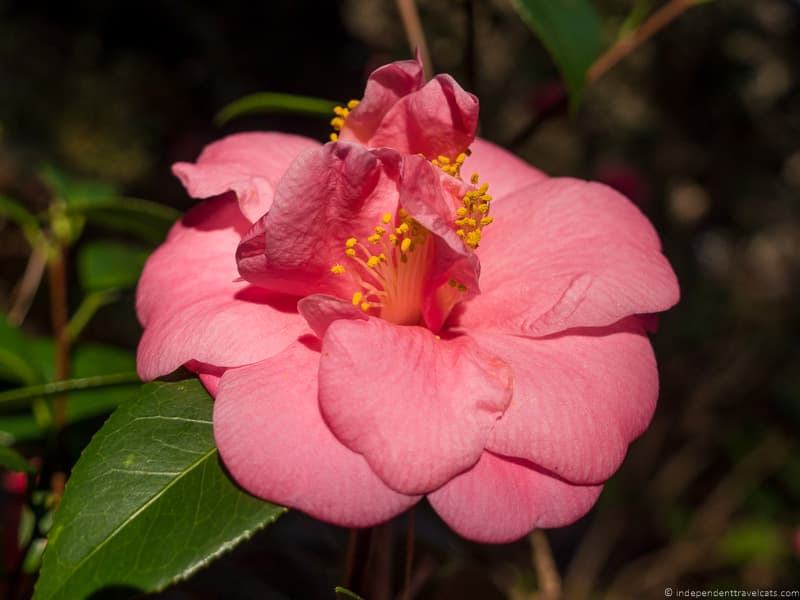
Best Oak Alley
Although all six of the plantations have large old live oaks on site, the one with the most scenic oak alley is Boone Hall. This oak alley has been featured in films like The Notebook .
McLeod Plantation Historic Site also has a notable oak alley as well as the large McLeod Oak which is believed to be at least 600 years old.
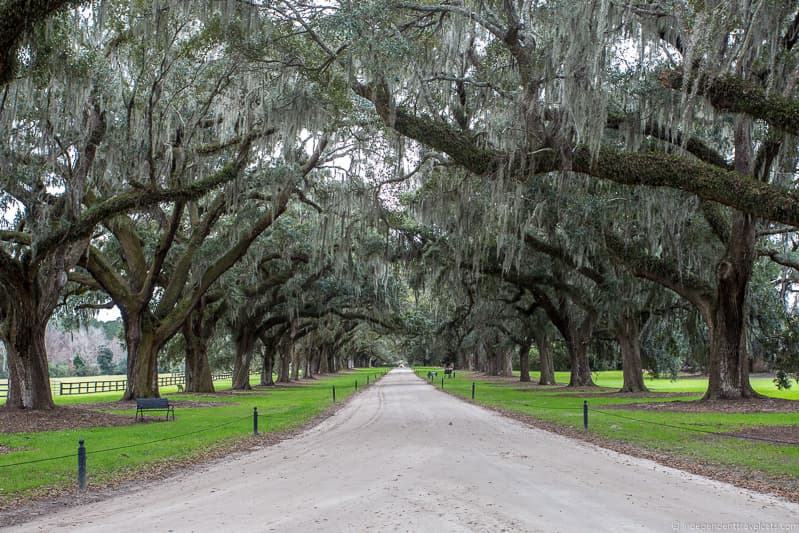
Best Original Plantation House
For those looking for an original plantation home, we recommend Drayton Hall. Drayton Hall is the oldest plantation house left in Charleston, and one of few plantation houses along the Ashley River to survive intact after the Civil War. Most of the others were destroyed or have been heavily restored or reconstructed.
Drayton Hall was built before the Revolutionary War and is an excellent example of Palladian architecture. It has a very impressive exterior made of brick with white columns. It has been conserved, but not restored, and has been left pretty much as it was left and is largely unfurnished inside. This allows visitors to better see and understand the architecture and construction of the house.
McLeod also has an intact antebellum Georgian style plantation house on site, although it underwent significant changes and additions in the 20th century. This is a good plantation house to visit to get a good idea of the average “middle class” planter home, although the focus of tours here are on the crops and slavery. Like Drayton Hall, it is unfurnished inside.
The main houses at Middleton Place and Magnolia Plantation were destroyed by the Union army during the Civil War, but both have Reconstruction era houses you can visit. At Middleton Place, a restored dependency building adjacent to the main house was turned into the family home and can be visited. At Magnolia, a summer house was moved here after the Civil War to serve as the owners’ home.
Unlike antebellum plantations in some other areas of the country, such as the Louisiana plantations along the River Road , very few of the original antebellum grand plantation homes remain.
If you are looking for a house like Scarlett O’Hara’s Tara (which was actually a movie set in California) in the film Gone with the Wind , you may be a bit disappointed. The closest is probably Boone Hall with its pretty oak alley and brick Colonial Revival mansion house, but the house only dates to the 1930’s.
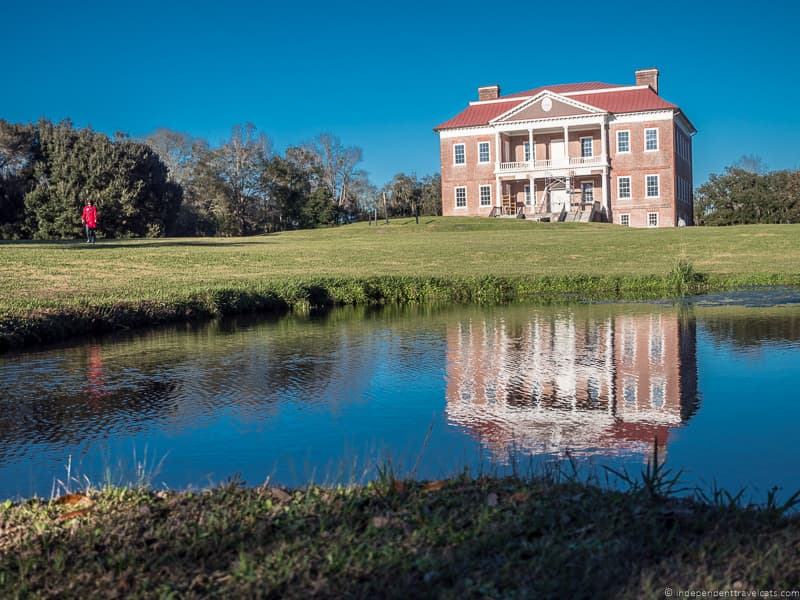

Best Information on Slavery and Gullah Culture
All of the plantations provide some information about slavery (except Charleston Tea Garden of course), and in fact each of the 5 plantations with an antebellum history offer dedicated slavery tours or talks. But some definitely focus on it more than others.
One unique aspect you’ll learn about in the Lowcountry is the Gullah culture (also sometimes called Geechee) developed by slaves in this area of the U.S., particularly South Carolina and Georgia.
Slaves were brought over from various parts of West and Central Africa and they developed a Creole culture and language that enabled them to maintain parts of their own African cultures, traditions, and language. As a result they were less influenced by British-American culture than slaves in some other states.
It should also be noted that former slaves and their descendants continued to live and work on most of the Charleston area plantations after Emancipation and well into the mid and late 20th century. So many plantations also present information about African American history through the 19th and 20th centuries as well.
If your primary reason for visiting is to learn about slavery and African American history, we recommend visiting the McLeod Plantation Historical Site. The site’s main focus is on exploring and understanding local Gullah/Geechee culture, the slavery experience, and the history of African-Americans on plantations before, during, and after the Civil War. There is also a focus on understanding the cultivation and processing of the crops like cotton.
We also recommend Boone Hall Plantation which offers daily live talks about the lives of the slaves on the plantation, a self-guided tour you can take with exhibits in the former slave cabins, and a daily live presentations about Gullah culture in their outdoor theater.
That said, Magnolia Plantation, Middleton Place, and Drayton Hall also all provide tours focused on the experiences of the enslaved and African Americans. So really it is up to you to determine how much you want to focus on learning about slavery at the plantations.
If slavery and African American history tours and talks are of interest, be sure to check the daily schedule in advance at the planation you plan to visit to make sure you can fit in the tours during your visit.
Of course, slavery wasn’t limited to plantations and rural life. In the city of Charleston, slave labor was used to built many of the houses, schools, government buildings, and churches, to do factory work, and to perform domestic duties in the homes of the wealthy.
In Charleston, we recommend visiting the Old Slave Mart Museum which is a museum dedicated to sharing information about slavery. The museum is in a building which was part of a slave auction house from 1859 to 1863. A new museum is also being built in Charleston, the International African American Museum .
Those interested in learning more about Gullah culture, should check out the Geeche Gullah Cultural Heritage Corridor where a number of museums, historic homes, churches, schools, cemeteries, and other sites are listed that were/are connected to Gullah culture. The corridor runs along the coast from southern North Carolina to northern Florida.
You may also want to check out the Slave Dwelling Project , which was started by Joseph McGill who began sleeping in former slave cabins in South Carolina. The group now organizes living history programs, education, and sleepovers in slavery-associated sites across the country.
McGill’s first overnight stay in a slave cabin was at Magnolia Plantation and he also regularly leads the slavery focused tours here. There are usually several sleepovers scheduled at Magnolia each year.
Of course the best way to learn more about slavery is to read accounts by former slaves . One large source of narratives comes from the interviews from the Slave Narrative Project that were collected by writers from hundreds of former slaves by the Works Progress Administration from 1936 to 1938.
The Slave Narrative Collection includes about 2,000 interviews, 274 of these from South Carolina. You can find many of the transcripts online for free , or can buy them as a printed book online (some plantation gift shops also sell copies).
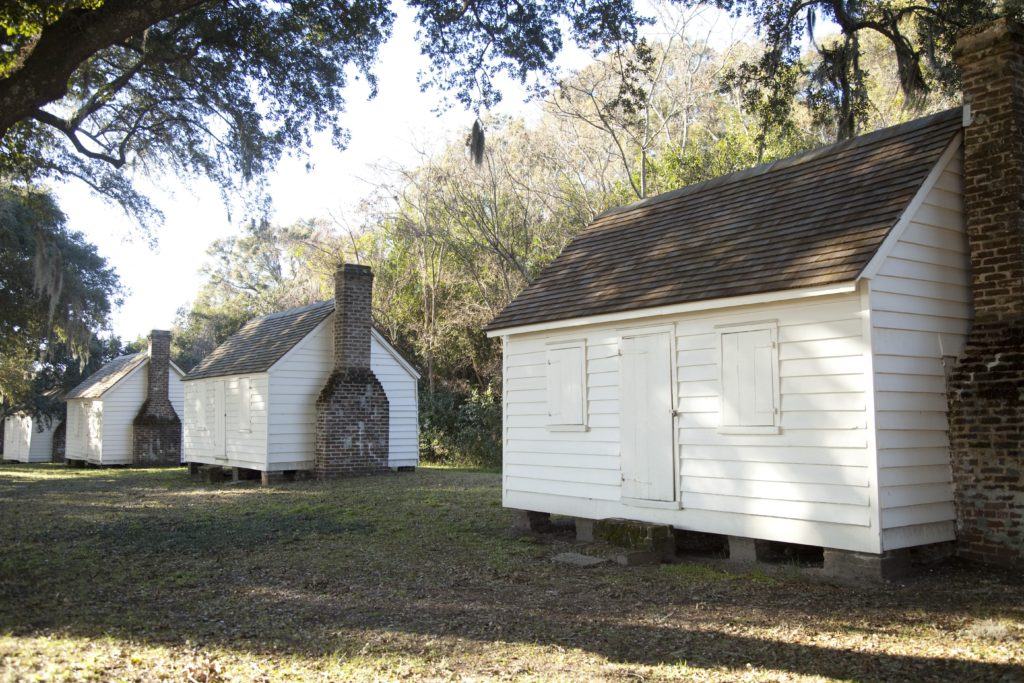
Best for Nature & Wildlife
We would recommend Magnolia Plantation for those who are interested in seeing nature and wildlife. In addition to the Romantic gardens, there is a nature tram tour, a boat tour, and the Audubon Swamp Garden. They also offer a specialized bird walk on Sundays led by a local ornithologist.
We personally saw several species of birds, squirrels, turtles, and alligators during our visit at Magnolia. The plantation has a number of ponds and lakes, swampland, and is next to the Ashley River so changes of seeing waterfowl and other water critters are very high.
Many of the other plantations do offer self-guided nature trails, including Middleton Place and Drayton Hall.

Best House Furnishings & Antiques
The best plantations for those interested in seeing period furnishings, antiques, and family heirlooms from the antebellum period would be Middleton Place and Magnolia Plantation.
The Middleton Place house museum contains a large collection of furniture, art, documents, and family heirlooms that date from about the 1740’s to 1880’s. Almost all the objects had been owned by the Middleton family, and include family portraits, Charleston rice beds, and an extensive collection of English silver.
Magnolia Plantation includes furniture, household objects, art, and antiques from the Drayton family who have owned the plantation since 1676. These objects are displayed across 10 different rooms and include portraits, quilts, and early American antiques.
For anyone interested in antiques, Drayton Hall also deserves a mention here. Although the house itself is largely unfurnished, there is a collection of furnishings and artifacts from the Drayton family on display in the new Gates Gallery. This includes a c. 1750 desk and bookcase designed for John Drayton that are considered two of the most important surviving pieces of colonial furniture in America.
The house at Boone Hall only dates to 1936, but the current owners have collected a lot of antiques and period sympathetic pieces so that it resembles an antebellum planters’ home. However, only 4 rooms on the main floor are open to the public to tour as the top two floors are being used as a private residence.

Best for Children and Families
Plantations tours are not always a great fit for children, especially younger children, who can have a hard time standing still or paying attention during longer tours about history, slavery, architecture, and antiques.
The two plantations with the more kid-friendly offerings are Magnolia Plantation and Middleton Place. Both also offer sandwiches and snacks on site.
Magnolia Plantations & Gardens has a lot of space to walk and wander outside, picnic areas, a nature train, a boat tour, a small petting zoo with farm animals, a playground, and the Audubon Swamp Garden.
Middleton Place offers lots of space for kids to wander around in the gardens, farm animals, carriage rides, and craftspeople doing different crafts demonstrations such as candle making and pottery.
The two others places families might consider are Boone Hall and Charleston Tea Garden. Charleston Tea Garden offers a short video-guided factory tour and a trolley tour to see the tea plantation. Boone Hall Plantation has gardens, a tractor tour, outdoor Gullah theater talks, and a seasonal butterfly pavilion.
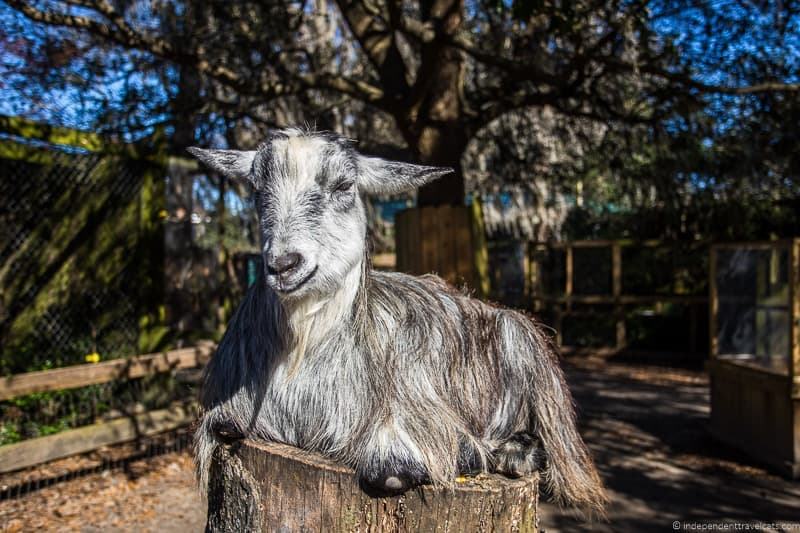
Best Working Plantation
To see a working plantation near Charleston, we recommend visiting either the Charleston Tea Garden or Boone Hall Plantation.
Charleston Tea Garden is a real working tea plantation outside Charleston. It doesn’t have the history of the other plantations, but it’s interesting to see how a real tea farm operates. The trolley tour takes you around the fields and you get to see how tea is grown, picked, processed, and brewed. It’s also the only large commercial tea plantation in America!
Boone Hall is one of the oldest continuously working farms in the country, and has been producing crops for over 300 years. They no longer commercially grow indigo or cotton, but they raise a number of fruits and vegetables including strawberries, tomatoes, pumpkins, and asparagus.
Visitors can take a tractor tour to explore the farm at Boone Hall and learn both about the historical workings of the plantation as well as the current farming operations. Fresh produce is available to purchase at the Boone Hall Farms Market near the plantation. At certain times of the year, visitors can even pick their own basket of fruit as part of the U-Pick-Em business.
Although no longer a working plantation, McLeod Plantation offers tours about Sea Island cotton cultivation and processing. They also started growing a small amount of Sea Island cotton on the property in 2017 for educational purposes.
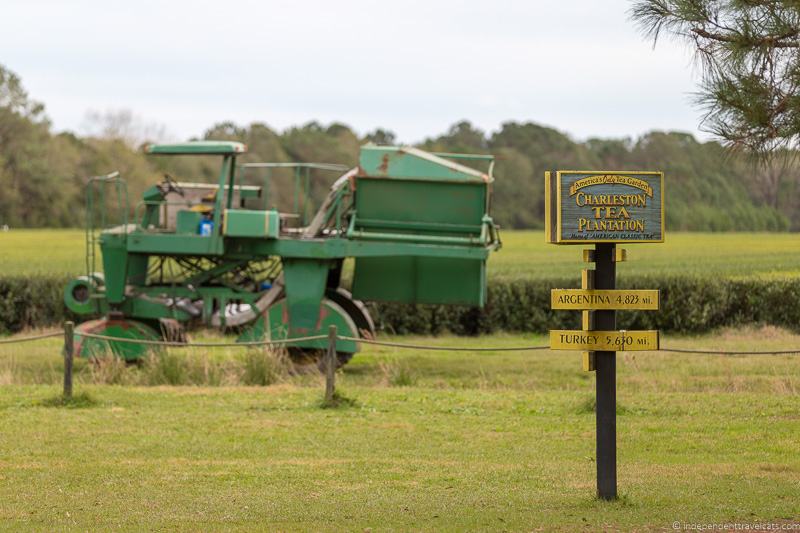
Which Charleston plantations offer places to eat on site?
Four of the plantations offer food on site. Magnolia Plantation and Drayton Hall both have casual on-site cafes where you can get sandwiches and hot food.
Boone Hall has a small cafe with sandwiches, snacks, ice cream, and drinks. There is also a cafe at Boone Farms Market located a 5 minute drive away which has more hot food and meal options.
Middleton Place Plantation has both a casual cafe and more formal sit-down restaurant. The casual garden cafe offers sandwiches, snacks, and ice cream. The Middleton Place restaurant serves seasonal, local Lowcountry cuisine. Reservations are recommended for dinner.
Neither McLeod Plantation or Charleston Tea Garden offer food, although Charleston offers free tea tastings and both sell snacks in their respective gift shops.
Which plantations in Charleston offer overnight accommodation?
Only one of the plantations, Middleton Place, offers on site accommodation. The Inn at Middleton Place is a modern, environmentally mindful hotel with sweeping views and access to the plantation’s 65 acres of nature. Despite having 55 rooms, it can book up quickly so plan ahead and book online.
If you crave a historic hotel in Charleston, you can also consider staying at one of Charleston’s many historical hotels or inns, such as John Rutledge House Inn , Planters Inn , Mills House , Barksdale House Inn , Governor’s House Inn , or the Wentworth Mansion .
Where to stay in Charleston?
Charleston has many options ranging from budget hotels to 5-star ones. We will break up the choices into options in central Charleston, and ones that are a little further out near some of the plantations.
Hotels in Downtown and Historic Charleston
If staying in downtown Charleston, we recommend staying in or within walking distance of the Historic District if you can as this is where many of the city’s main attractions and restaurants are located.
- NotsoHostel – This well-reviewed hostel offers both dorm rooms and private rooms along with communal kitchen and bathroom spaces. This is the only hostel in Charleston that we know about and it is located within walking distance of the Historic District.
- Days Inn by Wyndham – This 2-star motor inn in the Historic District offers just the basic amenities, but the price for the location is excellent. It’s located just off Market Street and close to City Market and offers a great value for this area of Charleston.
- Barksdale House Inn – This 3-star historic inn was built in 1788. Each room is uniquely decorated with a grand 4-poster bed and a continental breakfast is included. If you are looking for a historical B&B, this one offers a good value.
- Church Street Inn – These 3-star well-appointed townhouses feature full kitchens, Wi-Fi, cable TV, and a 24 hour front desk service.
- Francis Marion Hotel – This 4-star historic hotel is set on lovely Marion Square and offers well-appointed rooms with flat screen TVs, coffee makers, and WiFI. Hotel offers an on-site full-service spa, fitness center, coffee shop, and the on-site Swamp Fox Restaurant and Bar. We’ve stayed here and can recommend.
- Mills House Wyndham Grand – This 4-star hotel in the city center offers spacious comfortable rooms, 24 hour front desk, fitness center, business center, on-site restaurant, and a large outdoor swimming pool. It’s located only a 5 minute walk from the City Market. We’ve stayed here and can recommend.
- Planters Inn – This 4-star luxury B&B is located in a 19th century house in the Historic District and offers a concierge service, flat screen TVs, bathrobes, and an on-site restaurant. The B&B is decorated in the 19th century style and is well-loved by guests for all the little extras it offers.
- Belmond Charleston Place – This 5 star luxury hotel offers all the luxury amenities you’d expect with 3 on-site restaurants, a bar, a full-service spa, fitness center, 24-hour front desk and concierge service, on-site shops, a rooftop terrace, and 2 pools.
If you are looking for a room or apartment, then we recommend Plum Guide . Plum Guide carefully curate their listings so their options tend to be of a very high quality whilst still being available at a range of price points. We’ve stayed at a number of their properties around the world, and you can see our review of the Plum Guide here . See their listings for Charleston here .
Accommodation Options Outside of Charleston
You can save some money by staying outside of central Charleston, such as in Mount Pleasant, near the airport, or in Summerville. This is only recommended for those with cars as it can be difficult getting around without a car outside of the city.
- Inn at Middleton Place – This beautifully designed modern hotel is set within the gardens of Middleton Place Plantation and offers an on-site restaurant, spa services, and seasonal outdoor pool. Rooms include floor to ceiling windows to take in the surrounding views, and most include marble bath tubs and seasonal fireplaces. Guests of the hotel get free admission to the Middleton plantation and gardens, and it is also not far from Magnolia Plantation and Drayton Hall. Our pick if you want to stay outside of Charleston!
- Plantation Oaks Inn – This small relaxed 3-star log cabin style bed-and-breakfast offers comfortable rooms alongside a quiet tidal creek and a home-cooked breakfast each morning. It sits on what was Snee Farm Plantation, a plantation that was owned by Constitution signer Charles Pinckney. It is is within walking distance of Boone Hall Plantation and the Charles Pinckney National Historic Site. Another great option.
- Holiday Inn Express Suites – This 3-star hotel offers breakfast, a fitness center, and a seasonal outdoor swimming pool. A 7 minute drive from Boone Hall.
- SpringHill Suites by Marriott Charleston Downtown/Riverview – This riverfront hotel offers spacious rooms, an outdoor pool, 24-hour front desk, and complimentary breakfast. There is an evening shuttle that can take guests into the Historic District (small fee). It is located about a 5 minute drive from McLeod Plantation Historic Site, and is in a decent position for visiting Magnolia, Drayton Hall, and Middleton Place as well.
- Hilton Garden Inn Charleston Airport – This solid 3-star hotel offers an on-site restaurant, fitness center, indoor pool, 24-hour front desk, and airport shuttle. This hotel is close to the airport and is not too far from Magnolia Plantation, Drayton Hall, and Middleton Place.
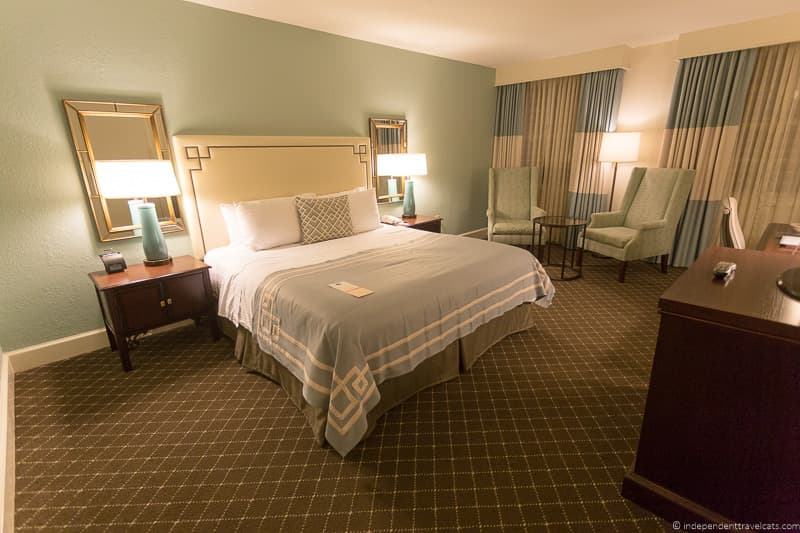
Further resources about Charleston plantations?
Each plantation has its own website that will offer all you need to know about admission prices, tour times, whether tickets can be booked in advance, closure dates, restaurant openings, contact information, etc. and these links are all included below in this post.
To learn more about the plantations around South Carolina, this website is a good resource on finding historical information on South Carolina’s plantations. You might also consider checking out books about South Carolina’s plantations and historic homes.
For more trip planning information check out our suggested 2 day Charleston itinerary and the local Charleston official tourism website . If you are traveling elsewhere in the Southeast, you might also want to take a look at our suggested Deep South road trip itinerary .
For guidebooks, consider the latest edition of Lonely Planet’s Charleston Guide or Fodor’s Carolinas & Georgia Guidebook .
What else is there to do in Charleston South Carolina?
Charleston is full of interesting historical and cultural attractions. A few possibilities include:
- Wander the Historic District – Historic houses, beautiful squares, and more await you with a leisurely wander around central Charleston. Don’t miss Market Street with its quaint shops and stalls, or a visit to the Old Slave Mart Museum to learn about the history of slavery in Charleston. If you want a guide to help point out the highlights and provide more context, consider a walking tour or horse-drawn carriage tour .
- Visit the Charleston Museum – The Charleston Museum was founded in 1773 and is commonly regarded as the first museum in America. It tells the story of Charleston and the South Carolina Lowcountry through a number of exhibits. The museum also operates two nearby historic homes that you can tour.
- Take a Stroll in Waterfront Park – Take a walk along the beautiful seaside esplanade within this 8-acre park. This is also where you’ll also find the the iconic pineapple fountain.
- Visit Fort Sumter – The first shots of the Civil War were fired from this island fort in Charleston Harbor. The Fort Sumter Historical Site is now operated by the National Park Service and makes an excellent short outing from the city.
- Take a Ghost Tour – A city with such a rich history is bound to be full of ghost stories. Consider taking a ghost tour to learn about the history, culture, ghosts, and supernatural hauntings of Charleston.
- Try the Lowcountry Cuisine – Some local dishes include she-crab soup, shrimp and grits, gumbo, Oyster Roast, local rice dishes, and crab cakes. Also try the South Carolina BBQ. We did this small group food tour on our first day which was a great introduction to the local food scene.
- Soak up the sun at Folly Beach – This beach is just a 20 minute drive from downtown and the perfect spot to watch the sunset, have a picnic, or frolic in the waves.
To help you start planning your time in Charleston, take a look at our suggested 2 day Charleston itinerary .
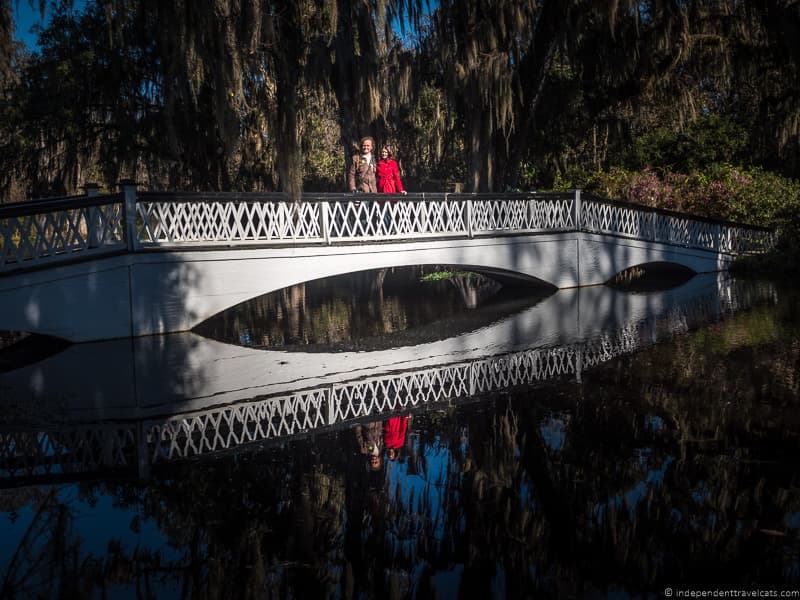
Guide to 6 Charleston Plantations
We have the full run down on the six major plantations near Charleston. We focus on those that are open year-round to the public, offer regular tours and other tourist services, and are of greatest interest to visitors.
Do note that there are other plantations in and around Charleston. Many of these are either private residences or being used as private hire wedding and event spaces such as Lowndes Grove Plantation.
But there are other plantation houses and plantation historic sites worth visiting that are open to the public and most are run by state, federal, or city government entities.
These include Charles Pinckney National Historic Site , Hampton Plantation State Historic Site , and the Grove Plantation House at the Ernest F Hollings ACE Basin . These sites offer fewer tourist services but are recommended for those with greater interest and more time to explore plantations in the area.
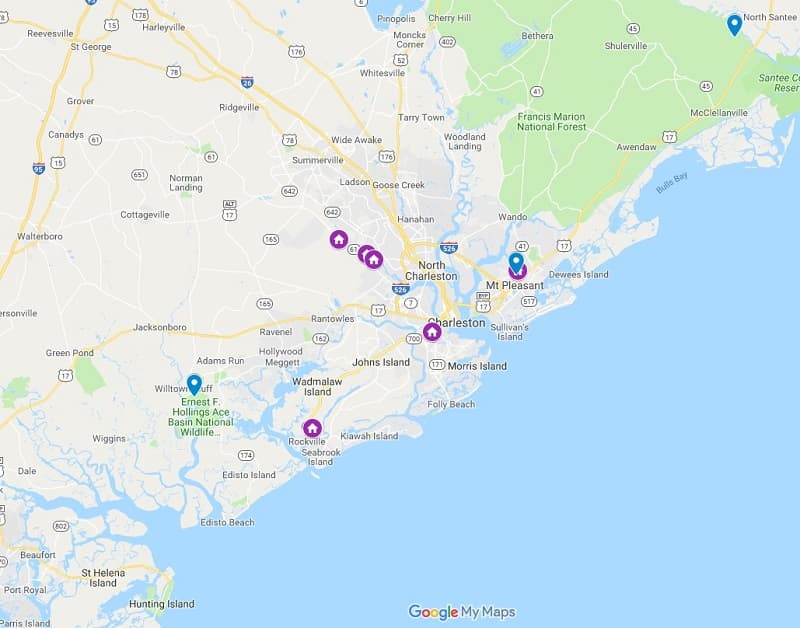
Now, we take a detailed look at each of the six Charleston plantations, listed in no particular order:
Magnolia Plantation
Magnolia Plantation is one of the most visited plantations near Charleston. It was founded in 1676 by the Drayton Family, making it one of the oldest plantations in the country. Rice was the primary crop grown here and it was one of the first rice plantations along the Ashley River.
The plantation is still owned by the Drayton family who have maintained the plantation through wars and natural disasters. The original house was ransacked by the British but survived the Revolutionary War. During the Civil War, Union troops set fire to the second house here in 1865, burning it to the ground.
Magnolia Plantation is probably best known for its gardens which were planted in the 1840’s by Reverend John Drayton. He created a series of romantic gardens while recovering from tuberculosis to help his new wife Julia from Philadelphia feel more at home.
Today these Romantic-style gardens are the oldest unrestored gardens in the country, best known for their large collection of camellias. The gardens were first opened to the public in the 1870’s, making them the oldest public tourist attraction in the South Carolina Lowcountry.
In addition to the Romantic gardens, there is also the Audubon Swamp Garden, where visitors have a good chance to see lots of waterfowl, including egrets and herons, turtles, frogs, and alligators.
Magnolia is the plantation near Charleston that has been open the longest as a tourist attraction and it offers a wide and varied set of tours and attractions.
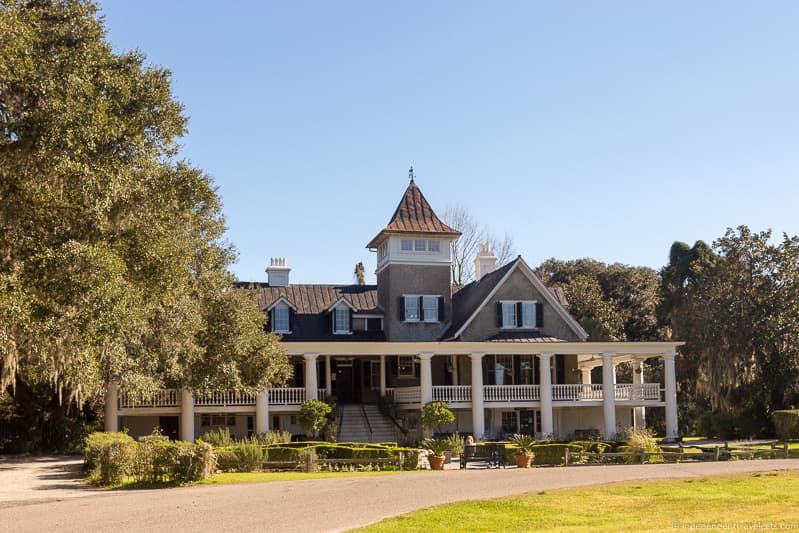
Address: 3550 Ashley River Road, Charleston, SC 29414 Magnolia Plantation Website: www.magnoliaplantation.com O riginal Date of Main Plantation House: T he first plantation house was built in the 1680’s by Thomas Drayton and his wife Ann Drayton. This original house was struck by lightning and burned down in 1810. The second house completed in 1811 was burned by the Union troops in 1865 during the Civil War. The current house was constructed on the site of the former house in the early 1870’s. Part of the house is believed to be from a pre-Revolutionary War hunting lodge owned by the Draytons in Summerville that was floated downriver to the current location. Architectural Style: It is believed that the original home was a large brick Georgian mansion and the second house was a 2-storey farmhouse. The current house has various architectural style influences including Victorian and Queen Anne style. Main Cash Crop: Rice Working plantation today?: No Owners: The plantation was established in 1676 by Thomas and Ann Fox Drayton, and is still owned by the Drayton/Hastie family. The Drayton family lived in the current main house until 1975. Tours/Tour Guides: The Plantation House can only be visited via a guided tour. Additional tours offered include a Nature Tram tour of the plantation’s flora and fauna, a Nature Boat ride around the former rice fields, and a Slavery to Freedom tour that explores the former slave cabins, the African-American experience at Magnolia, and Gullah culture. There are also Sunday bird walks. The gardens and Audubon Swamp Garden can be toured on one’s own. Tour guides do not wear period costumes. Main House Furnishings: The house is fully furnished with furniture, household objects, art, and early American antiques from the Drayton family who have owned the plantation since 1676. Most of the objects date from the 18th to 20th century. Other buildings to visit on property: The main historical outbuildings are the four slave cabins (built in 1850’s) plus a fifth cabin built around 1900; these cabins were lived in until the 1990’s. The cabins can only be toured as part of the slavery guided tour. Other buildings on site include the office, theater, conservatory, garden center, and carriage house. Slavery Information: There is a guided tour offered of the restored slave cabins (4 1850’s cabins and one freeman’s cabin from 1900) which traces the African-American experience at Magnolia from slavery through the Civil Rights movement. Each of the former slave cabins was restored to represent a different time period: 1850 slave cabin, an 1870 freedmen’s home, a 1900 gardener’s home, a 1930 gardener’s home, and the 1969 Civil rights-era home of the Leech Family who lived here until the 1970’s. There is also an introduction to Gullah-Geechee culture. Gardens: There are extensive gardens at Magnolia Plantation, and these have been a tourist attraction for over 100 years, and some of the details date back to the plantation’s creation, making them the oldest unrestored gardens in the United States. The gardens are an outstanding example of the Romantic Garden movement, an Industrial-era gardening philosophy designed to emphasize beauty and escape over order and organization. Photography Allowed: Photography is allowed everywhere except inside the main house. Food: The Peacock Cafe serves breakfast, sandwiches, snacks, and drinks. Gift Shop: Yes, there is an extensive gift shop here. Accessibility: The main house is not wheelchair accessible, and requires 12 steps to access the main floor and another 12+ steps to reach the top floor. The slave cabins interiors are also not wheelchair accessible and each requires 2 to 3 steps. The shuttle that takes visitors to the slave cabins and the nature trolley are both wheelchair accessible using ramps. The cafe, petting zoo, boat tours, garden center, theater, Audubon Swamp, and most of the garden pathways are wheelchair accessible. There is a wheelchair accessible restroom located near the main plantation house. Days Tours Available from Charleston: This half day tour from Charleston visits Magnolia Plantation and includes round-trip transportation as well as guided tours of the house, gardens, and grounds. Lodging: No lodging on site. Crowds: L arge. Magnolia Plantation is one of the most well-known and frequently visited plantations in Charleston. Most Unique: The award-winning gardens and the nature and swamp here really stand out. The fact that it has been owned (and is still owned) by the same family for 300+ years is also unique.
Our Impressions of Magnolia Plantation
We enjoyed our time at Magnolia Plantation, and liked that there were so many different things to do. You could easily fill a full day here if you did all the tours and saw everything at the plantation, and we recommend planning to spend at least 3 to 4 hours here.
The basic admission ticket includes the orientation film, access to the historic gardens, petting zoo, maze, and plant conservatory. However, if you want to do the house tour, slavery tour, nature tram tour, boat tour, of Audubon Swamp Garden, these all cost extra.
So if you are mainly interested in the gardens, then the basic admission ticket is for you. But you’ll need to pay more to do the rest of the tours. If you want to do all the extra tours and spend the whole day, I’d recommend getting the inclusive pass (if offered, not always available) during your visit as it saves you about $8.00 on the total cost.
We recommend watching the 30 minute introduction video to start your visit. It provides a nice overview of the history of the plantation and the people who lived there.
The gardens here are a highlight if you like more natural and wild gardens. We heard one person saying they look unkempt, so if you prefer landscaped gardens, these may not be the style of gardens for you. The bridges over the ponds here are also very picturesque and a popular place for engagement and wedding photos.
This is probably the best plantation for those who enjoy nature, as you can also take the Nature Tram Tour, boat tours, and/or wander along the Audubon Swamp Garden. We saw a number of different bird species (e.g, woodpecker, egret, ibis, storks, ducks, heron), turtles, squirrels, and alligators. If you have an interest in birds, you may want to join the Sunday Bird Walks that are led by a local ornithologist.
Be sure to bring insect repellent with you if visiting from Spring to early autumn as the ponds, old rice fields, and swamp areas are a prime breeding ground for mosquitoes and other insects.
Magnolia Plantation is where Joseph McGill first started the Slave Dwelling Project and he has helped shape the tours here and he even leads them on some days! Definitely recommend taking the time to do the From Slavery to Freedom tour and viewing the exhibits in the former slave cabins.
We enjoyed the house tour, but I think some people are surprised the house was built here after the Civil War and is perhaps not as lavish inside as they were expecting. If you are interested in the house, Drayton family, and their history, this is a good place to learn about it. If not, you may want to skip the house tour.
Magnolia Plantation is a popular option for families and groups as it offers a lot of options for those with divergent interests. The gardens give young children plenty of space to explore and there is also a maze, playground, miniature horse pasture, petting zoo, and picnic area.
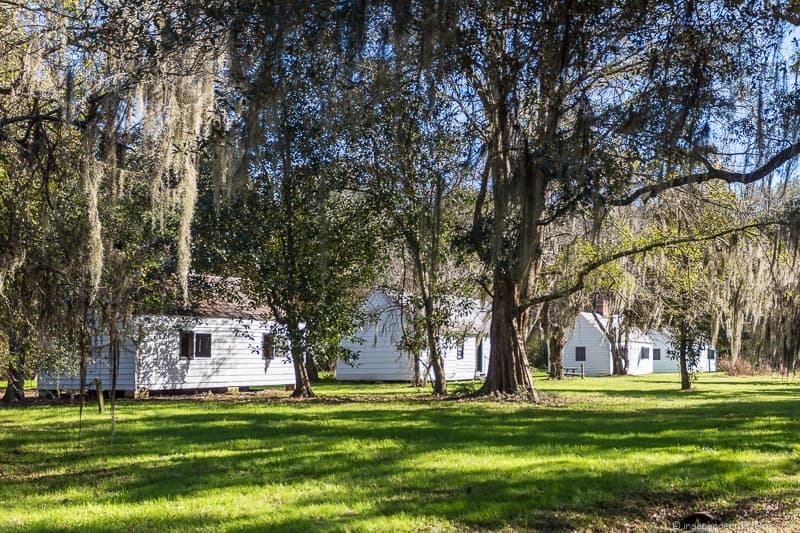
Boone Hall Plantation
Boone Hall Plantation was founded in 1681 by John Boone. Cotton and indigo were both grown here, and Boone Hall became one of the lead producers of pecans in the United States in the late 19th century.
Although Boone Hall was notable for its crops, brick making was a huge source of wealth during the Horlbecks tenure. The Horlbeck brothers, using a large slave labor force, produced millions of bricks a year in the mid 19th century. They were also one of the few brickmaking producers still operating after the Civil War.
Today, the plantation is still a working farm and crops have been continuously grown here for hundreds of years, making it one of America’s oldest working farms. Whereas in the past they grew cotton and pecans, they now grow a variety of produce like peppers, peaches, strawberries, and tomatoes.
Visitors today can still see the working farm, and at certain times of the year can even help pick the fruit and vegetables. The plantation is also well known for its festivals, such as its Halloween events and its strawberry and oyster festivals. Its Lowcountry Oyster Festival is the world’s largest oyster roast.
Although it doesn’t have an original house on site, it does have a number of antebellum outbuildings including well-preserved brick slave cabins and is well-known for its Gullah cultural program. It also has a beautiful mature live oak alley, which is very photogenic.
Boone Hall has been the plantation near Charleston used most for filming. It has appeared in TV series such as North and South , Days of Our Lives , the 1993 mini-series Queen (by Alex Haley) , and the 1994 Scarlett mini-series (sequel to Gone with the Wind ). It was also used in the popular 2004 romantic film The Notebook as Allie’s parents’ summer house.
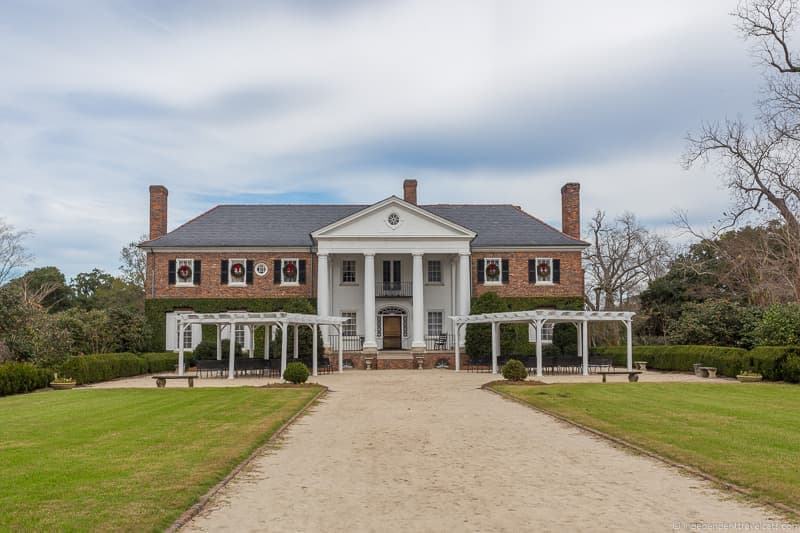
Address: 1235 Long Point Road, Mount Pleasant, SC 29464 Website: www.boonehallplantation.com O r iginal Date of Main Plantation House: The original house was built by John and Elizabeth Boone circa 1680’s and was likely a small cabin. Then a second two-story frame house with a one-story front porch was built later. That two-storey house was demolished and the current house was built in its place in 1936 by former Canadian ambassador Thomas Stone and incorporates materials from the plantation’s old farm structures and salvaged historic bricks from the area. Architectural Style: Colonial Revival Main Cash Crop: Originally the main cash crops were indigo and cotton, but later the plantation became one of the largest pecan producers in the world. Brick making was also an important source of income throughout much of the 19th century. Working plantation today?: Yes, t oday, the plantation is often considered the oldest working plantation in the country, growing a variety of fruits and vegetables, including tomatoes, strawberries, pumpkins, peaches, peppers, and asparagus. At certain times of the year, the plantation allows visitors to pick and purchase their own fruit from the fields. A small field of cotton is also planted each year for demonstration purposes. Owners: The plantation has had a number of owners, the most significant being the Boones, Horlbecks, Stones, and McRaes. Boone Hall Plantation was founded in 1681 by John Boone and the Boone family lived here until 1811. The Horlbeck family owned the plantation from 1817 until 1935, and they greatly expanded the plantation’s brickyard and planted pecan trees. Thomas Stone and his wife owned it from 1935 to 1940 and built the current house. Harris and Nancy McRae purchased the plantation in 1955 and the McRae family still own the plantation. Tours/Tour Guides: The main plantation house can only be visited by a guided tour. However, only 4 rooms on the main floor are open to the public to tour as the top two floors are being used as a private residence. There are also tractor tours rides around the large farm that focus on the agricultural history and current farming operations, live slave history presentations, and live presentations on Gullah culture. Visitors can also explore a self-guided black history exhibit, front gardens, and butterfly pavilion on their own. House tour guides wear antebellum period costumes. Main House Furnishings: The first floor of the house is furnished with antiques and period sympathetic pieces to resemble an antebellum planter’s home, but the furnishings are not from the original antebellum house. Other buildings to visit on property: There are 9 brick slave cabins (built between 1790 and 1810), a cotton gin (built in 1850’s), smokehouse (oldest building on site c. 1750), and stables (1930’s). Along the Avenue of Oaks is a grave which is believed to be where Thomas Boone and his family are buried. There is also a hospitality center (seasonal), dock house, and a butterfly pavilion (seasonal). Slavery Information: Boone Hall offers daily live talks on both slavery and the Gullah culture. The 9 former slave cabins are unique in that they were built from brick (most slave cabins were built from wood) and each contains different exhibits about slavery and African American history that you can visit on a self-guided tour. Gardens: Yes, there are gardens located in the front of the house that form a butterfly pattern, where you can see heirloom roses as well as azaleas, camellias, and other flowers. The gardens attracts butterflies during the warmer months. You’ll also see the beautiful 3/4 mile long Avenue of Oaks leading to the house. Photography Allowed: Photography is allowed everywhere except inside the main house. Food: Yes, there is the Butterfly Café which offers a limited selection of sandwiches, snacks, ice cream, coffee, and drinks. Nearby is the Boone Hall Farms Market (2521 N Hwy 17, Mt Pleasant, SC 29466) which sells produce from the plantation farm and has a cafe where you can get hot meals. Gift Shop: Yes Accessibility: The house is not wheelchair accessible, and requires 6 steps to get inside and another several steps to visit all the rooms. The slave cabins each have 2 to 3 steps to get inside and the trolley requires 6 steps to get inside. The paths throughout the grounds and gardens are partially wheelchair accessible but some are sand or grass which can be difficult for wheelchair users. The Gullah Theater, garden center, and gift shop are wheelchair accessible and t here are wheelchair accessible bathrooms on site. Days Tours Available from Charleston: T his half day tour visits Boone Hall and includes a guided tour and all plantation entrance fees. Lodging: No accommodation on site. Crowds: Moderate to Large. Can be very busy, especially during events. We recommend checking the events schedule as events will mean larger crowds and that regular plantation tours and activities may be suspended. Most Unique: It is one of the oldest operating farms in the United States, unique factors are its beautiful Avenue of Oaks, its well-preserved brick slave cabins, and the Gullah live presentations.
Our Impressions of Boone Plantation
Boone Hall Plantation is a popular choice for those looking for a plantation to visit from Charleston. One reason is that the ticket price includes all the offered tours and attractions, so you don’t have to pay extra to visit the house or take the tours.
This plantation is also a popular choice because of its scenic oak alley, its appearance on popular TV shows and films, and its photogenic house. It also offers a variety of tours from the house tour to the slavery talks to the tractor tours of its farm. For locals, it is also a popular spot for annual festival events.
One thing that disappoints some visitors is the house tour. I think a lot of people see a photo of the house and assume that it an antebellum house and that they will get to fully explore the inside of the house. But the house only dates from 1936 and although it is furnished with antiques, these are not original to the house. Visitors can only currently see the 4 rooms on the ground floor as the top floors are a private residence. So if you know this before you go, you won’t be disappointed!
If you decide to visit Boone Hall, we’d recommend at least 3 hours here, but you can easily spend half a day. We recommend coming early enough to be able to do all the plantation has to offer and especially recommend catching the Gullah presentation here as it is a highlight of the tours.
If you are here for lunch, there is also a picnic area where you can either grab some food from the little cafe or enjoy your own packed picnic lunch. Or you can stop at the Boone Hall Farms Market nearby after your visit.
If you have time, we recommend stopping at the nearby Charles Pinckney National Historic Site run by the National Parks Service. Charles Pinckney was a principal author and signer of the constitution and the site is part of Pinckney’s Snee Farm, which was a rice and indigo plantation. The 1828 cottage here serves as a museum and visitor center.

McLeod Plantation Historical Site
McLeod Plantation was one of the original plantations on James Island dating back to the 17th century, and it played a role in the American Revolution, Civil War, and Reconstruction. Today it is a 37 acre park dedicated to Gullah heritage and African American history.
Opened to the public in 2015, visitors can take a guided or self-guided interpretive tour of the site to learn more about the daily lives of the enslaved, Gullah culture, the lives of African Americans after the Civil War, and the cultivation of the land, particularly the growing of cotton.
Visitors can tour the original plantation house and contrast it with the living conditions in the slave quarters. They can also learn about historical daily life and the role of slavery and cotton in South Carolina history. This plantation also shines a light on the role the Civil War and Reconstruction period played in plantation and African-American history.
There is little focus here on the lives of the owners, architecture, or house furnishings, but this is probably the best place to visit if you want an unvarnished view of African American life on a plantation and to learn more about Gullah culture. The plantation focuses not only on the lives of the enslaved but also the lives of the formerly enslaved and their descendants after the Civil War to the 21st century, which is a time period less often mentioned during plantation visits.
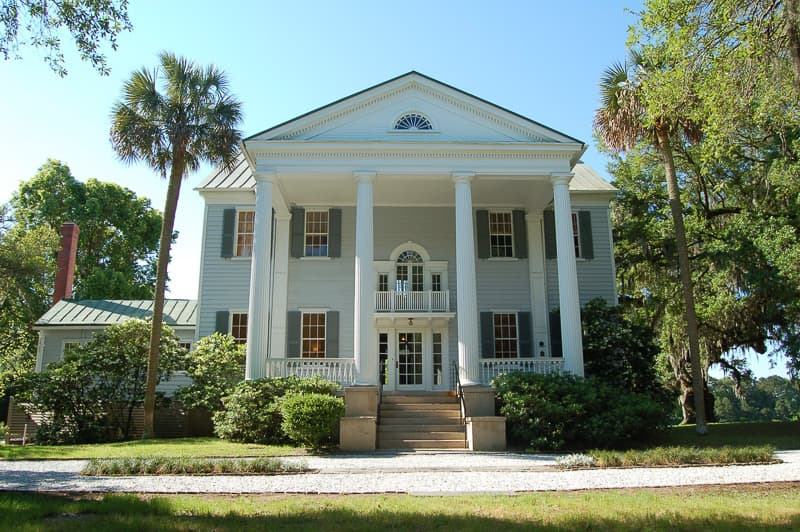
Address: 325 Country Club Drive, Charleston, SC 29412 Website: https://ccprc.com/1447/McLeod-Plantation-Historic-Site O rigina l Date of Main Plantation House: circa 1858 Architectural Style: The house is Georgian in style although additional features and additions have changed the look of the house over time, including the addition of wings to be used as a garage and for storage in the early 20th century and a 2-storey Roman Doric portico in 1926. The portico was added to the rear facade, and the rear is now used as the front of the house. These later changes were made to make the house appear more grand. Main Cash Crop: The plantation was used to grow indigo and cotton, and to raise cattle. The McLeods grew cotton until 1922 when the crop was wiped out by the boll weevil. Working plantation today?: No, although a small area of Sea Island cotton is being grown on the plantation again as a project by volunteers and staff for demonstration and educational purposes. Owners: The estate has been around since the late 17th century, and the property changed hands several times during the 18th and 19th centuries. It was purchased by William Wallace McLeod in 1851 who had the current house built and many of the agricultural buildings. During the Civil War the plantation was used as a headquarters for Confederates troops and then by Union troops. After the war, it was used as a local field office for the Freedmen’s Bureau before being returned to the McLeods in 1870. The final private owner, William E. McLeod died in 1990. The plantation has been owned and managed by the Charleston County Parks and Recreation since 2011; they opened it to the public for tours in 2015. Tours/Tour Guides: The McLeod Plantation Historic Site can be visited as part of a guided tour (included with admission) or can be done as a self-guided tour if you prefer (there is a phone app and signs to guide visitors). Regular 45-60 minute interpretive guided tours of the site are available multiple times a day that take place outside in the grounds. These tours are focused on Gullah culture, the lives of the African Americans who lived here (both during slavery and after Reconstruction), and the cultivation of the land. You can visit the inside of the main house on your own as it is not included as part of the tour (only the first floor is currently open to the public). Tour guides do not wear costumes. Main House Furnishings: There is little to no furnishings in the main house or outbuildings. Other buildings to visit on property: There are a number of outbuildings on site, including five former clapboard slave cabins with brick chimneys (late 18th century or early 19th century), a larger sixth cabin was built later, a cotton gin house (19th century), dairy (19th century with 18th century cellar), kitchen (19th century), and a 4-person privy. Most of the buildings continued to be used into the 21st century so some contain modern materials and features. Note that the interiors of the outbuildings can not be visited for safety reasons, but some are open for visitors to see the inside of them (from outside) and some house exhibits. There is also a slave cemetery on site, as well as the newly-built welcome center and pavilion. Slavery Information: The entire site is primarily focused on the African American slaves and tenants (from 18th century to 1990) who lived here and the Gullah culture. The regular guided interpretive tours here are the best place to get this information. There are also cabins on site that provided homes to African Americans from before the Civil War to 1990. There is also a slave cemetery that was re-discovered in 1996 which contains about 100 graves of people who are likely slaves at McLeod although much is unknown about the site and burials here. The site has been dedicated as a Sankofa memorial garden. Gardens: There are no manicured gardens here, but there is an oak allée and the huge McLeod Oak tree, which is thought to be more than 600 years old (perhaps even 1,000 years!). Photography Allowed: Yes Food: No, although a limited selection of snacks and drinks are available for purchase in gift shop. Gift Shop: There is a gift shop in the Welcome Center. Accessibility: The first floor of the main house is wheelchair accessible by using a wheelchair lift. The Welcome Center, gift shop, picnic pavilion, and toilets are wheelchair accessible. Many of the paths are gravel and walking tours go onto grass so can be difficult for a wheelchair. It is possible to arrange a golf cart for those with limited mobility to see grounds, but this should be arranged in advance of your visit to guarantee availability. Days Tours Available from Charleston: We haven’t found any tours that include a visit to McLeod, but the plantation is easy to reach by public bus from downtown Charleston. Lodging: No Crowds: Low to Moderate, this site is the most recently opened and is typically less crowded than other plantations. Most Unique: The focus on African American history, Gullah culture, and land cultivation.
Our Impressions of McLeod Plantation
This is the only plantation on the list we have not visited as it opened just after we were last in Charleston, so we cannot share our own personal impressions. However, it is exciting to know that this site has decided to focus on the subject of slavery and African American life which has often been whitewashed at plantations.
It is notable to point out that the first museum in the United States to focus on slavery was Whitney Plantation in Louisiana which only opened to the public in 2014. We have visited there and it was surprising to know that it took so long to have a plantation attraction that is more focused on the lives of the enslaved rather than the owners or the history of the plantation buildings.
Tours at McLeod Plantation focus on the history of African Americans in relation to the plantation, understanding Gullah culture, and the cultivation of cotton. Guides also share information about past residents to try to give voices to the history and also point out buildings and artifacts when relevant. For example, at the gin house one can see the fingerprints of an enslaved child who would have turned the 18th century bricks used in the foundation of the gin house.
The tours primarily take place outdoors on the grounds and do not visit the inside of the house or outbuildings. The outbuildings are currently not open to the public for safety reasons, but several have their doors or windows open so that the inside may be viewed from the outside. Some of these will likely open to the public in the future after more stabilization work is done.
Although the main house is not the focus of the tours here, the house is notable for being an original antebellum house built for the McLeods. This is one of only a few surviving original antebellum plantation houses in the Charleston area, although there were significant modifications made to the exterior and interior of the house over the centuries.
For those who are more interested in seeing a grand house, antiques, architecture, or manicured gardens, this is probably not the plantation for you. There are also not as many activities or amenities offered here as in some of the larger and more well-established Charleston plantations that have been open to tourists for decades.
But it is a great place for anyone wanting to learn more about the African American experience and the local Gullah culture. It is, of course, not the only Charleston plantation that includes good information on slavery or Gullah culture, but it is the only one in the area to focus on it almost exclusively.
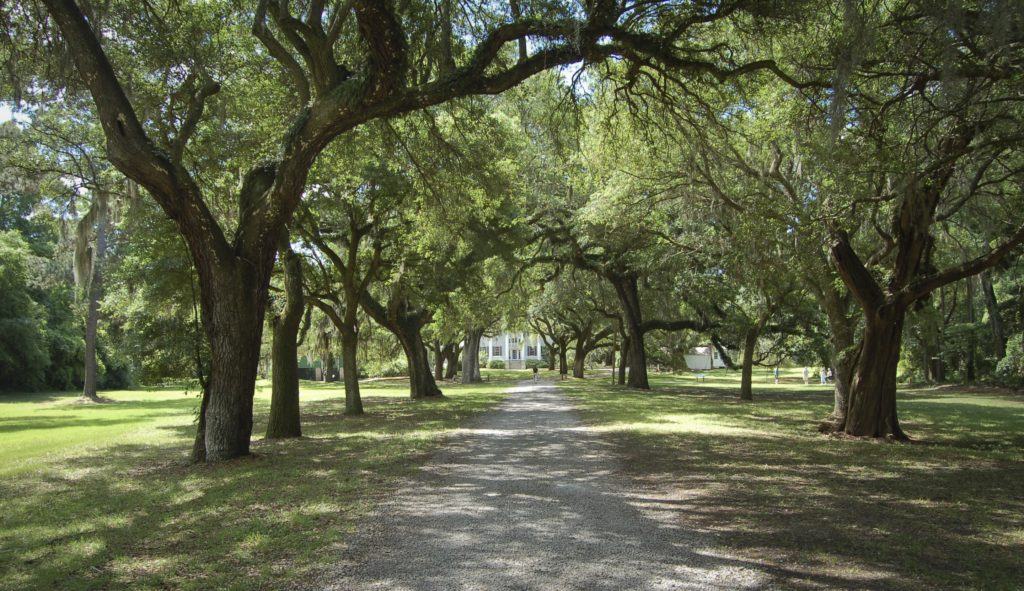
Drayton Hall
The Drayton family, owners also of the previously described Magnolia Plantation, owned a huge network of commercial plantations in South Carolina and Georgia. John Drayton, who had Drayton Hall built, was actually born on nearby Magnolia Plantation, but would move down the Ashley River to establish his own residence in 1738.
Drayton Hall survived both the American Revolution and the Civil War, and is the oldest surviving plantation house along the Ashley River. It is also considered one of the finest examples of remaining Palladian architecture in the United States.
In recent years, a lot of development and new offerings have been added to the Drayton Hall estate. Since 2018, the plantation museum has opened a new visitor center, exhibition space, garden, and a cafe.

Address: 3380 Ashley River Road, Charleston, SC 29414 Website: www.draytonhall.org O r iginal Date of Main Plantation House: Drayton Hall was established in 1738, and construction of the house was likely completed circa 1750. Architectural Style: Palladian Main Cash Crop: Rice and indigo. After the Civil War, the land was also used for phosphate mining. Working plantation today?: No Owners: John Drayton purchased the property in 1738 and the Drayton family would own the property and live here for generations. The Drayton family decided to sell Drayton Hall to the National Trust for Historic Preservation and the State of South Carolina in 1974. Today, Drayton Hall is a National Trust Historic Site and is run and operated by the Drayton Hall Preservation Trust. Tours/Tour Guides: The main house can only be visited on a guided tour, but the grounds, gallery, caretaker’s house exhibit, and cemetery are self-guided. For those interested in slavery, a special guided tour focused on slavery and the Lowcountry economy is offered twice a day. Tour guides are not costumed. Main House Furnishings: The house is largely unfurnished and has been conserved and preserved rather than restored to allow visitors (and researchers) to be able to see the original construction, materials, and architecture. There are a number of archaeological finds, pieces of furniture, art, letters, etc. that can be seen in the Gates Gallery, including items owned by the Drayton family. Other buildings to visit on property: In terms of historical buildings, t here is a c. 1870 caretaker’s house that is used as an interpretive space and also a large 7-person c. 1791 privy. Other places to visit on site include the newly-built Visitor’s Center and Stephen and Laura Gates Exhibit Gallery. Slavery Information: The best way to learn about slavery at Drayton Hall is to take the interpretive guided tour focused on slavery offered twice a day here. Drayton Hall’s African-American Cemetery is one of the oldest African-American cemeteries still in use, dating from at least 1790. The Caretaker’s House was built after Emancipation and the exhibit here focuses on the lives of African Americans at Drayton Hall after the Civil War as many families continued to live and work here in maintaining the house, grounds, and doing phosphate mining until around 1960. There is also information and objects related to slavery and the lives of African American at Drayton Hall in the Visitor Center and Gates Gallery. Gardens: There is a small formal courtyard garden. The Lenhardt Courtyard Garden was planted in 2018 and features a 200-year-old oak tree as well as plants that would have been at Drayton Hall in the 18th and 19th centuries. Photography Allowed: Yes, photos are allowed everywhere including in the house. Tripods and drones are prohibited on the property. Food: Rudi’s Cafe offers European-style sandwiches, meat and cheese plates, snacks, coffee, and drinks. They even offer wine and beer. Gift Shop: There is a gift shop located in the Visitor Center. Accessibility: The main house and 18th century privy building are not wheelchair accessible. For the house tour, visitors need to climb 39 stairs to do the full tour; however, a partial tour to see the main level of the house is possible and involves 16 stairs and supplemental materials can be provided for the short period when the tour visits the top floor of the house. The privy involves 3 steps. The Visitor Center, Gates Gallery, Caretaker’s House, cafe, and shop are all wheelchair accessible and can be accessed without stairs. Most paths are also wheelchair accessible although some paths are unpaved and may require assistance. Days Tours Available from Charleston: None of the tours (of which we are aware) currently include Drayton Hall. Lodging: No Crowds: Moderate Most Unique: Drayton Hall is the oldest surviving plantation house on the Ashley River. It’s also one of the oldest and finest examples of Palladian architecture in the United States.
Our Impressions of Drayton Hall
In our opinion, Drayton Hall has the most impressive plantation home of all the Charleston area plantations. First, because it is a grand Palladian building made of red brick with a 2-storey white columned portico.
But second because it is an original house that has stood on this site since c. 1750, whereas many of the other plantations in the area lost their grand antebellum houses during the Civil War. This house not only survived the Civil War and Great Earthquake, but it also survived the American Revolutionary War.
It is too bad that many of the other plantation buildings on the estate did not survive the wars and natural disasters over the centuries. The house, for instance, had two flakers which were destroyed by natural disasters in the late 19th century.
We also enjoyed learning about the history of Drayton Hall, from being used by General Cornwallis during the American Revolutionary War to being kept running through leases for phosphate mining.
The fact that the house stayed in the hands of the same family and has been preserved, rather than restored or rebuilt, allows you to see and better understand the building materials, construction methods, and architectural features. Of all of the plantations, the house tour provides the most information related to the construction and architecture of the house.
We visited Drayton Hall prior to all the recent additions and development, and at that time there was just the guided house tour and the grounds to explore. The house tour was definitely a highlight here and we enjoyed a short wander around the estate and visit to the African American cemetery.
We would be excited to return to see the new exhibits and gallery and do the slavery tour. It is also great that there is now a gift shop, and café. I think these additional attractions and services really make it a much more engaging stop and allow visitors to spend more time here.
Be sure to leave enough time to enjoy everything that Drayton Hall has to offer.
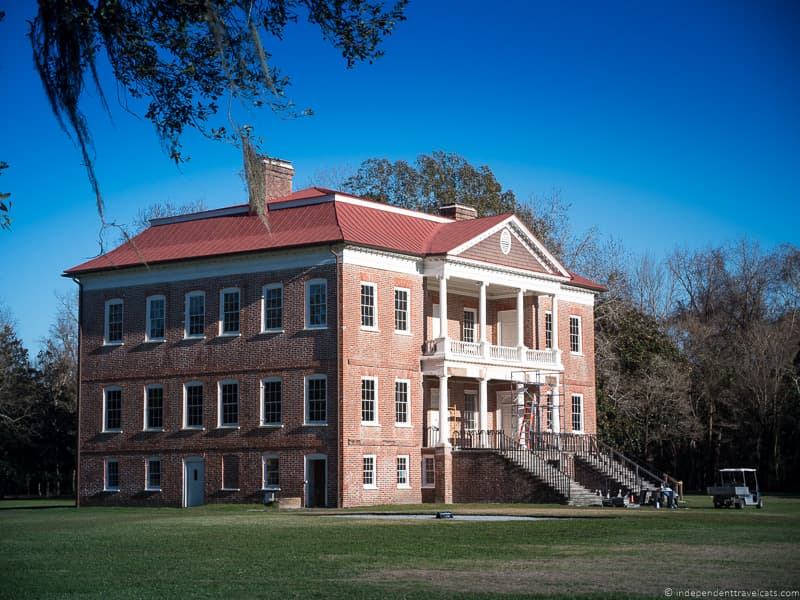
Middleton Place Plantation
Middleton Place Plantation is a National Historic Landmark, rich in history and natural beauty. The Middleton family which lived here were important figures in colonial America and residents of Middleton Place included a president of the First Continental Congress, a singer of the Declaration of Independence, a governor of South Carolina, and a signer of the Ordinance of Secession .
Middleton Place would go through a lot of troubling times. On February 22, 1865, Union troops plundered the plantation and set fire to the Middleton Place home. The main house and south flanker were damaged beyond repair, and later reduced to rubble by the Great Earthquake in 1886. But the family was able to rebuild the north flanker in 1869 and use that as their new residence.
Beautiful landscaped gardens were designed and planted by Henry Middleton in the 1740’s but these would be ruined and largely neglected after the Civil War. However, their restoration and expansion in the 1920’s would breath new life into this grand estate. Today the gardens are recognized as the oldest landscaped gardens in America and one of the most important.
Middleton Place has also been used as a filming location, perhaps most notable during the filming of the 2000 film The Patriot . The house serves as the setting where the British officers are having a ball and watch fireworks in the film.
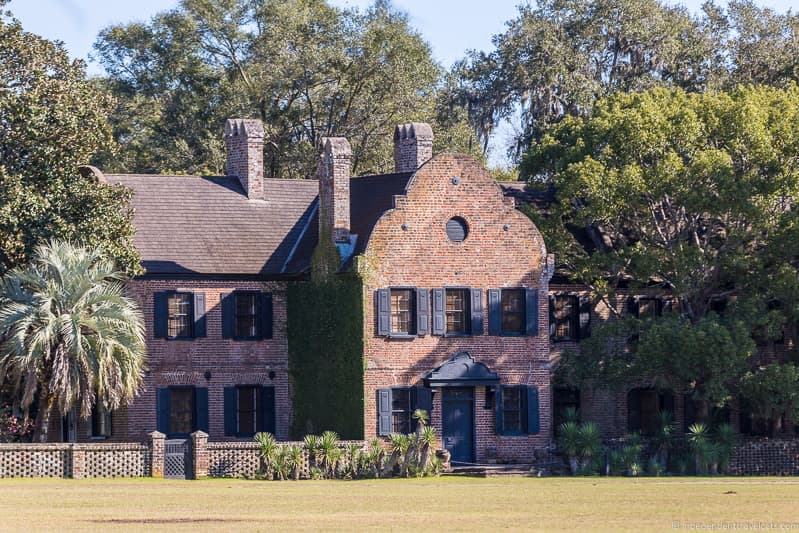
Address: 4300 Ashley River Road, Charleston, SC 29414 Website: www.middletonplace.org O riginal Date of Main Plantation House: Originally there were 3 main plantation house buildings . The original main plantation house was built circa 1705. Two flankers (dependencies) were built to the north and south around 1755. The main house and flankers were burned by the Union troops in 1865. The south flanker, which had served as a gentlemen’s guest quarters and business office, was the least damaged and was rebuilt in 1869 as the family home and is the house you see today. Architectural Style: The main house (now destroyed) was a 3-storey brick house and was likely Georgian in style. The flankers were also Georgian in style, but the rebuilt flanker now standing is more Dutch Revival in style. Main Cash Crop: Rice Working plantation today?: No, but there is a demonstration rice field where rice is still planted. Owners: The original plantation house (ruins) is believed to have been built by John Williams, the home’s original owner, circa 1705. The house and estate were given as a gift by John to Henry Middleton who married his daughter Mary in 1741. Henry established the gardens and later built the North and South flankers. Later, the Middletons rebuilt the destroyed South Flanker in 1869 and it was lived in by the Middleton family up until 1975. The house has been owned and run by the non-profit Middleton Place Foundation since 1974. Tours/Tour Guides: The main house can only be visited with a guided tour, but the grounds, gardens, and stableyards can be explored on one’s own. There are a variety of complimentary guided tours included with admission: a Garden Overview, Meet the Breeds (an introduction to heritage animal breeds), Beyond the Fields (black culture and slavery), and various seasonal Nature Walks. There is also a weather-dependent horse-drawn carriage tour of the grounds offered for an additional fee. Many of the t our guides House guides and many of docents doing craft demonstrations are costumed in period clothing. Main House Furnishings: T he Middleton Place house is fully furnished and contains a large collection of furniture, art, documents, and family heirlooms from the Middleton family that date from the 1740’s to 1880’s. Other buildings to visit on property : There are a number of outbuildings on the grounds, including the spring house and plantation chapel (18th century springhouse with upper part used as a chapel from 1851-1865), rice mill (built in 1851), Eliza’s House (c. 1870 freedman’s house and slavery exhibit), and barn and stableyards (built in 1930’s, where you’ll find the animals and craft demonstrations). You can also see the ruins of the 18th century main house and north flanker as well as the slave cemetery. Slavery Information: A regular guided walking tour is offered called Beyond the Fields which focuses on the everyday life and culture of the enslaved workers. You can also visit Eliza’s House, which is a Reconstruction-era house used for African American freedman and is named after the last resident, Eliza Leach, who lived here until the 1980’s. The house contains exhibits about slavery and African Americans workings at Middleton Place after the Civil War. There is also a small slave cemetery with a few gravestones, but the exact location of the slave burials is unknown as some of these stones were relocated here to protect them from further damage. For more information about slavery here, you may want to check out the book Beyond the Fields and the film of the same name. Gardens: Middleton Place is well known for its 65 acres of lush gardens, and they are the oldest landscaped gardens in the United States. Henry Middleton began to lay out the gardens in 1741, inspired by formal gardens in England and France. After the Civil War, the gardens would become neglected, but they would be restored and expanded by J. J. Pringle Smith (descendant of the Middletons) and his wife Heningham in the 1920’s and they would also open them up to the public for the first time in the late 1920’s. The terraced gardens contain a wide variety of flowers and trees. Some notable features are the sundial garden, the abundance of camellias and azaleas, and the Middleton Oak (large old live oak tree). Photography Allowed: Yes, photography is allowed everywhere except in the House Museum. No drones allowed on site. Food: There are two year-round places to get food here. The Middleton Place Restaurant offers seasonal low country food in a sit-down setting; reservations recommended for dinner. The Garden Market is a causal spot to eat, selling sandwiches, snacks, ice cream, and drinks. Gift Shop: The Museum Shop sells historical books, art, accessories, and souvenirs. The Garden Market & Nursery sells plants, garden tools, crafts, and home accessories, including items handcrafted by the local artisans. Accessibility: The plantation House Museum is not wheelchair accessible; it requires 3 steps to enter the main floor and then two sets of approximately 16 steps to do the full tour. Eliza’s House requires 4 steps to enter. There are wheelchair accessible paths in the gardens (ask for a map at admission); however, many of the paths are compacted sand and gravel and can be difficult to navigate, especially in inclement weather. The restaurant, stableyards, Museum Shop, and garden center are wheelchair accessible, and there are disabled parking spaces and wheelchair accessible bathrooms. The Inn at Middleton Place has wheelchair accessible rooms. Days Tours Available from Charleston: This half day tour includes transport, Middleton Place admission and tour, and a 3-course lunch at the Middleton Place Restaurant. Lodging: The Inn at Middleton Place is a modern 55 guest room hotel located on the plantation estate along the Ashley River. Guests at the Inn have free access to the plantation along with complimentary breakfast, option to rent bikes and kayaks, and access to an outdoor pool. Crowds: Moderate to l arge; t his is a popular spot. Most Unique: The plantation has the oldest landscaped gardens in the country and the house also contains a nice collection of 18th and 19th century antiques and furnishings.
Our Impressions of Middleton Place Plantation
Middleton Place offers a lot for visitors to see and do. You’ll want to spend at least half a day here, although you could easily spend a full day here. A rushed visit here is sure to feel overwhelming as you’ll be forced to choose between tours and have limited time to explore the grounds.
To get the most value out of your ticket, we recommend doing all the included talks and tours (slavery, gardens, animals) and seeing all the exhibits (Eliza’s House, craftspeople). The gardens here are special so take some time to wander around and appreciate them. The grounds also contain a number of outbuildings and historical sites that are worth seeing.
For the tours that cost extra (house tour and carriage tour), we recommend the house tour to those who want to know more about the owners and who enjoy antiques. The house isn’t original but the current one does date to 1869 and served as the home for the Middleton family and their descendants until the 1970’s. It contains lots of antiques and family heirlooms, but may not be as lavish as some visitors expect.
The carriage tour is OK but there isn’t a lot of unique information presented here if you do all the other tours. So if you want to save money, you can probably skip this one.
Middleton Place offers the nicest on-site restaurant of all of the plantations so a great place to have lunch or dinner. But you can also grab a quick bite from the Garden Market.
It is also the only plantation to offer on-site lodging, and this is an ideal place for visitors to stay who want a peaceful spot to stay outside of Charleston. A stay also gets you free entry into Middleton Place plantation, which is a significant savings for 2 people.
Middleton Place is a popular option for families and groups as it offers a lot of options for those with divergent interests. The gardens give young children plenty of space to explore and they may also enjoy seeing the animals and watching the craft demonstrations by local artisans.
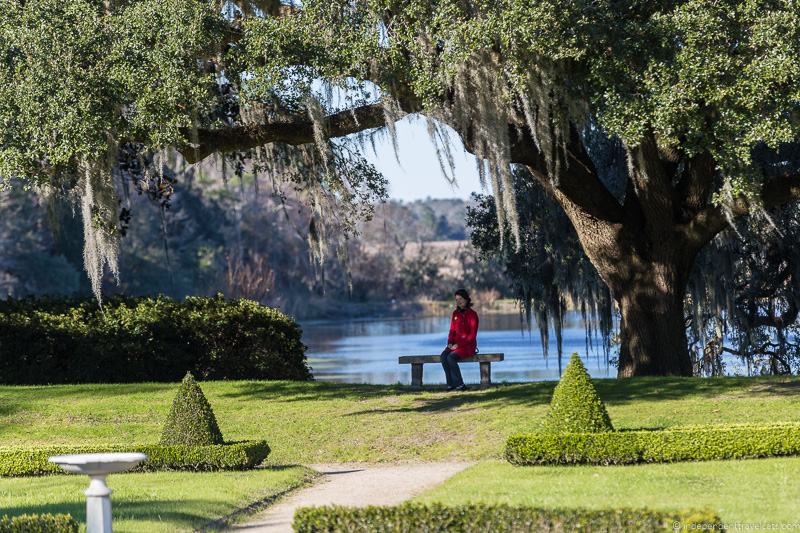
Charleston Tea Garden
The Charleston Tea Garden, formerly the Charleston Tea Plantation, is a bit different from the other plantations listed here. There’s no big house, slave cabins, or antiques. It is a modern 127 acre working tea plantation established in 1987 on Wadmalaw Island.
Although the tea plantation is not that old, the history of tea growing in the Charleston area goes back to 1799 when French botanist François André Michaux planted some near Charleston Middleton Barony (now Middleton Place). Clippings from these plants were later grown at the commercially successful Pinehurst Tea Plantation by biochemist Dr. Charles Shepard Jr. from 1888 to 1915.
Then in 1963, Lipton used clippings from the former Pinehurst Tea Plantation to grow tea at a research station on Wadmalaw Island at a former potato farm. In 1987, Mack Fleming and William Barclay Hall would take over this farm and establish the Charleston Tea Plantation. In June 2020, the Charleston Tea Plantation changed its name to Charleston Tea Garden.
Charleston Tea Garden doesn’t have any of the historical plantation buildings of the others on the list, but it is still worth visiting if you are interested in seeing a working plantation and are interested in seeing how tea is made. In 1995, an act was passed making South Carolina-grown tea the official state hospitality beverage in South Carolina!
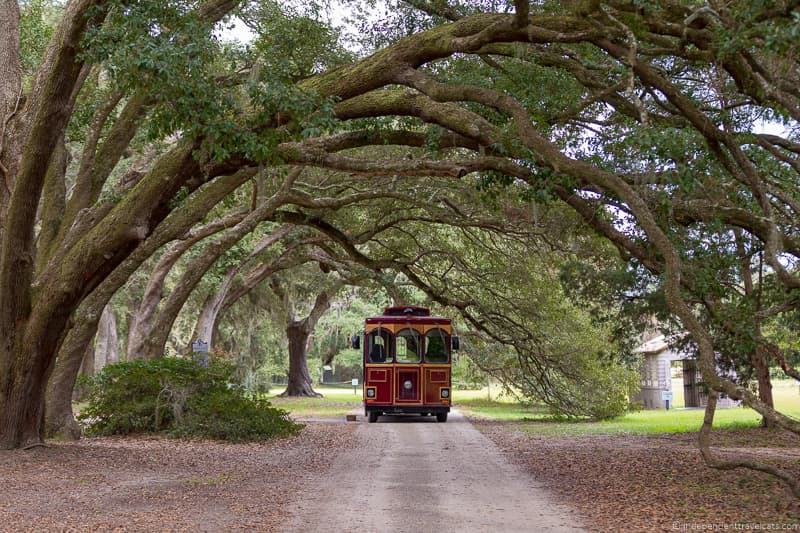
Address: 6617 Maybank Highway, Wadmalaw Island, SC, 29487 Website: https://charlestonteagarden.com/ O riginal Date of Main Plantation House: N/A, there is no plantation house Architectural Style: N/A Main Cash Crop: T ea. Before it was a tea plantation, it was a large potato farm. Working plantation today?: Yes, tea is grown and processed here on the tea farm. Owners: The Charleston Tea Plantation was founded by Mack Fleming and William Barclay Hall, a third-generation tea taster in 1987. In 2003, David and Eunice Bigelow, of the Bigelow Tea Company, purchased the plantation from Hall. The tea is now owned by the Bigelow Tea Company but Hall is still very much involved with the plantation. In 2020, the name was changed to Charleston Tea Garden. Tours/Tour Guides: The main tour here is the Trolley Tour which is a 40 minute guided our of the plantation via a historical trolley. There are also free 15-minute video-guided factory tours where you can see how the tea is processed. Private tours are also possible with the plantation founder William Barclay Hall but need to reserved in advance. Main House Furnishings : N/A Other buildings to visit on property : The main building on the property for visitors is the Welcome Center which includes the gift shop and factory tour. On the Trolley Tour, visitors also stop at the plantations’ greenhouse to see where the tea seedlings are grown. Slavery Information : N/A Gardens: No formal gardens. There are some beautiful old live oak trees here. Photography Allowed: Yes Food: There is a tea bar in the gift shop where visitors can sample both hot and cold tea. No food is served here, but you can purchase packaged snacks such as cookies, popcorn, and trail mix. Gift Shop: A large gift shop sells the tea from the plantation, tea-related items, body care products, snacks, souvenirs, and other items. Accessibility: The welcome center, factory tour, restrooms, and gift shop are wheelchair accessible and require no steps to visit. The trolley tour requires 4 steps to get into and out of the trolley. For those who cannot climb the 4 steps, a tour of the farm in a person’s own vehicle can sometimes be arranged with advanced notice. Days Tours Available from Charleston: This small group tour includes a visit and trolley tour of the Charleston Tea Garden, a stop at Angel Oak, and a visit to the local winery and a distillery. Lodging: None on site. Crowds: Moderate. Most Unique: Charleston Tea Garden is one of only a few working plantations you can visit in South Carolina and it is the only large commercial tea plantation in the United States.
Our Impressions of Charleston Tea Garden
We enjoyed our visit to the Charleston Tea Garden and it is a great place to learn about the process of tea making for any tea lover. We’ve visited tea plantations in other parts of the world (e.g., Vietnam and Sri Lanka) but it is great to be able to visit one in the United States.
Although the history of the plantation itself only goes back to 1987, the history of tea growing in South Carolina goes back over 200 years. Today, Charleston Tea Garden remains the only commercial tea plantation in the United States.
The tram tour allows you to see the fields, see what a tea plant looks like, learn how they are planted and harvested, and see the young plants in the greenhouse. Then the factory tour tells you more about the plantation and shows you how the tea is processed and turned into what we buy on the shelves.
The Charleston Tea Garden produces both black tea and green tea, and focuses on teas that taste good iced since most Americans consume tea cold rather than hot. Although the plantation is owned by Bigelow, the tea from the plantation is currently only sold under the American Classic and Charleston Tea Garden brand names.
Take some time after the tours to taste some tea samples and to have a look at the gift store. We purchased some of the plantation-grown tea here, but you can also purchase it online via the plantation’s website or on Amazon here . It is sold as loose leaf tea, tea bags, and bottled.
Wadmalaw Island is a great place for producing beverages it seems, and there is also a winery, Deep Water Winery, and a distillery, Firefly Distillery, on the island. The distillery actually produces a sweet tea vodka and a sweet tea whiskey using the tea from the Charleston Tea Garden.
If you are interested in visiting the winery and distillery as well, you might consider this tour which allows you to sample as much as you wish without having to drive. It also makes a stop to see the over 400 year old Angel Oak tree .
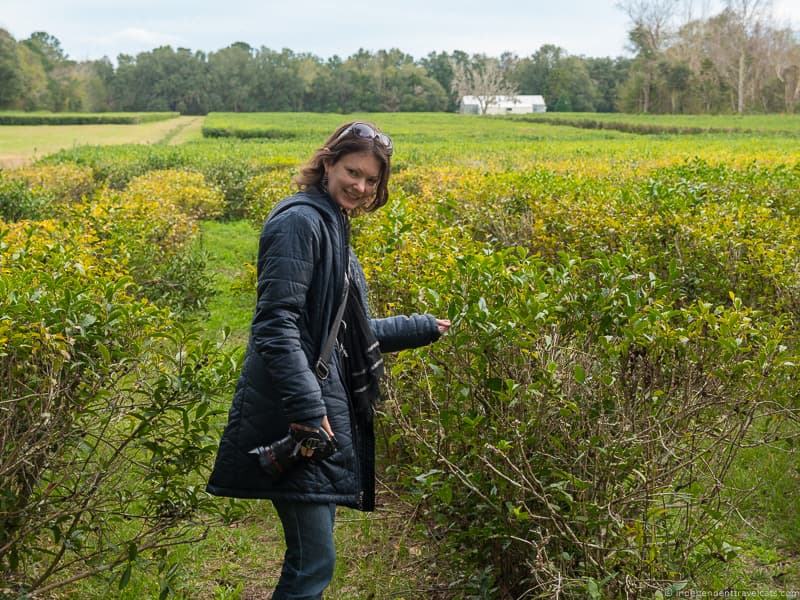
Tips for Visiting the Charleston South Carolina Plantations
Here are a few more helpful tips and reminders to help you plan your trip to the plantations around Charleston:
- Remember that all of the plantations are located outside of Charleston, so you will need to either drive or arrange transportation. McLeod is the only one that is easy to reach by public transit. Day tours visit the plantations, see this list , but be sure to book them in advance.
- Be sure to check the admission ticket prices and what they include before you visit. Some of the plantations include all the tours and attractions in the price, whereas at others you will need to pay extra for each tour you want to take.
- If you are visiting other attractions in Charleston, we recommend checking out this tour pass , which includes some of the plantations and can help you save money on your trip.
- Leave yourself plenty of time to explore the plantations. It depends on the plantations but some you could easily spend half a day or more exploring and doing all the tours. Ticket prices can be fairly pricey and we recommend taking full advantage of your entry fee.
- If you are visiting the Charleston plantations in the Spring, summer, or early Fall, we recommend taking along insect repellent , especially if you plan to spend time wandering in the gardens, doing a boat tour, or doing outdoor walking tours. Mosquitoes can be particularly bad in the summer months.
- Be careful when walking in the gardens and nature trails at the plantations as there are alligators, snakes, and spiders living on or near many of the plantations. Although they rarely attack people with provocation, you don’t want to accidentally step on a gator or snake! Be sure to be keep children within eyesight when exploring.
- All of the plantations allow outdoor photography but most do not allow photography inside the main houses, exceptions being Drayton Hall and McLeod Plantation Historic Site. Most do not allow drones or tripods on site.
- If you have limited mobility or are traveling with someone with limited mobility or special needs, be sure that the things you want to see can be accessed. Some of the plantations are able to accommodate special requests but these normally need to be arranged in advance to guarantee staff availability. See the Accessibility section for each plantation above.
- Be prepared for the South Carolina heat and humidity, particularly if you are visiting in the summer months. We recommend wearing light-colored loose and comfortable clothing made of breathable fabrics. Hats and sunglasses are also a good idea, and don’t forget the sunscreen.
- Wear comfortable practical shoes. Many visitors are surprised by how much walking they do at some of these plantations. Most of the plantations have acres of gardens, nature trails, and grounds that can be explored on foot. Paths can be muddy.
- We recommend bringing along a reusable water bottle to stay hydrated and save money on purchasing drinks. We also recommend thinking ahead about meals as some of the plantations offer food and some don’t.
- For more trip planning information, check out our suggested 2 day Charleston itinerary . If your travels are taking you elsewhere in the South, you may also be interested in our suggested Deep Southeast road trip itinerary , things to do in Huntsville Alabama , things to do in Savannah , and our guide to Louisiana plantations .
So that’s the end of our guide to the plantations of Charleston! If you are planning a visit to Charleston in the future, you can PIN this article to Pinterest to read later:

Have you been to any of these plantations in Charleston or have any of these on your must-see list? If you’ve visited any of these plantations, feel free to share any advice or tips of your own and please share any information updates.
If you have any questions about visiting any of these Charleston plantations or visiting Charleston in general, feel free to ask us in the Comments section below.
Share this Post!
There are 14 comments on this post.
Please scroll to the end to leave a comment
Paula C Post author
July 3, 2022 at 5:45 am
I am a native Charlestonian – I moved away for university and only visit for holidays and such. I certainly knew the plantations and “gardens” and have visited some of the great houses in the historic district. I am now trying to have good information ready for when friends want to visit. As an African American, Charleston’s antebellum grandeur and history hold very different perspectives for me. I love Charleston’s “antebellum” beauty, yet it came at a very high cost to humanity which still reverberates today. So, I really appreciated the way you addressed this re: the plantations. It was very respectful and real. Charleston in the antebellum period was extremely diverse ethnically, religiously, socio-economically – with a distinct and rigid social hierarchy with those of mainly of Anglo-heritage at the top (whose lives tourists gawk over). But at the root of Charleston’s antebellum development, wealth, splendor, culture is slavery – of Africans – and the limited freedoms of mixed race peoples as well as lower caste Anglos and other Europeans (I am waiting for this history to be addressed in tourism one day). But without enslaved Africans, there would absolutely be NO grand Charleston. Not at all. So, thank you for your very thoughtful and accurate representations – as well as your great suggestions for accommodations. I look forward to seeing where else you have traveled!
Jessica & Laurence Norah Post author
July 3, 2022 at 6:52 am
Thanks so much for taking the time to comment and share you own perspectives and experiences as a local Charlestonian, African American, and someone who has visited some of these homes and former plantations! I agree, the perspectives and meaning of these various plantations and historic homes is going to vary by the visitor. Obviously we try to share information that is balanced and respectful of anyone reading our travel blogs – this can be more challenging when writing about more controversial tourist attractions such as former plantations.
I think years ago, there was almost no discussion of slavery and African culture on plantation tours, but it is great that this has slowly changed over time. Many tours are now more balanced and not just focused on the lives on the rich white owners and their beautiful former homes. No tour can present everything or all perspectives, but it is great to see efforts being put into this. The lives of the enslaved and their culture is now the main focus at some places like McLeod Plantation Historical Site in Charleston and at Whitney Plantation near New Orleans, LA.
Thanks again for sharing your perspective, and I am glad you have found our article useful in planning trips for visiting friends.
Best, Jessica
Charlotte Post author
June 26, 2021 at 4:03 pm
Hello and thank you for all this good information and links. I’m planning a trip to Charleston Mid Sept 2021, is there is anything specific that you know is happening during this time? !! One note for your readers: the Tea Plantation is now called the Charleston Tea Gardens.
June 27, 2021 at 7:20 am
Hi Charlotte,
So glad you found our Charleston plantations guide helpful! Sounds like you have a great trip planned.
For local events, I’d check the Charleston CVB and other websites for Charleston events in September 2021 and you can put in your specific dates. For example in September, it looks like there is the Low Country Jazz Festival, Charleston Water Week, and Charleston Restaurant Week in terms of bigger things. But also art exhibits, jazz shows, a mystery dinner event, home baseball games (Charleston has a minor league team), and weekly farmer’s markets. So it will just depend on your exact dates and your interests. Some are free to attend and other will require tickets.
You’ll likely find more events scheduled closer to your trip departure. Many events and festivals might not be planning too far in advance, especially given the pandemic.
For any special events at the plantations, I’d check their specific websites as many do have special events throughout the year.
Thanks for letting me know about the name change from Charleston Tea Plantation to Charleston Tea Gardens, I will add that to the article.
June 27, 2021 at 9:21 am
Excellant. You are awesome.
Karen Migliori Post author
December 14, 2020 at 8:04 am
Yours is the best and most comprehensive article/guide I’ve seen on the Charleston plantations!
I have visited all but McLeod Plantation and you have certainty covered everything. My only tip would be to ditto your recommendation of staying at the Inn at Middletown Place. Not only does it include access to the Plantation, but when we stayed there that access was allowed even after the Plantation was closed to the public for the day. There is a path from the Inn to the Plantation, which we took to have dinner at the restaurant and then wander around the gardens without anyone else around. It was a very magical evening. The Inn also had for an extra fee and my husband took a private guided kayak tour on the river while I did the rice field wagon tour. I’m looking forward to returning for another stay.
December 14, 2020 at 8:20 am
Thanks so much for taking the time to comment and glad that our Charleston plantations guide was helpful. So happy to hear that you had a great time at the Inn at Middleton Place and visiting the plantation – I do think that staying overnight is a great way to make the visit more special and have more time to enjoy 😉 The extra tours sound really fun and the Ashley River area is really lovely – would love to do a trip on the river on a return visit!
Tecsi Post author
March 9, 2020 at 2:36 pm
Fabulous write up. Perhaps the best one on plantations I have read. Thanks for the good work.
March 10, 2020 at 10:47 am
Thanks Tecsi, glad you enjoyed it and hope you enjoy your trip to Charleston if you are planning a visit! Best, Jessica
MB Post author
February 4, 2020 at 6:23 am
Hi, I read that the houses were built in order to make enslaved people be able to serve those who owned the houses and their visitors. Are there any tours that emphasize the way rooms have almost invisible access points that enslaved people used for coming and going as they served those that owned them? Thanks. MB Boston
February 5, 2020 at 9:41 am
I am unsure the exact question you are asking, but I think you are asking if the houses when built had special features built in so that slaves could better serve the owners and do it without being seen? Yes, certainly, slavery and the want/need for a separation between the slaveowners and slaves had a huge influence on the architecture of plantation houses and other buildings of that period.
Most of the houses had some sort of pulley/bell system where they could easily call for slaves and certainly, there were often separate staircases, hallways, and service areas so slaves were easily accessible to the owners and could do tasks but were separate from the main areas of the house the family used. Some houses also had “secret” doors, rotating shelves, secret passages, and such. The system is not too unlike what you see in the grand country houses in Europe, especially in the UK, where you have a clear distinction of spaces for the “upstairs” family and the “downstairs” servants. But I think most visitors to a plantation would have certainly have seen the slaves, especially those working in the house.
I don’t think any of the plantation house tours really focus on this point, but it is certainly something you could ask about. Most of the wealthy plantation owners in and around Charleston also had a house in Charleston, and several of these you can tour. These may actually be better places to ask about this as the tours of the house specifically are generally longer and more focused on the house itself. Here the owners and slaves would have lived in much tighter confines as well and perhaps with a more strict sense of social separation than in the country so I wonder if this need for some separate space may have been more important in the city?
Another thing to perhaps ask about when visiting is whether slaves were involved in the building and construction. Many of the wealthy people’s town houses, plantation homes, and institutional buildings (churches, schools, clubs, banks) were built with slave labor (even children were often forced to make bricks). Some of the slaves were very skilled builders, craftsmen, and artisans and would have been known for certain kinds of work. In the city, slaves were often “loaned” out to do work as well.
Hopefully this at least somewhat answers your question and I think there are books out there that are focused on the slavery history and/or architecture that could give more expert advice on this topic 😉 Just let us know if you have any other questions about visiting the plantations in Charleston.
February 5, 2020 at 9:53 am
Thanks so much! What a thorough reply, Jessica.
Seana Turner Post author
March 24, 2019 at 11:02 am
This is a trip definitely worth taking! We visited McLeod when we went a couple of years back. I have to say we went in June, and it was incredibly hot. I like hot weather, and I was surprised. We were sitting for the Gullah presentation and I felt the perspiration running down my back:) It was so interesting, though, and I learned so much. My parents just got back from a trip, and I think March is probably the perfect time. As always, thanks for such detailed information!
March 24, 2019 at 11:16 am
Hi Seana, Yes, the summer can be a difficult time to visit the area, especially the plantations as so many of the attractions are outside and not air-conditioned. Glad you enjoyed the tour at McLeod though despite the heat! McLeod Plantation is the only one of the 6 we haven’t had the chance to visit so looking forward to visiting on our next trip to Charleston. Best, Jessica
Leave a Reply Cancel reply
Your email address will not be published. Required fields are marked *
Notify me of replies to my comment (just replies to your comment, no other e-mails, we promise!)
Subscribe to our monthly Newsletter where we share our latest travel news and tips
We only ask for your e-mail so we can verify you are human and if requested notify you of a reply. To do this, we store the data as outlined in our privacy policy . Your e-mail will not be published or used for any other reason other than those outlined above.

- Plantation Tour Combination Tickets
- Spring Events
- K-12 Field Trips
- Group Tours
- Private Guided Tours
- Getting Here
- Preservation
- Architecture
- Archaeology & Collections
- Online Exhibits
- Apparel & Accessories
- Books & Media
- From Our Collection
- Local Favorites
- Corporate Gifts
- Create Your Own Gift Box
- Events Calendar
- Private Events
- Image Gallery
- The Drayton Hall Fund
- Become a Member
- Corporate Friends of Drayton Hall
- Buy Tickets
The Most Important Plantation to Visit in Charleston, SC
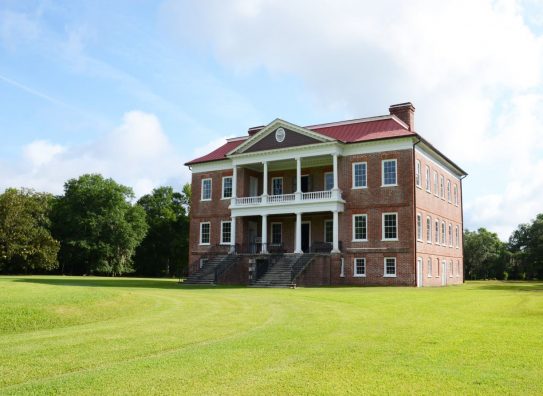
Drayton Hall is Charleston’s finest plantation. The plantations of Charleston which are open to the public are all located about ten miles outside the city area of Charleston, SC. Drayton Hall is the oldest and only preserved and accurate plantation house that can be visited and toured in Charleston. The house, which you can tour daily from 9 am to 3 pm, is c. 1738. Drayton Hall has not been restored and the museums galleries are the best plantation house museums to visit in Charleston.
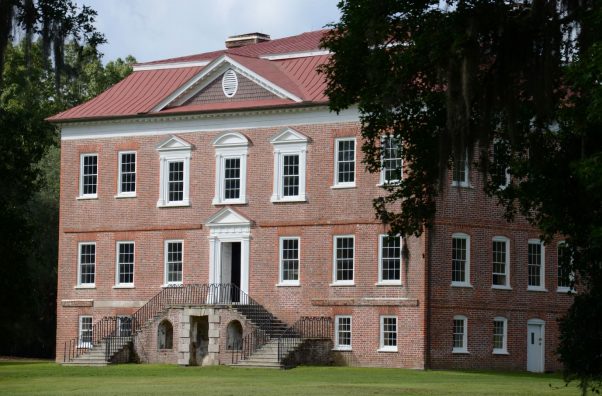
Unlike other plantations in Charleston, Drayton Hall is the only authentic colonial period home that you can tour. The other plantation homes in Charleston were either burned and no longer have houses or the houses were built in the 20th century. Drayton Hall survived both the Revolutionary War and the Civil War and is the only plantation tour in Charleston of a house that survived both wars and legitimately dates to the 18th century. Drayton Hall has remarkable museum galleries and exhibits on both the pre-Civil War and post-Civil War time periods and the role Drayton Hall played in the history of Charleston.
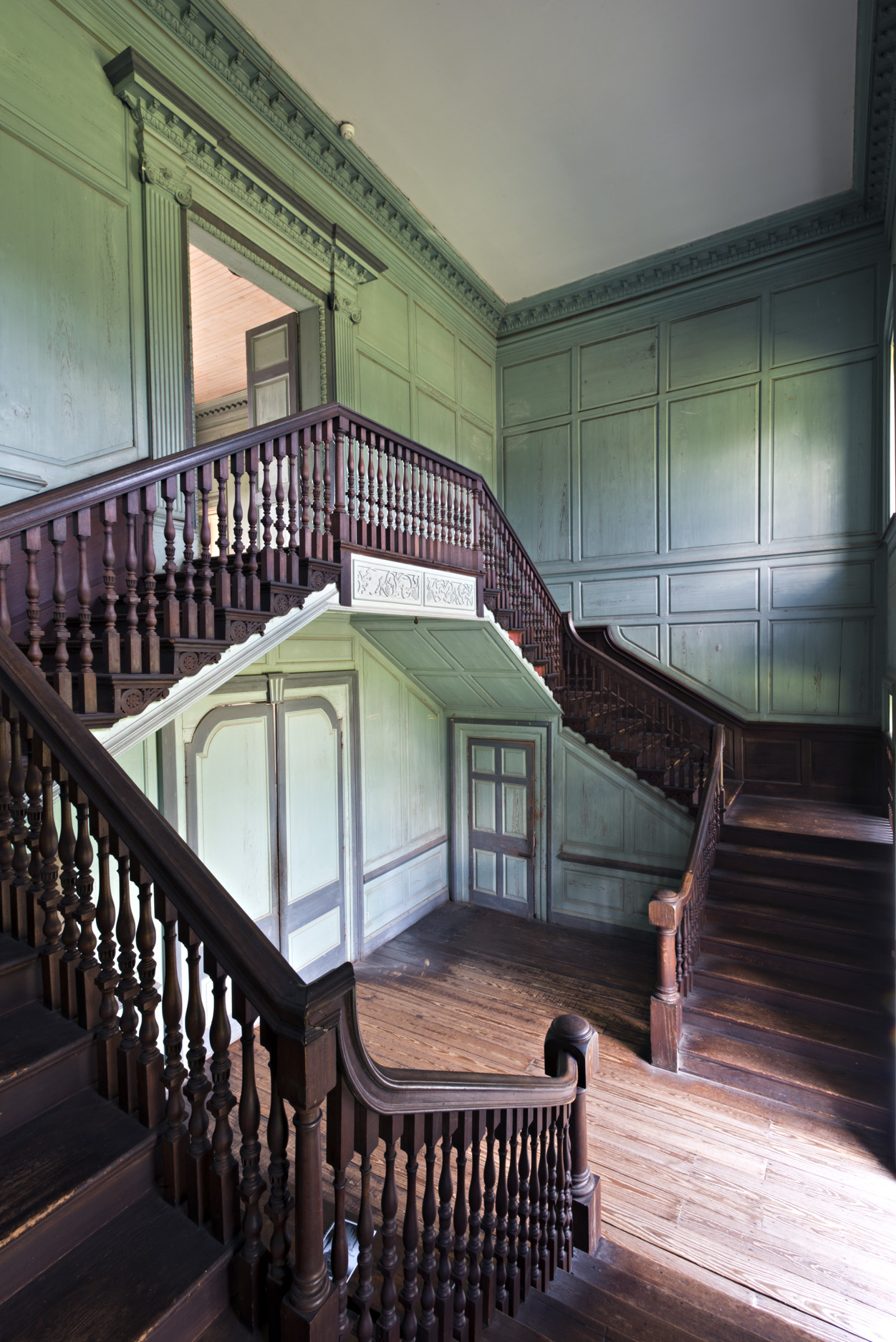
The post-Civil War economy in Charleston caused many plantations to stop operations if the plantations had survived. In the following years, many Charleston plantations were sold off for acreage. The Drayton family considered selling the bricks of the house to ensure the ownership of the land but phosphate was discovered on the former plantation land at Drayton Hall. The plantation property of Drayton Hall being leased for phosphate mining saved the house from being dismantled. Drayton Hall was only ever occupied by one family – the Drayton’s – patriots and signers of the constitution, owned Drayton Hall plantation for seven generations before the National Trust for Historic Preservation took over the management and opened it to the public in 1974. Drayton Hall continues to be an active archaeological site and has so far discovered artifacts from earlier Native American settlers as well as West African ceramic craft dating the pre-Civil War period of enslavement at Drayton Hall. Many of these artifacts are in the museum at Drayton Hall now.
Drayton Hall is one of four plantations open to the public in Charleston, and we believe it is the best plantation tour in Charleston. The plantation visit to Drayton Hall includes the house tour of Drayton Hall as well as a grounds and galleries pass, two museum galleries, and an interactive experience in the Stephen J. Wood Conservation Laboratory, your pass also includes access to the African American Cemetary. Unlike other plantations and plantation homes in Charleston which you can tour, only Drayton Hall has been preserved and offers the most authentic museum and tourist attraction in Charleston.
A visit to Drayton Hall will take approximately three hours and is the most important thing you will see when you visit Charleston, SC.
(843) 769-2600 info@draytonhall.org
3380 Ashley River Road Charleston, SC 29414
Drayton Hall's main house and landscape are open to the public daily from 9 am to 5:00pm* (gate closes at 3:30 pm). The gate will accept no cash transactions.

- Privacy Policy
- Terms of Use
- Get Involved
- North America
- South Carolina
- Charleston Plantations You Need To...
Plantations You Should Visit Near Charleston, South Carolina

The plantations of South Carolina were central to its wealth and power. Most of them used slavery to produce cotton, rice and tobacco, and in turn collapsed when slavery was abolished. They stand preserved to this day; these wondrous homes and magnificent gardens attract many visitors. Charleston reflects an American conundrum that is more compelling than ever today – to the point that it has become a global question. How is the legacy of slavery still as pressing as it ever was and what stories should be told? Here are some plantations for you to visit to help you engage with these questions for yourself.
Did you know – Culture Trip now does bookable, small-group trips? Pick from authentic, immersive Epic Trips , compact and action-packed Mini Trips and sparkling, expansive Sailing Trips .
McLeod Plantation Historic Site
Historical Landmark McLeod Plantation Historic Site was established in 1851 and tells a very American story. As a Gullah/Geechee heritage site it preserves and instructs the significance of this African-rooted culture. Standing as a living tribute to the suffering endured by black men, women and their descendants, it upholds the determination to achieve freedom, equality and justice to this day. Visitors are pressed to delve into the lives of all the people involved in this complex story to work out where they stand; gut-wrenching and beautiful.
Historical Landmark

About 15 miles away from Charleston on the Ashley River, lies the oldest unrestored plantation house in America. John Drayton, actually born on the nearby Magnolia Plantation, built this residence for himself in 1738. Having escaped the Civil War, the house has also survived the fate of being modified for tourists and stands well preserved. With their commitment to seek positive change through truth-telling, transparency and education, there is no whitewashing of the past here.
Middleton Place
Historical Landmark The stories told on these plantations are sometimes inescapably grueling, stories of people stripped of their names and living in slavery. Middleton Place, around 15 miles northwest of Charleston, believes in holding on to the spirit of those who worked the land and keeping these stories alive. The story of how the Middleton family came to sign the Declaration of Independence is the release. Stories of those who were enslaved and those who became free.

Considered to be the number one plantation in the Charleston area by USA Today , Boone Hall Plantation was founded in 1681 and is distinguished by its planted oak tree corridor as you drive towards the mansion house. TV and film buffs will recognize it from many famous productions such as North and South , The Notebook , Queen and The Tempest . It is possible to catch a live presentation by Gullah ladies in the gardens, promoting a positive and spiritual message of endurance and love.
Hampton Plantation State Historic Site
Historical Landmark One hour’s drive from Charleston is the imposingly grand mansion on the Hampton Plantation. The astonishing wealth that colonial times bestowed on the elite is clearly on display here, particularly in what could be described as the equivalent of a Hollywood mansion. This lavish display of wealth is juxtaposed with natural surrounds which are delightful to get lost in.
Magnolia Plantation and Gardens

Founded in 1676 on the Ashley River by the Drayton family, these are the oldest public gardens in America, and the most visited in the region. These famous grounds run wild with fabulous flowers and plants and, when spring is in full bloom, the colors are quite a sight to behold. From the nature train and rice-field boat tour to the glee of the petting zoo, there is much to keep you switched on and energized.
Since you are here, we would like to share our vision for the future of travel - and the direction Culture Trip is moving in.
Culture Trip launched in 2011 with a simple yet passionate mission: to inspire people to go beyond their boundaries and experience what makes a place, its people and its culture special and meaningful — and this is still in our DNA today. We are proud that, for more than a decade, millions like you have trusted our award-winning recommendations by people who deeply understand what makes certain places and communities so special.
Increasingly we believe the world needs more meaningful, real-life connections between curious travellers keen to explore the world in a more responsible way. That is why we have intensively curated a collection of premium small-group trips as an invitation to meet and connect with new, like-minded people for once-in-a-lifetime experiences in three categories: Culture Trips, Rail Trips and Private Trips. Our Trips are suitable for both solo travelers, couples and friends who want to explore the world together.
Culture Trips are deeply immersive 5 to 16 days itineraries, that combine authentic local experiences, exciting activities and 4-5* accommodation to look forward to at the end of each day. Our Rail Trips are our most planet-friendly itineraries that invite you to take the scenic route, relax whilst getting under the skin of a destination. Our Private Trips are fully tailored itineraries, curated by our Travel Experts specifically for you, your friends or your family.
We know that many of you worry about the environmental impact of travel and are looking for ways of expanding horizons in ways that do minimal harm - and may even bring benefits. We are committed to go as far as possible in curating our trips with care for the planet. That is why all of our trips are flightless in destination, fully carbon offset - and we have ambitious plans to be net zero in the very near future.

Places to Stay
Pillow talk: between the sheets of emeline hotel, charleston.

See & Do
Best day trips from charleston, south carolina.

The Best Hotels to Book Near the Citadel, Charleston

The Best Hotels to Book in Charleston's French Quarter

Things to Do at Night in Charleston, South Carolina

The Best Hotels to Book Near Charleston City Market

The Best Bed and Breakfasts to Book in Charleston, South Carolina

The Best Boutique Hotels to Book in Charleston, South Carolina

The Most Haunted Places to Visit in Charleston, South Carolina

The Best Hotels to Book Near the South Carolina Aquarium, Charleston

The Best Hotels to Book Near the Angel Oak Tree, Charleston

The Best Pet-Friendly Hotels to Book in Charleston, South Carolina
Culture trip spring sale, save up to $1,100 on our unique small-group trips limited spots..

- Post ID: 1001520375
- Sponsored? No
- View Payload

- Group Tours
- The Gullah luncheon
- Group Tours Request Form
- Lowcountry Strawberry Festival
- Black History Month Celebration
- The Boone Hall Pumpkin Patch
- Boone Hall Fright Nights
- Christmas Tree Festival
- Wine Under the Oaks
- Christmas At Boone Hall Plantation
- A Gullah Christmas Concert
- Lowcountry Oyster Festival
- Buy Tickets
First Slide

a must see stop on any trip to Charleston, S.C.
Boone Hall Plantation was founded in 1681 when Englishman Major John Boone came to Charleston and established a lucrative plantation and gracious home on the banks of Wampacheone Creek. The family and descendants of Major Boone were influential in the history of South Carolina, the colonies and the nation. In 1743, the son of Major John Boone planted live oak trees, arranging them in two evenly spaced rows. This spectacular approach to his home symbolizes southern heritage and will take root in your memory for many years to come. It would take two centuries for the massive, moss-draped branches to meet overhead, forming today’s natural corridor and a scene that NBC Daytime television says is “a must see stop on any trip to Charleston, S.C.” Boone Hall has also been recognized as the #1 Plantation in the Charleston Area by USA TODAY 10BEST.

Regular Days and Hours Of Operation Monday-Saturday 9AM-5PM Sunday 12PM-5PM Open 9am-5pm New Year’s Day
All tickets are general admission which includes access to all tours presented daily. tickets are valid for any one day the plantation is open for regular tour operations. ticket prices are as follows: regular adult admission $28 seniors-military-aaa $25 children (6-12) $12 children 5 and under admitted free with adult., view additional details.

Exploring The Gullah Culture
Boone Hall is the only plantation in the S.C. Lowcountry to present a live presentation of this unique culture adapted by African slaves.

House Tours
The mansion that exists on Boone Hall Plantation today was built in 1936 by Canadian ambassador Thomas Stone as part of the Second Wave of Reconstruction. Guided tours of the first floor allow guests to see how this Georgian-designed home blends recovered materials and antique furnishings to recreate an atmosphere that would have surrounded a Coastal Carolina planter’s family and his guests.
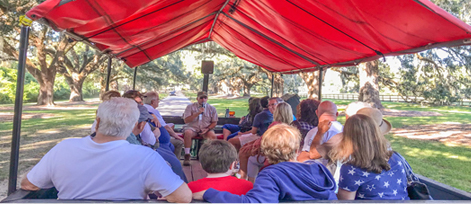
Plantation Tractor Tour
Take a 30 -40 minute motorized tour around the entire 738 acres that make up the plantation. You will see and learn about the history of Boone Hall and experience how it remains a working farm today. This is a visitor favorite.

Black History In America Exhibit
The critically acclaimed self guided tour is on display in nine original slave cabins year round.

Slave History Presentation
A tour guide presents a historical look at the living quarters, historic relics, and lifestyle of slaves that lived at Boone Hall.
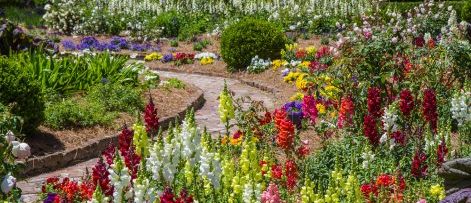
Garden Tour
Our garden is a showcase of color year round with plants and flowers for the Spring/Summer, Fall, and Winter seasons. One of the main features of our garden are dozens of antique rose varieties that were introduced over 100 years ago.
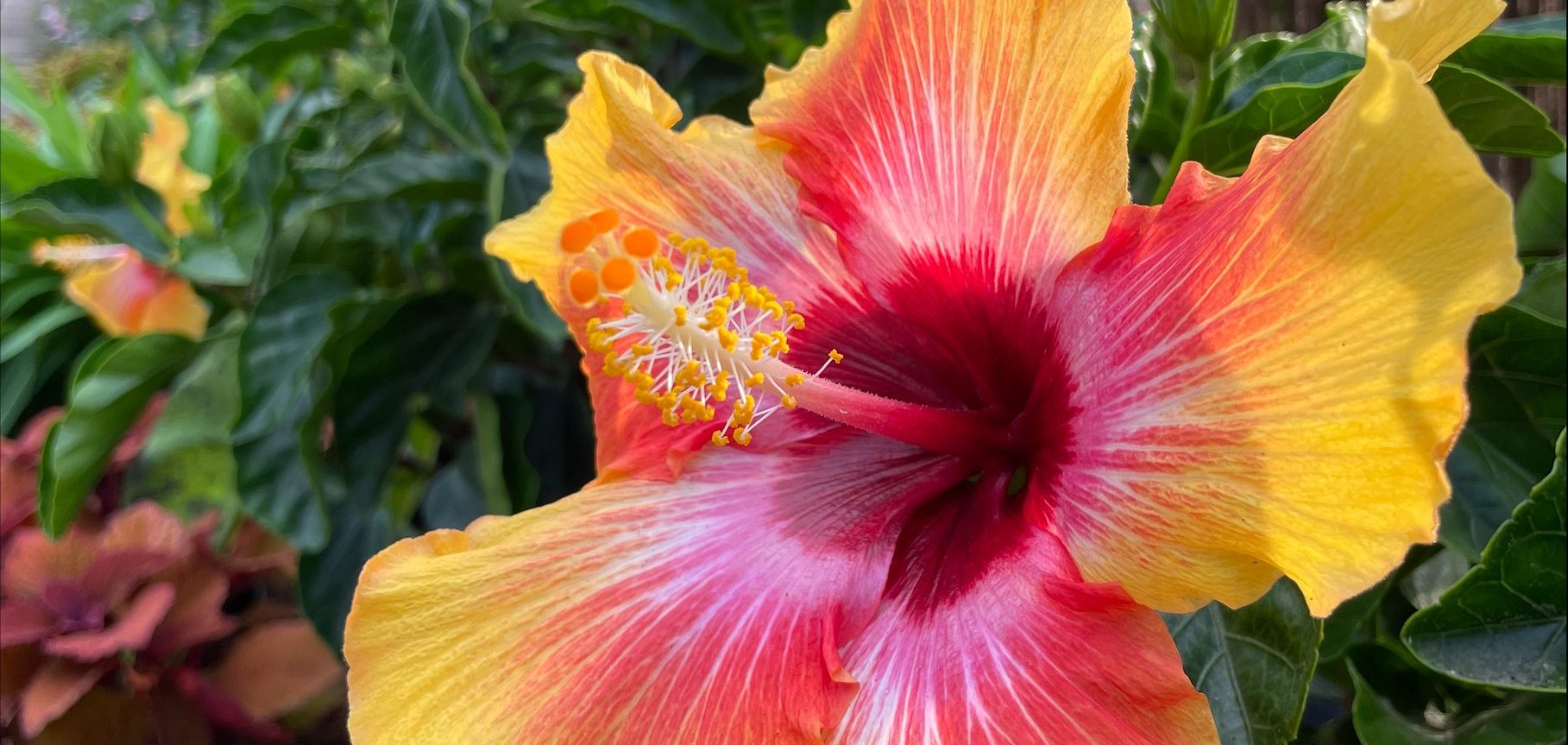
Tropic Conservatory
Our seasonal tropic house boasts an array of specialty plants including citrus trees, unusual foliage plants, lush ferns and stunning orchids. Koi fish, turtles and frogs inhabit several calming water features and fountains. This is the ideal spot to take a break, relax, and reflect on your day at Boone Hall Plantation.
IMPORTANT – PLEASE READ
Daily operations at Boone Hall Plantation & Gardens are posted at the entrance and are clearly visible when purchasing admission to the plantation. However, if you were not able to experience any of the attractions that were posted for that day due to inclement weather, please contact a Boone Hall representative and a “Second Day” ticket will be issued to you at no additional charge. The ownership and management of Boone Hall Plantation & Gardens wants all our visitors to have an enjoyable and positive experience during their time on the plantation.
For questions, please call Boone Hall Plantation at
843.884.4371 :: Mon - Fri 9 AM - 5 PM
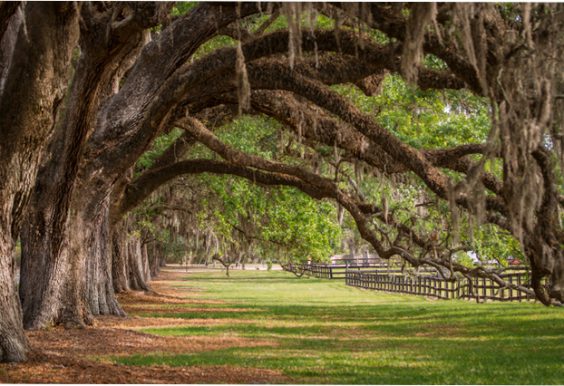
Boone Hall is also one of America's oldest still working farms.
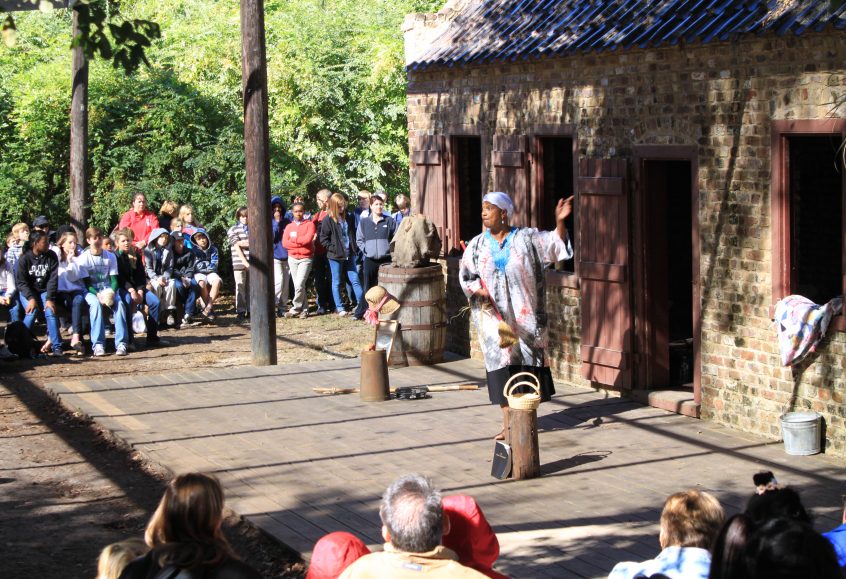
Exploring the Gullah culture
The history of the past is important. The difference is in how that history is presented.
“Exploring The Gullah Culture” is a unique presentation where that difference can be experienced first hand. Boone Hall is the only plantation in the Charleston area to present a live presentation of this unique culture adapted by African slaves.
True descendants of the Gullah people present the history of this culture through storytelling, song, and dance that is at times educational, at times entertaining, and at times…very moving and emotional.
These Gullah ladies share uplifting spiritual messages of love and understanding of how through overcoming the hardships of the past have brought them to a better place today.
Learn about our Gullah Luncheon
Read a Visitor’s First Hand Gullah Experience
“We must leave the divisiveness of the past behind in order to move forward and claim the future.”
Ms. Gloria Ford Gullah Presenter

America’s most photographed Plantation. Come see why.
- Avenue of the Oaks --> Avenue of the Oaks
- Black History In America - Slave Cabins --> Black History In America - Slave Cabins
- Butterflies --> Butterflies
- Gardens --> Gardens
- gullah --> gullah
- Plantation Home-Grounds-Nature --> Plantation Home-Grounds-Nature
- Lowcountry Strawberry Festival --> Lowcountry Strawberry Festival
- Boone Hall Pumpkin Patch --> Boone Hall Pumpkin Patch
- Uncorked --> Uncorked
- Wine Under The Oaks --> Wine Under The Oaks
- Weddings --> Weddings
- Corporate Events --> Corporate Events
- Education --> Education
- Boone Hall Farms --> Boone Hall Farms
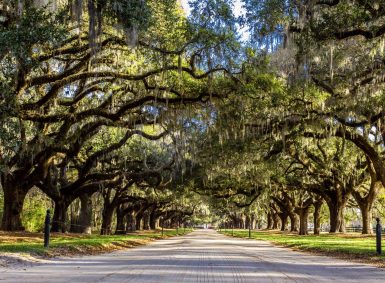

Drayton Hall Plantation SC: 11 Incredible Historical Facts
Drayton Hall Plantation In Charleston SC:
A Pillar of History in the Heart of the South
Drayton Hall in Charleston SC is one of the many plantations you can visit to get a glimpse of colonial history, but it stands out from the crowd because it’s the oldest unrestored historic site open to the public in America.
I remember first visiting Drayton Hall when I was writing my Civil War novel , Shades of Gray. The tour had a lasting effect on me, and some aspects of the plantation’s storied history are now part of this award-winning novel.
Part of the allure of this plantation is that the history of Drayton Hall predates the Revolutionary War. The property harbors hidden layers and many untold stories that go beyond the typical guided tour.
Keep reading about this historical Southern gem and learn things you won’t find anywhere else.
Past Lane Travels contains affiliate links and is a member of the Amazon LLC Associates Program. If you make a purchase using one of these links, we may receive compensation at no extra cost to you. Read our disclaimer for more information.
Ready to book your Drayton Hall tour? Built in the 1740s, it is the best preserved colonial plantation house in the United States.
Drayton Hall History
John Drayton, who was born on the adjoining Magnolia Plantation , acquired the Drayton Hall property in 1738 at the age 23. Amazingly (and thankfully) it remained in possession of the Drayton family for seven generations and is now being preserved by a non-profit organization.
This precisely symmetrical Georgian house looks immense and immaculate against a blue sky, making it hard to believe it has survived earthquakes, war, pestilence and pillage.
One of the main reasons I’m drawn to the history of Drayton Hall is that the house itself has been preserved rather than restored .
This allows visitors to step directly into the past and experience its authentic beauty and raw history.
Visiting Charleston? Get your multi-activity pass for a great price! Tour pass with more than 40 attractions!
11 Little-Known Facts About Drayton Hall
As I said before, there are other plantation tours in Charleston SC. , but Drayton Hall Plantation has a really unique history. Here are some of the little-known facts that make Drayton Hall so special.
1. An Old House With Original Architecture
Thanks to a technology called dendrochronology (a tree-ring dating technique), historians know that the timbers used to support the roof of Drayton Hall were felled in December of 1747 or January of 1748.
To put that in perspective, when Drayton Hall was built by John Drayton, George Washington was 6 years old and the town of Charleston was 70. (Amazing!)
2. Original Furniture
The Drayton Hall desk and bookcase combination is thought to be the finest piece of furniture surviving from the American colonies. The piece includes beautiful inlays and 14 secret compartments!
These pieces were crafted from rare woods from six continents. After undergoing a a delicate furniture conservation at Colonial Williamsburg and a loan to another museum, the desk is back at Drayton Hall.
3. Lots of Bricks
More than 366,000 bricks were used to construct the house. Stray fingerprints left in the bricks are the signatures of the enslaved who fired, moved, and placed each brick.
4. Only Plantation House Spared
When Union troops burned their way along the Ashley River in 1865, Drayton Hall Plantation was among the only ones left unscathed. There are a number of legendary tales about why , but the one that stuck with me (and that appears in my novel Shades of Gray ), is that Union troops were led to believe the house was being used to treat small pox victims and so they steered clear.
Powered by GetYourGuide
5. The Last Drayton At Drayton Hall
Drayton Hall was owned by seven generations of the Drayton family before becoming a historic site. Miss Charlotta, the last Drayton to live in the house, passed away in 1969. She kept the house the way it was while living there, with no furnace, plumbing, electricity or running water!
When I walked through, I imagined the many generations of Draytons who fell in love, had babies, held parties, and celebrated in this house. The pencil marks of the height of the children can still be seen on the walls.
Another Amazing Fact : Some descendants of the enslaved population lived on the property until 1960.
Related Post: You can also tour the nearby McLeod Plantation in Charlestown .
6. Drayton Hall’s Connection With Our Fourth of July Celebration
Back in 1778, when the delegates in Philadelphia debated how Americans should observe their newly declared independence, William Henry Drayton argued for the day to be one of celebration with “certain grand fireworks,” rather than one of “fasting and mourning” as another South Carolinian proposed.
In the end, William Henry’s more popular idea won, and we still celebrate with fireworks to this day.
7. History Of Drayton Hall And The Art Of Grilling
By 1794, the Draytons celebrated July fourth in another way that’s popular today as well. William Henry’s brother Charles (the second owner of Drayton Hall) celebrated July 4 with a beef barbeque!
Leftovers Anyone? Charles noted in his journal: “ Killed an ox to be cured in the barbecue manner . It is said the meat so cured will keep perfectly, & be more juicy and fresh, than salted or pickled.”
Almost two months later, on August 30, Charles recorded: “ the ox killed July 4. was all eaten 2 or 3 days ago. that is 7 lb daily for 56 days or 8 Weeks .”
8. Mystery Carving Over The mantel
You can’t help but be in awe of the decorative carvings throughout Drayton Hall. The eighteenth century craftsmanship is truly stunning.
But the overmantel cartouche in the Great Hall has lots of people wondering what it is. Possum? Weasel? Maybe a fox? You decide.
The plaster ceilings are truly exceptional works of art. The ceiling in one of the parlors at Drayton Hall is one of the only original hand-carved plaster ceilings that remain intact in North America.
9. A Feud In Drayton Hall Plantation History
Slave labor was used to help build the house and sustain the rice and indigo plantation for more than a century, yet the Drayton family is linked by marriage to the Grimke sisters of Charleston. These sisters were abolitionists and were so ardent that they left the South permanently in 1832.
10. History Of Drayton Hall Still Being Uncovered
Drayton Hall remains an active archaeological site. There were archeologists on site when I was there, who had uncovered the foundation of the left flanker of the house that no longer stands.
There were flankers on each side of the house and a colonnade connecting them at one time.
Fun Fact: Only 2 percent of the property has been excavated, yet more than 1 million artifacts have been discovered.
11. A National Historic Treasure
Because Drayton Hall has barely been touched with ‘improvements’ even after more than 200 years, it remains one of the most treasured 18th-century structures in the United States.
Want to see something else you won’t find on any tour of Drayton Hall Plantation? Check out this video about the graffiti on the walls.
A Glimpse Inside The Drayton Hall Plantation House
Drayton Hall was the center of John Drayton’s extensive indigo and rice planting venture. Not only is it one of the finest examples of Georgian Palladian architecture in America, it is the only surviving colonial plantation house on the Ashley River.
The stairs at Drayton Hall rise 27 feet and retain most of their original hand-carved mahogany details. According to records, the walls were painted a buff color in the eighteenth century, and the beautiful mahogany was a brilliant vermillion.
In the cellar, you can see the large fireplace where enslaved people cooked meals for the Drayton family.
Visiting Drayton Hall Plantation
Drayton Hall is located 12 miles northwest of Charleston SC.
The ribbon of sandy road that winds gently through a massive oak allee’ on your approach to Drayton Hall is the stuff that dreams are made of.
And when the trees suddenly end, the view reveals a wide expanse of lawn stretching out in front of a Georgian-style house that you can just tell, holds lots of secrets.
Drayton Hall Tours
Drayton Hall plantation is open Wednesday to Monday. Closed on Tuesdays.
The one-hour guided house tour is available at 9 a.m., 10 a.m., 11 a.m., noon, 1:30 p.m., 2:30 p.m. and 3:30 p.m.
All-Inclusive Tickets $32 per person
$15 youth (ages 7-15) online/ $18 on-site
Children under 7 are free
Additional attractions include:
- Lapsed gardens and nature trails along the Ashley River (including the fantastic view across to North Charleston).
- Drayton Hall has a lovely Museum Shop.
- An 18th-century African-American cemetery features an entry-portal designed by famed Charleston metal-worker Philip Simmons.
Is Drayton Hall Haunted?
This is always a question people ask about old houses, and in this case, it might be true.
In fact, many people—visitors and staff alike—say: “Absolutely yes, Drayton Hall is haunted.”
Several visitors believe they have captured photographic evidence of ghosts or other spiritual beings inside the house, including shadows, circles, or odd bright areas.
Did you know you can take a haunted horse and carriage tour in Charleston?
Drayton Hall was featured on an episode of America’s Most Haunted Places that aired on The Travel Channel in 2003 with the claim that original family members are said to still walk through the house.
Staff members were interviewed and described their encounters with something they felt sure was “not of this world.” Others have also reported unusual experiences in different areas across the grounds.
One thing I know for sure… you can feel the presence of the past at Drayton Hall.
If You Dare: Take this Charleston Ghost and Graveyard Night-time Tour !
The Drayton Family Of South Carolina
Drayton Hall’s survival from 1748 to the present day can be attributed to a bit of luck and a lot to the Drayton family who safeguarded it through hurricanes, the Revolutionary and Civil Wars, the earthquake of 1886, and, most recently, rampant development.
William Henry Drayton, the son of the owner, was born at Drayton Hall in 1742. After spending much of his youth studying in England, he returned to South Carolina in 1763.
As a fierce supporter of America’s independence, William Henry served as a delegate and later president of the provincial South Carolina Congress.
His speeches about breaking free from Great Britain are considered to be among the best in American history. Once America declared independence, he was appointed a member of the Continental Congress.
Who Owns Drayton Hall?
After a 1973 lease from the Drayton family, the Historic Charleston Foundation, the National Trust, the state of South Carolina and the Federal Government pulled together $680,900 to acquire the house and 633 acres around it.
Drayton Hall is now owned by the National Trust for Historic Preservation and managed by the Drayton Hall Preservation Trust, which opened the house to the public in 1976
The National Trust is the group I turn to find historic hotels . There is nothing better than finding a beautifully restored accommodation when traveling. Make sure you check out my reviews of hotels where I’ve stayed.
Plan Your Trip To Charleston
The Charleston, S.C. area has many plantations, including Hopsewee , home to a signer of the Declaration of Independence, and Hampton , which is also rich in Revolutionary War history. Both area located north of Charleston and south of Georgetown.
The picturesque Boone Hall can be found just outside of the city, and Middleton Place Plantation , and McLeod Plantation are located just down the road from Drayton Hall.
Get Your Tickets For A Charleston Plantation Tour
Magnolia Hall and Gardens : One of my favorites. You can wander the beautiful grounds for hours.
Boone Hall : Picturesque oak trees and original slaves quarters.
Middleton Place: One of the most beautifully landscaped gardens.
McLeod Plantation: Tour focuses on the enslaved and Gullah culture .
Need A Hotel Near Drayton Hall?
Help planning your trip.
Find the perfect accommodation with Booking.com . From luxury hotels to budget-friendly options, they have a room for every preference, including pets and pools.
Discover the best tours and activities with Viator or Get Your Guide . Explore iconic landmarks, take guided tours and immerse yourself in the history and vibrant culture of Gettysburg.
Rent a car with Discover Cars and enjoy the freedom to explore the town at your own pace. Discover hidden gems, explore the countryside and make the most of your trip.
Need a flight? Check FareDrop for the best deals.
The post Drayton Hall Plantation SC: 11 Incredible Historical Facts appeared first on Past Lane Travels .


IMAGES
VIDEO
COMMENTS
Magnolia Plantation 3550 Ashley River Rd Charleston SC 29414 Magnolia Plantation and Gardens was founded in 1676 by the Drayton family. Attractions include a nature train tour, petting zoo, wildlife observation tower, nature trails, 18th-century herb garden, Biblical garden, horticultural maze, an African-American history tour, and a nature ...
These plantations are some of the most amazing places you will see and enjoy during your stay. 1. McLeod Plantation. Location: 325 Country Club Dr. Charleston, SC 29412. Hours of operation: Tuesday - Sunday 9 am to 4 pm. Admission: $20 - ages 13 and up. $15 - ages 60+. $6 - ages 3 - 12.
5. The Middleton Place tour is an all-inclusive tour experience of one of Charleston's most beloved historic sites. Chicora Tours prides itself on being the only tour operator in Charleston to offer this tour. Our Middleton Place tour has smaller groups sizes, transportation in a luxurious Mercedes-Benz Sprinter van with licensed tour guides to ...
3. Drayton Hall. 3380 Ashley River Road, Charleston, S.C. Drayton Hall Plantation offers a memorable Charleston tour. Drayton Hall's history dates back to 1738, when it was established by John Drayton. The plantation played a pivotal role in the development of South Carolina's rice culture.
Charleston, SC Plantations & Gardens It's easy to forget that these preserved plantations and gardens are just minutes from the hustle and crowds of downtown Charleston. ... Plantation Tours (4) Plantations & Gardens (9) Private Guides (8) Specialty Tours and Experiences (25) Tour Packages (10) Walking Tours (24) Water Tours (24) Location ...
Middleton Place Charleston Plantation, House Tour, Restaurant, and Gardens. A Charleston Must-See Tourist Attraction, Historic Landmark Museum, Stable Yards, and Garden Tour. info/tickets. Middleton Place. Host an Event. Weddings; ... 4300 Ashley River Road Charleston, SC 29414
325. Visit Boone Hall Plantation and Gardens on this 4.5-hour tour from Charleston, South Carolina. One of the oldest working plantations in the United States, Boone Hall was founded in 1681 and still grows crops. During your tour led by a guide in period costume, you'll see the plantation's slave quarters and learn about its history and modern ...
We offer custom tailored private and VIP tour experiences to explore one of Charleston's best kept secrets. Take a guided tour of the historic romantic gardens, explore the heritage of the property within our archives, or enjoy champagne at sunset on the Ashley River! ... Charleston, SC 29414 (843) 571-1266 [email protected] ...
Magnolia Plantation & Gardens, on the banks of the Ashley River near Charleston, SC, is one of the Lowcountry's oldest public attraction. It is a phenomenal horticultural destination, a significant historic and cultural site, and a place of unparalleled natural beauty.
Plantation Tour Combination Tickets; Spring Events; K-12 Field Trips; Group Tours; Private Guided Tours; Getting Here; FAQs; The Estate. Preservation; Architecture; Landscape; ... Charleston, SC 29414. Get Directions. Hours. Drayton Hall's main house and landscape are open to the public daily from 9 am to 5:00pm* (gate closes at 3:30 pm). ...
2. Boone Hall Plantation & Gardens. A very popular Charleston tourist attraction, arguably the most visited plantation, you're sure to have seen Boone Hall at the top of many a Charleston sightseeing list. Some come here just for its famous Avenue of Oaks, and I can attest that it's a beautiful sight.
Haunted Evening Horse and Carriage Tour of Charleston. 1,976. from $50.00. Charleston, South Carolina. 90-Minute Charleston City Sightseeing Bus Tour. 820. from $37.10. Charleston, South Carolina. SMALL group Historic Walking Tours with certified guides.
McLeod Plantation Historic Site is the closest plantation and can be reached by a 10 minute drive or 20 minute bus ride from downtown Charleston. Drayton Hall, Boone Hall, Middleton Place, and Magnolia are all about a 30 minute drive away. Charleston Tea Garden is about a 40 minute drive away.
At Magnolia Plantation and Gardens in Charleston, stroll through the romantic garden, Audubon Swamp, Ashley Riverwalk, historic Magnolia house, and learn about the history, horticulture and nature of the low country. ... Private & VIP Tours Host an Event What's Happening ... Charleston, SC 29414 (843) 571-1266 [email protected]
The plantations of Charleston which are open to the public are all located about ten miles outside the city area of Charleston, SC. Drayton Hall is the oldest and only preserved and accurate plantation house that can be visited and toured in Charleston. The house, which you can tour daily from 9 am to 3 pm, is c. 1738.
Combination Package. $49 Adult. $35 Student (with ID) $30 Child Ages 6-13. Children ages 5 & under are free. Includes Middleton Place general admission, House Museum Tour, and admission to the Edmondston-Alston House, a House Museum of the Middleton Place Foundation located in downtown Charleston. Middleton Place. Daily.
About 15 miles away from Charleston on the Ashley River, lies the oldest unrestored plantation house in America. John Drayton, actually born on the nearby Magnolia Plantation, built this residence for himself in 1738. Having escaped the Civil War, the house has also survived the fate of being modified for tourists and stands well preserved.
Top 10 Best Plantation Tours in Charleston, SC - April 2024 - Yelp - McLeod Plantation Historic Site, Magnolia Plantation & Gardens, Boone Hall Plantation, Middleton Place, Drayton Hall, Secret Charleston, Aiken-Rhett House Museum, Edmondston-Alston House, Old South Carriage Company, Old Slave Mart Museum
Discover four different plantations and a historic church during a small-group highlights tour in Charleston. Travel around in a comfortable, deluxe van with a guide who knows the Pre-Civil War Era of US history well. Stops during this Charleston plantation tour include the McLeod Plantation Historic Site, Drayton Hall, Magnolia Plantation and Gardens, Middleton Place, and Old St. Andrew's ...
The ownership and management of Boone Hall Plantation & Gardens wants all our visitors to have an enjoyable and positive experience during their time on the plantation. For questions, please call Boone Hall Plantation at. 843.884.4371 :: Mon - Fri 9 AM - 5 PM. BUY TICKETS.
Boone Hall Plantation. Boone Hall is another one of the best plantations in Charleston. You will find Boone Hall Plantation and Gardens in the Mount Pleasant area of Charleston. The plantation dates back to 1681. Englishman Major John Boone named this plantation after his family.
After a 1973 lease from the Drayton family, the Historic Charleston Foundation, the National Trust, the state of South Carolina and the Federal Government pulled together $680,900 to acquire the ...
1214 Old Ivy Way house in Mount Pleasant, SC, is available for rent. This house rental unit is available on ForRent.com, starting at $4,000 monthly.
Visit Boone Hall Plantation and Gardens on this 4.5-hour tour from Charleston, South Carolina. One of the oldest working plantations in the United States, Boone Hall was founded in 1681 and still grows crops. During your tour led by a guide in period costume, you'll see the plantation's slave quarters and learn about its history and modern-day use. Select a morning or afternoon departure time ...
330 Rose Marie Ln house in Charleston,SC, is available for rent. ... 330 Rose Marie Ln is near Charleston AFB/International, located 14.0 miles or 25 minutes away. Airports Distance; Airports Distance; ... including Magnolia Plantation and Gardens, Charles Towne Landing State Historic Site, and Ravenel Caw Caw Interpretive Center. ...
Add to Favorites. Visit for a fun and educational one-of-a-kind experience. See & hear how tea is grown and made. Free Factory Tour, unique Gift Shop, great views and all the tea you can drink! Website. It's easy to forget that these preserved plantations and gardens are just minutes from the hustle and crowds of downtown Charleston.
Alta Shores is located at 2605 Elms Plantation Blvd N. Charleston, SC and is managed by GrayCo Properties, LLC, a reputable property management company with verified listings on RENTCafe. ... Tour via video chat. Self guided tour. Schedule tour. OR. Send message. Alta Shores (854) 895-1531. Open today: 9:00 AM-6:00 PM. Nearby rentals Based on ...